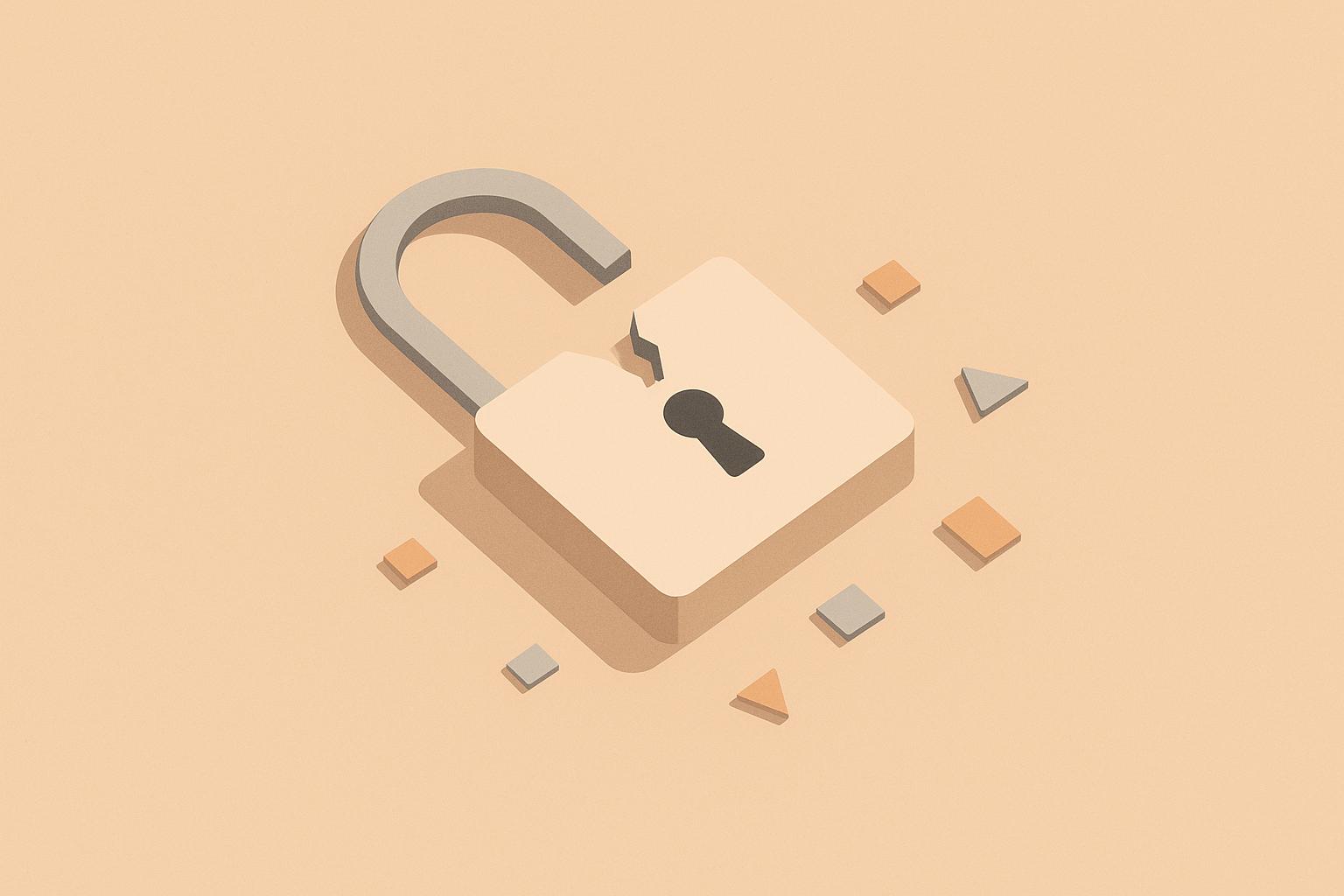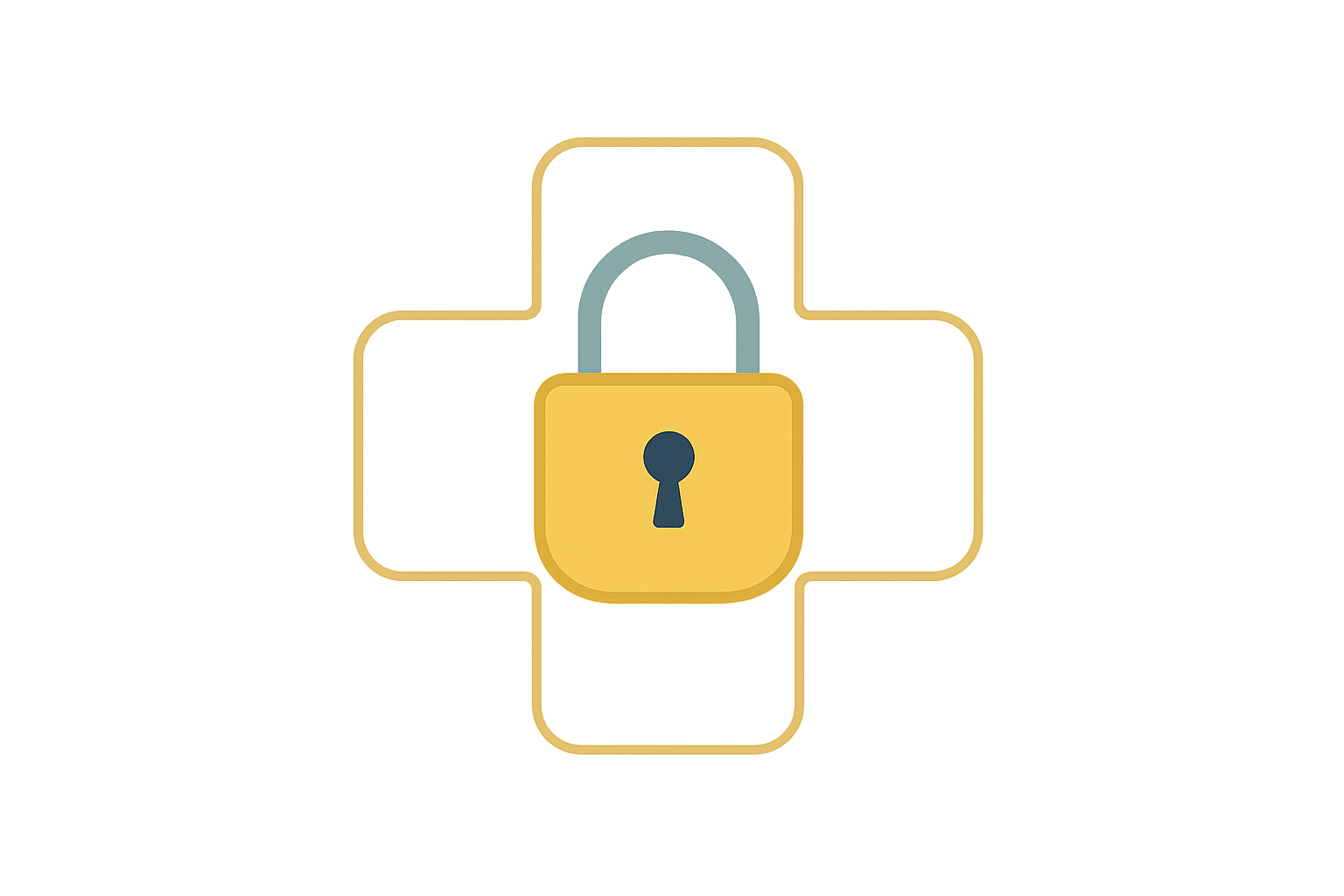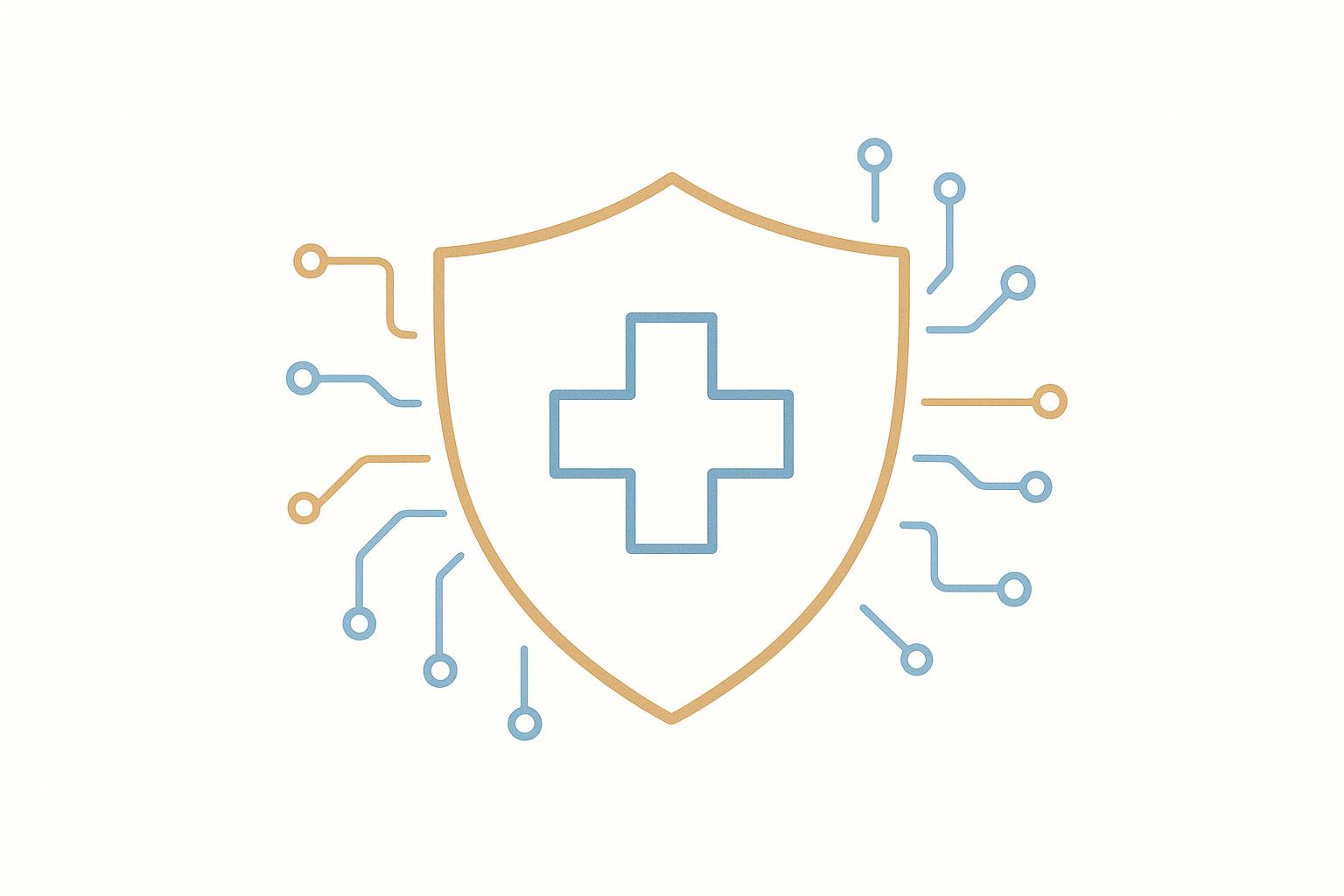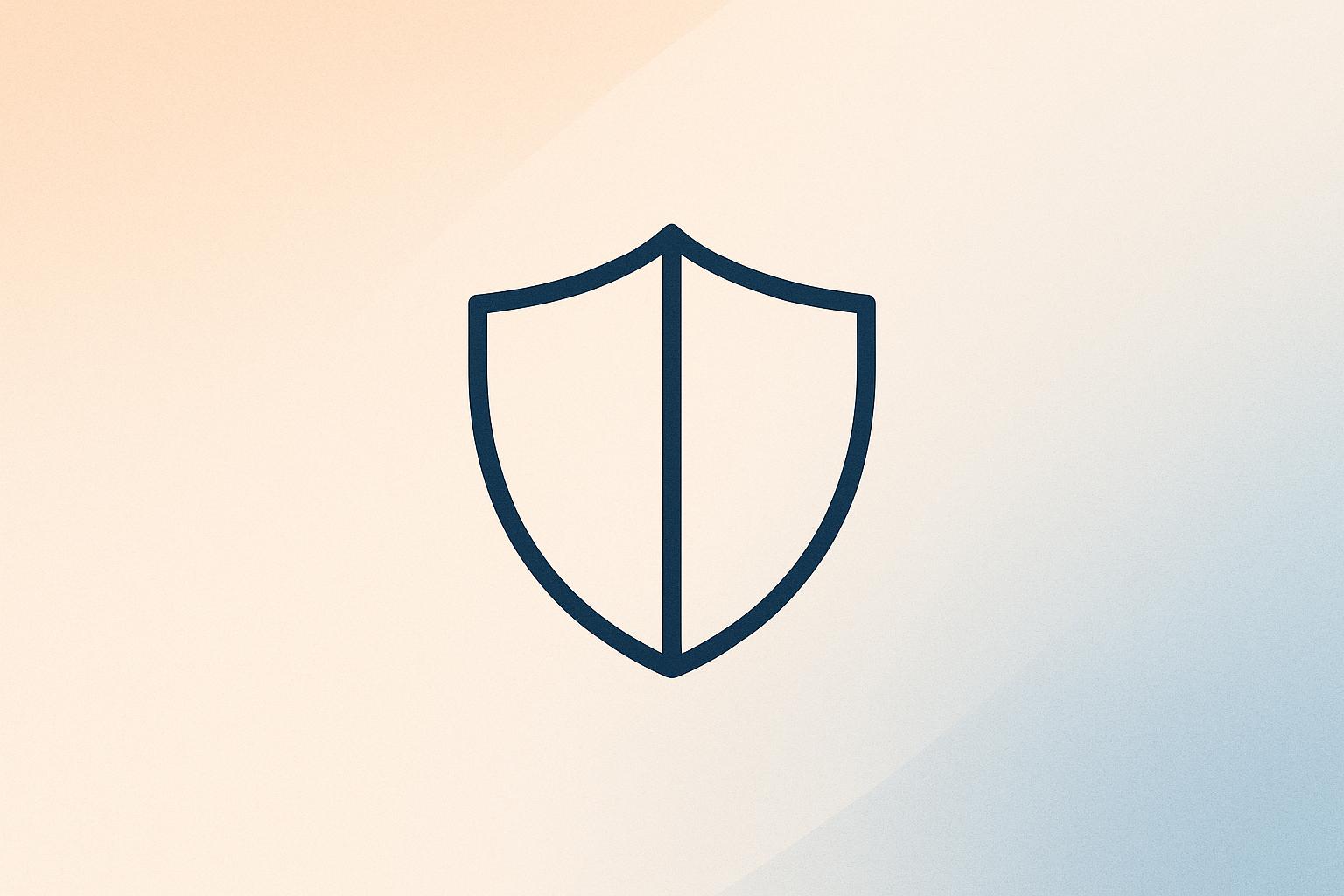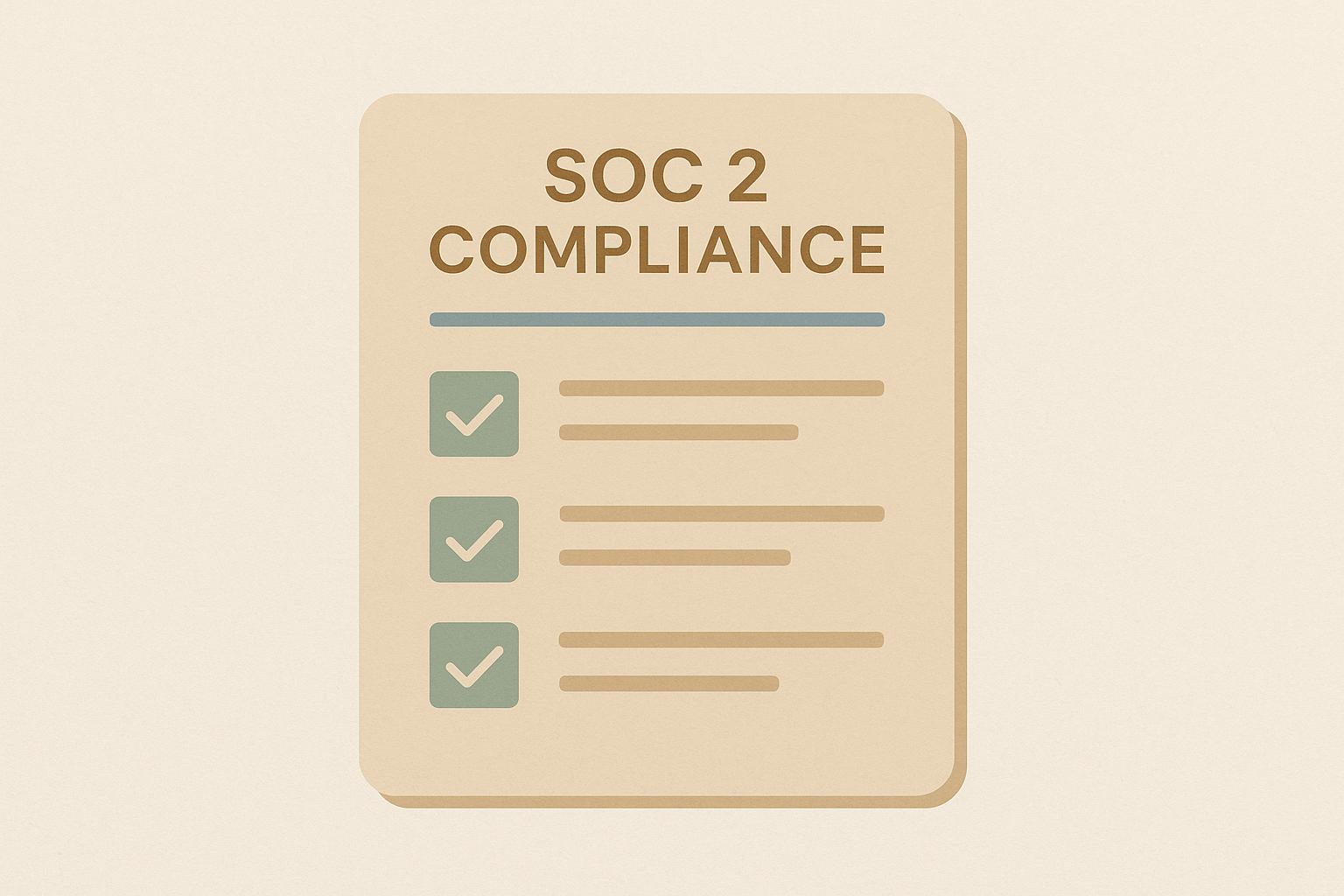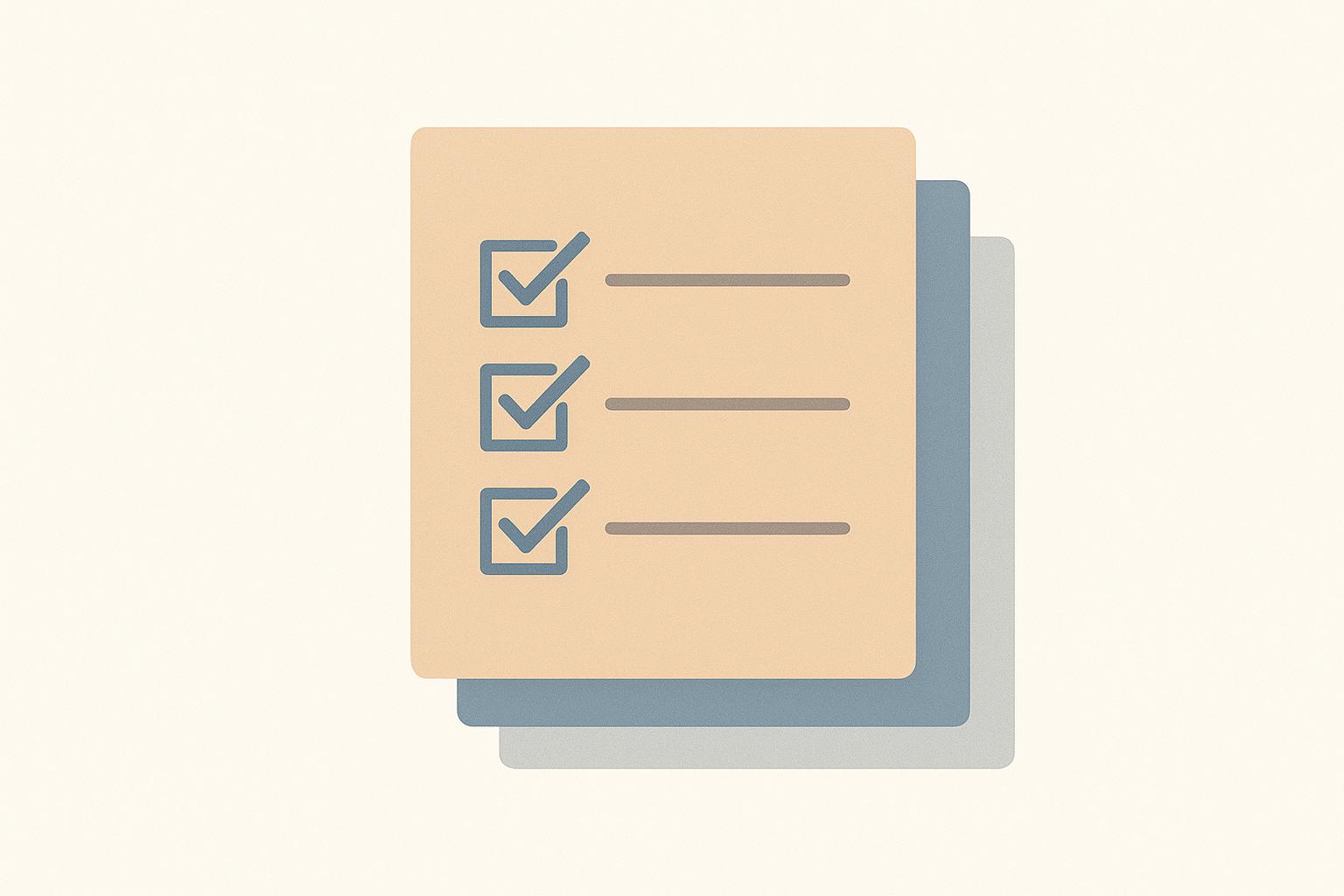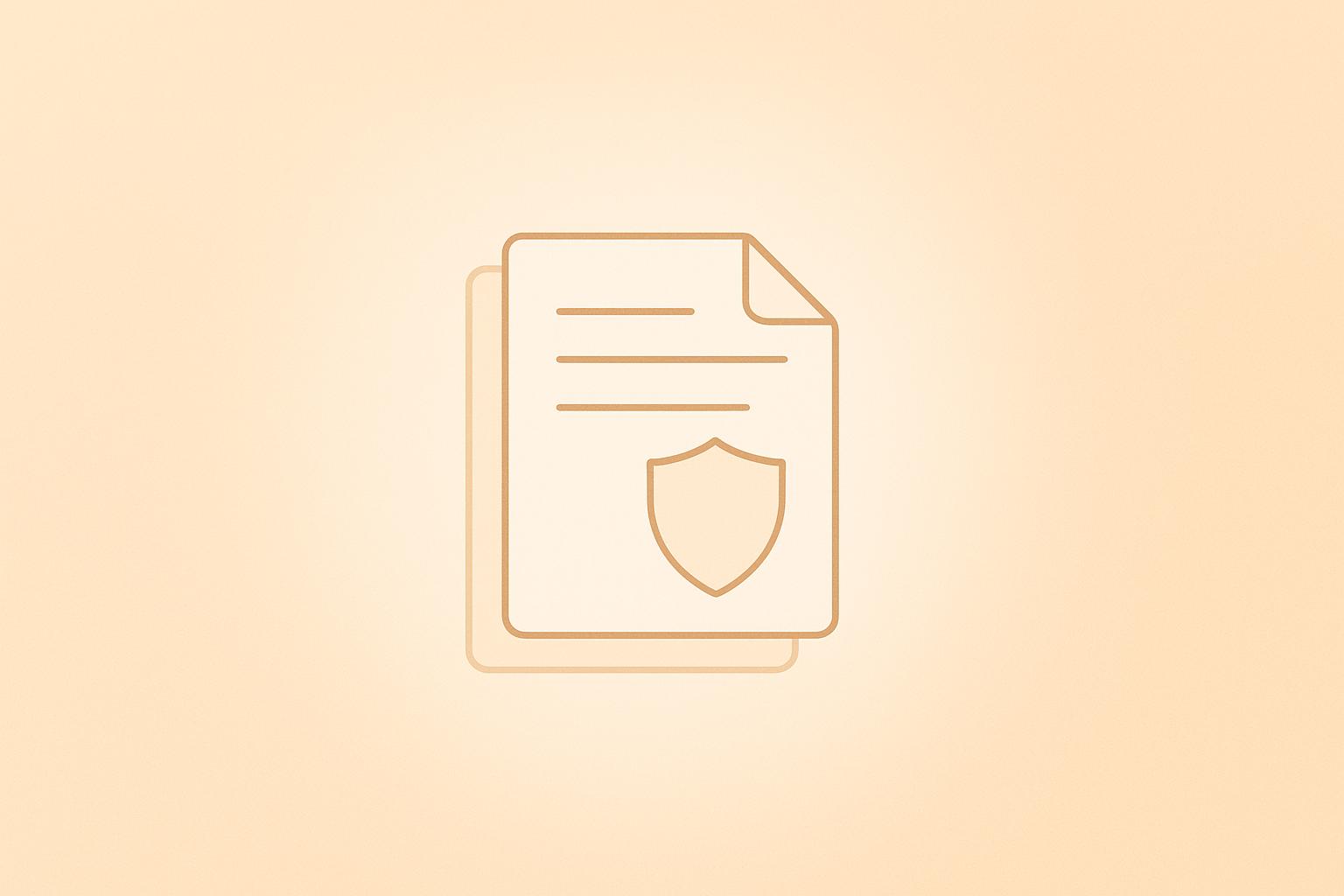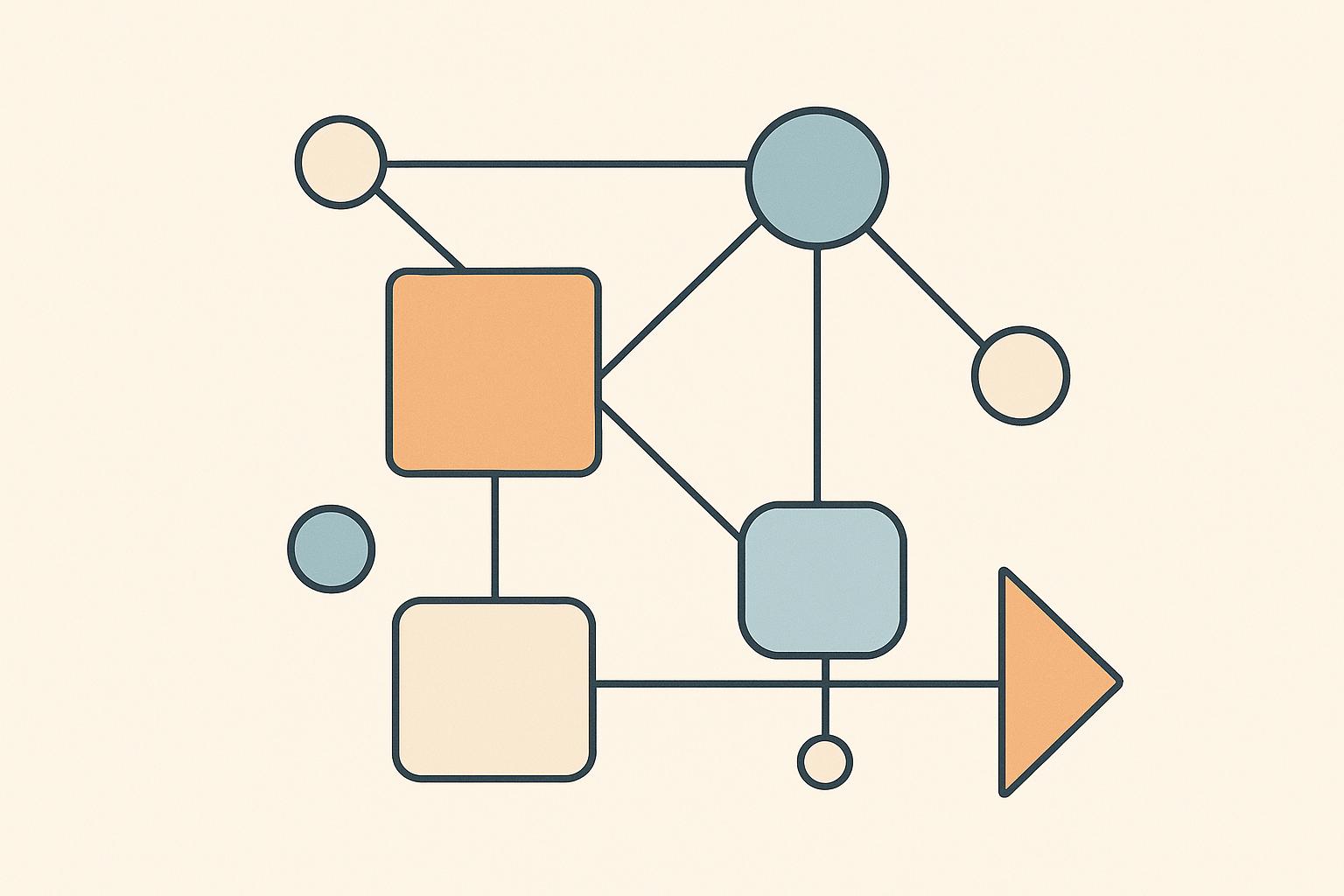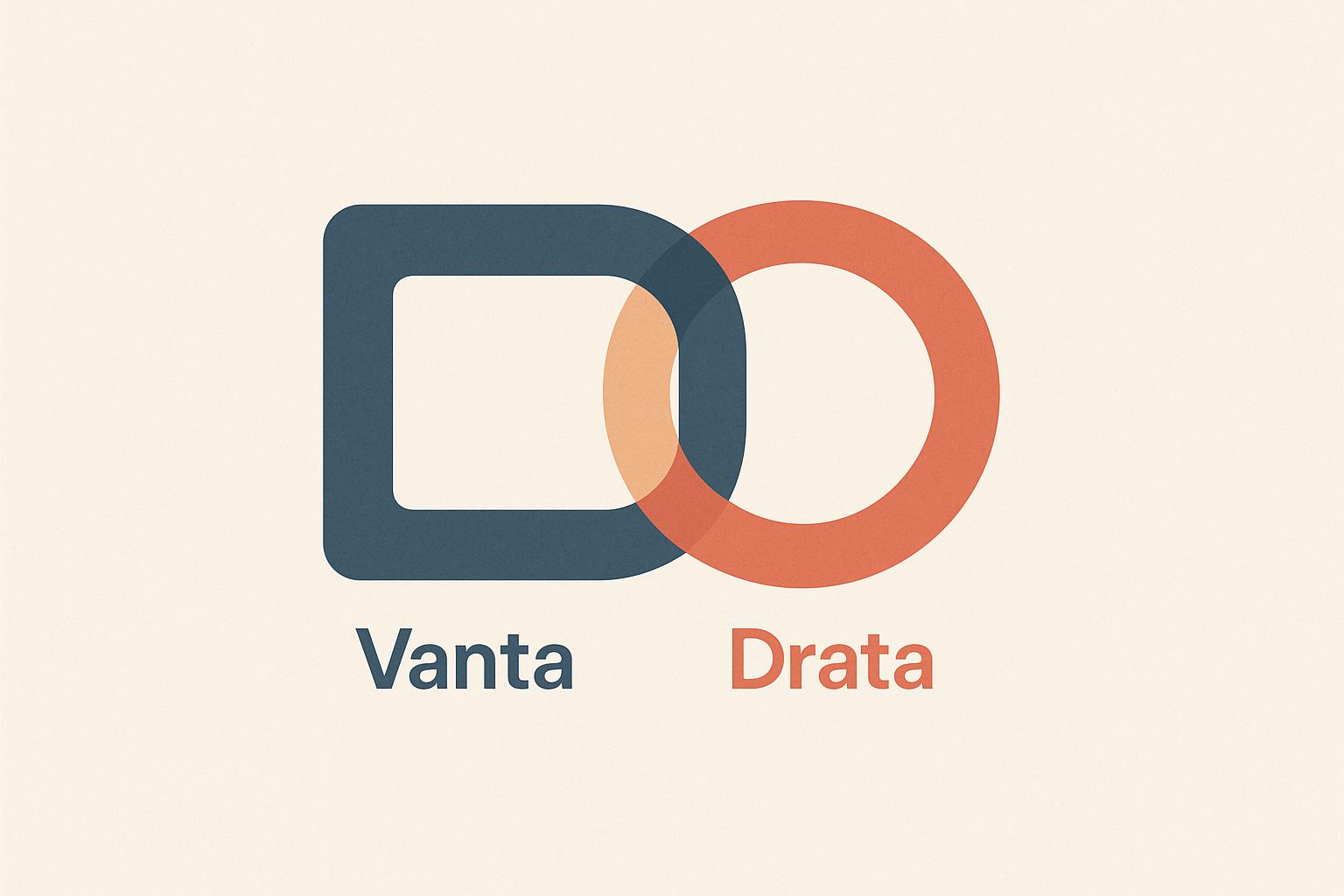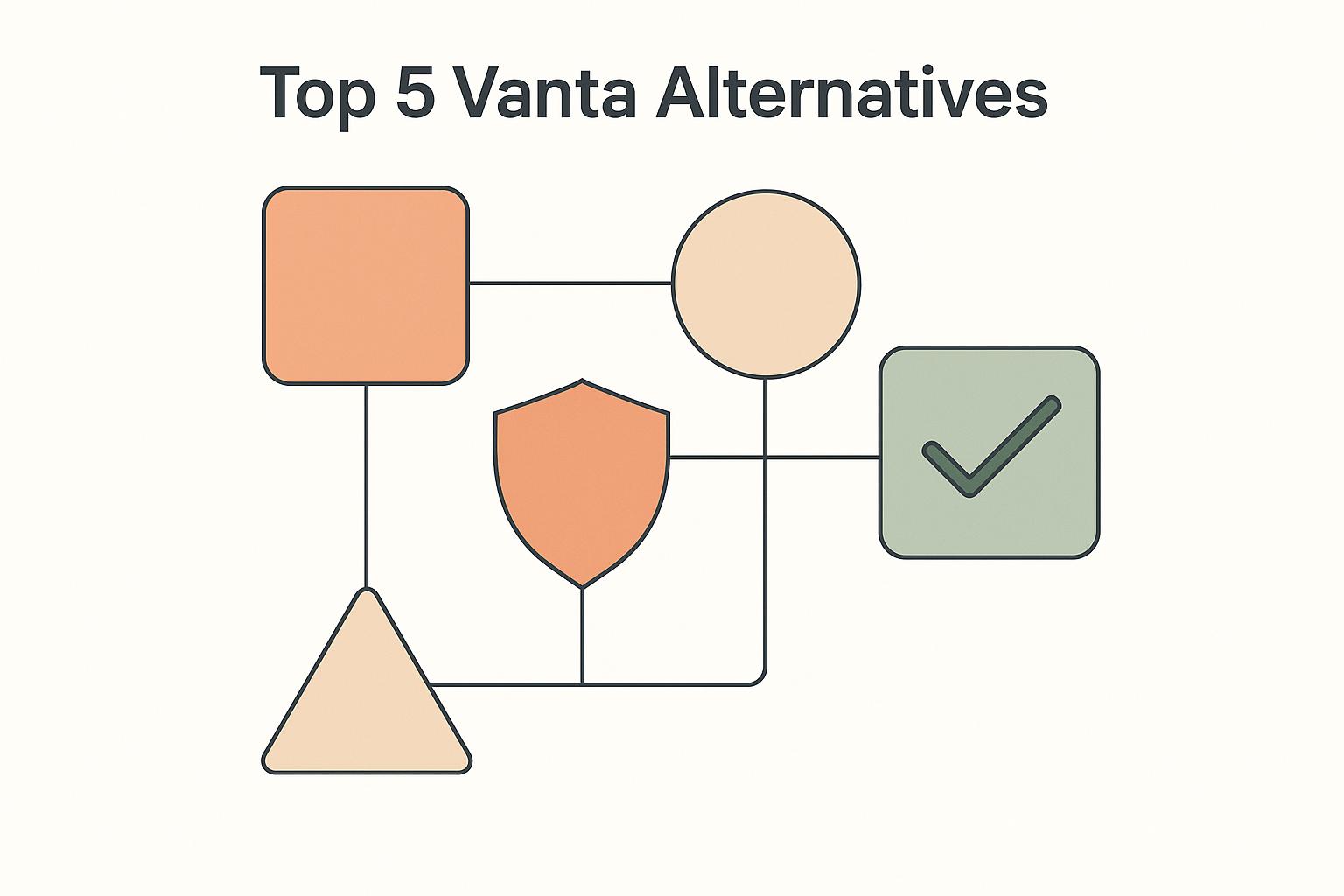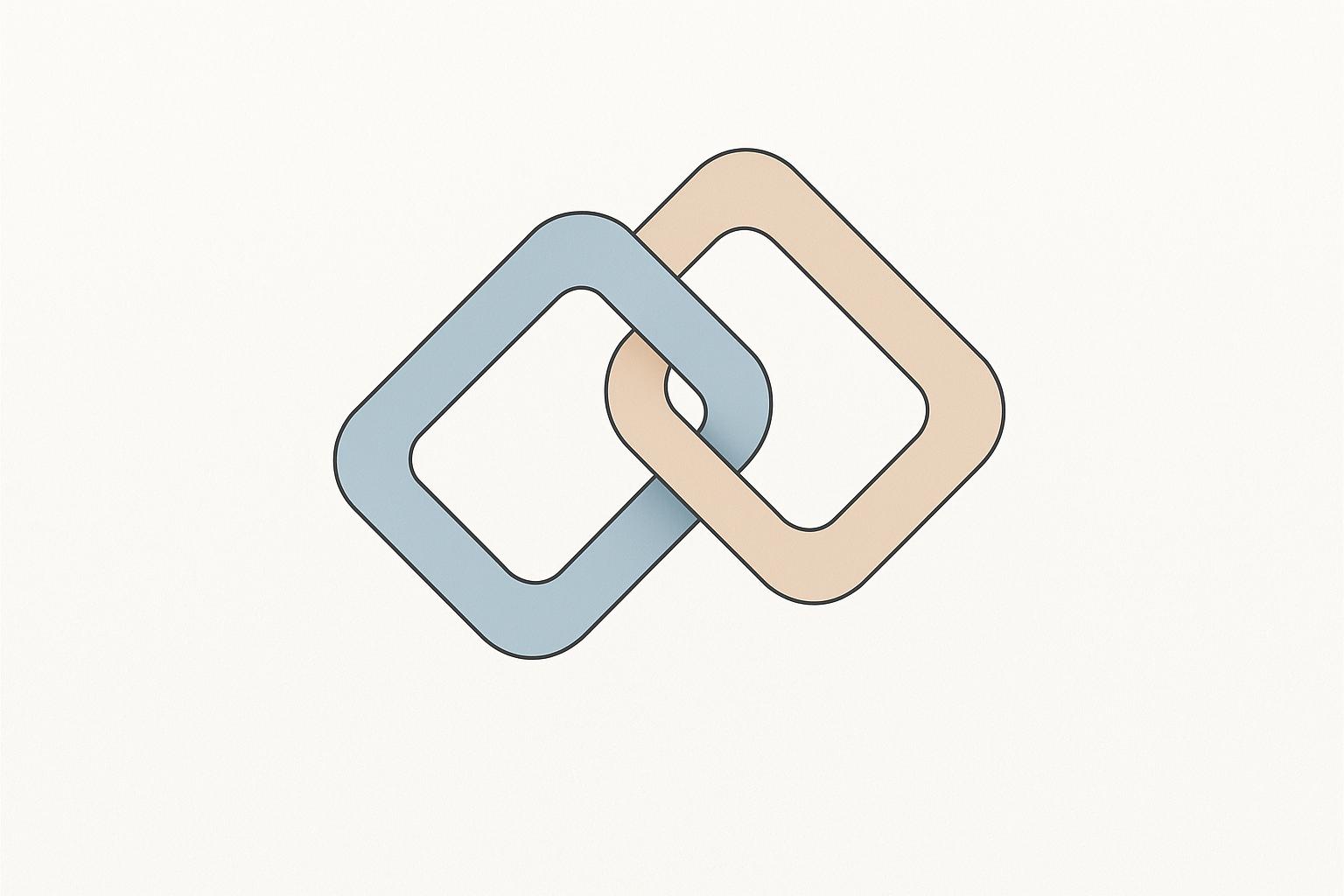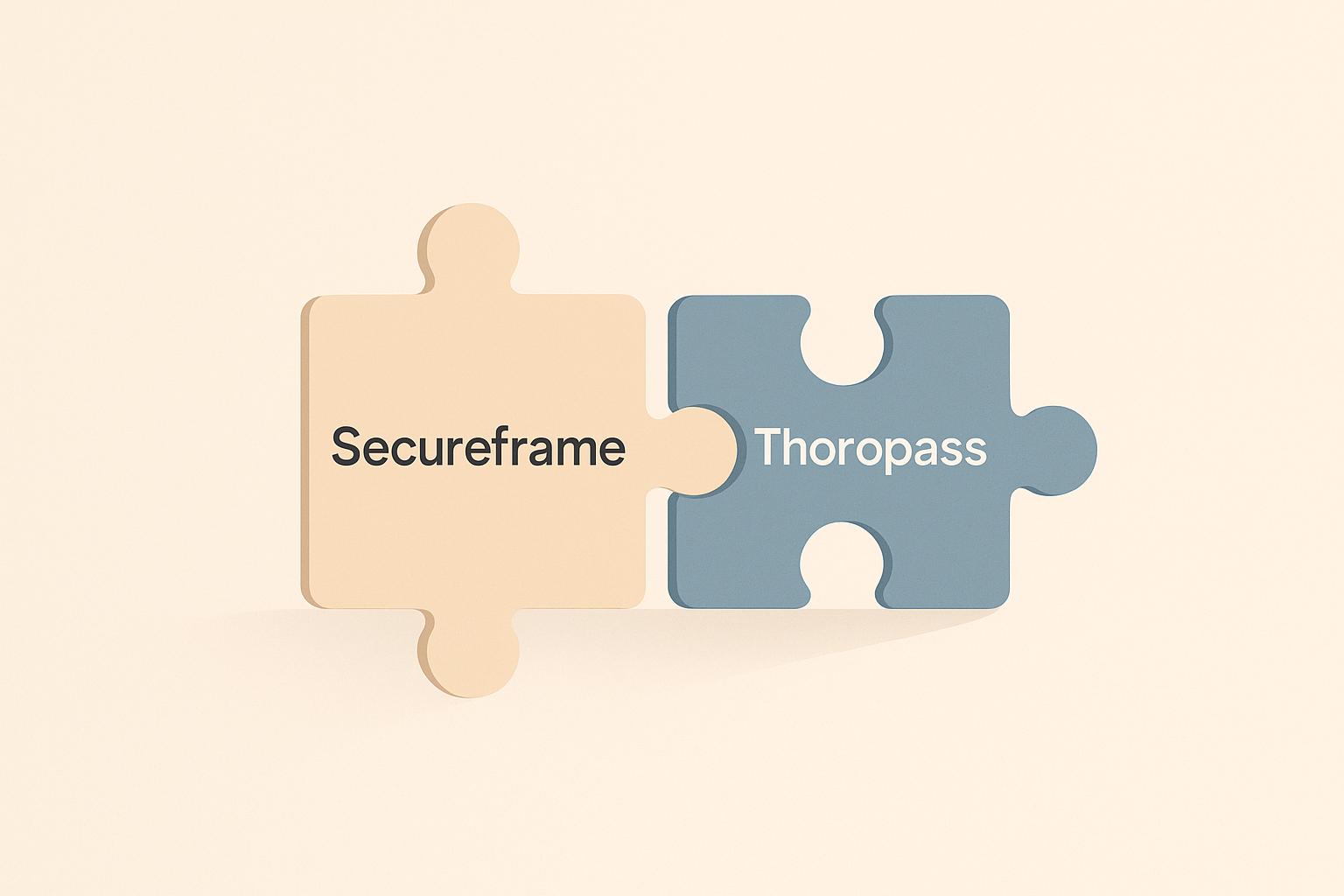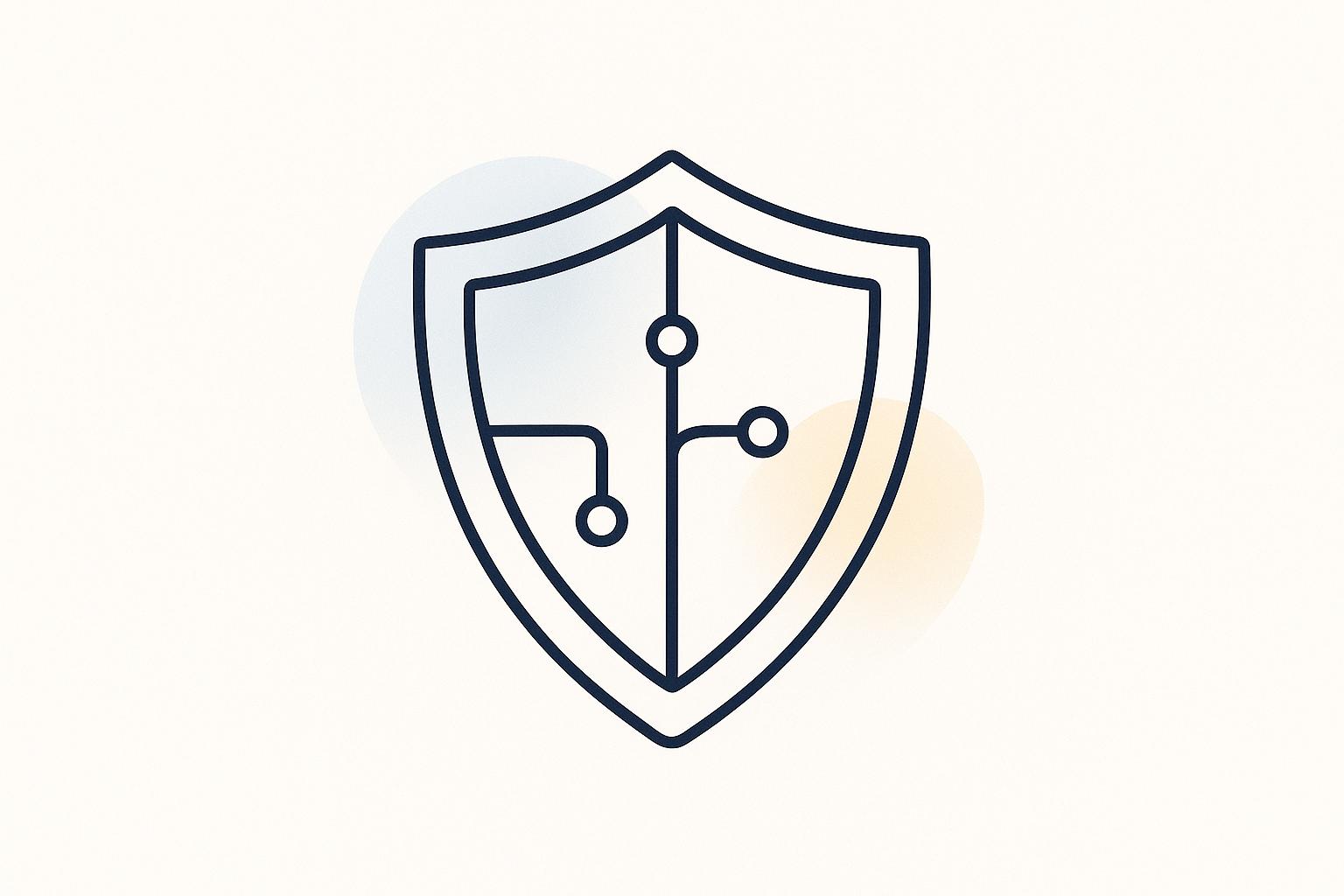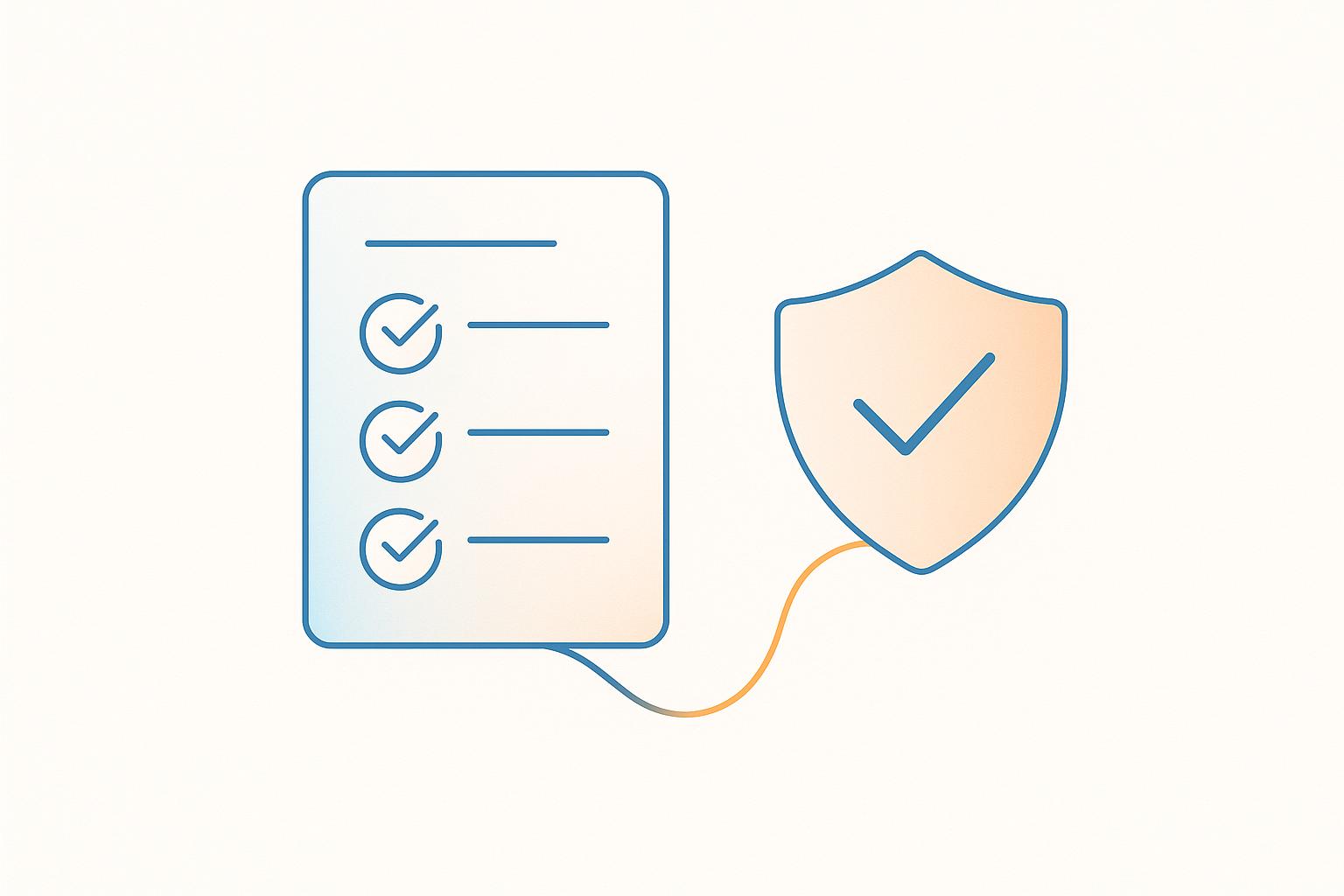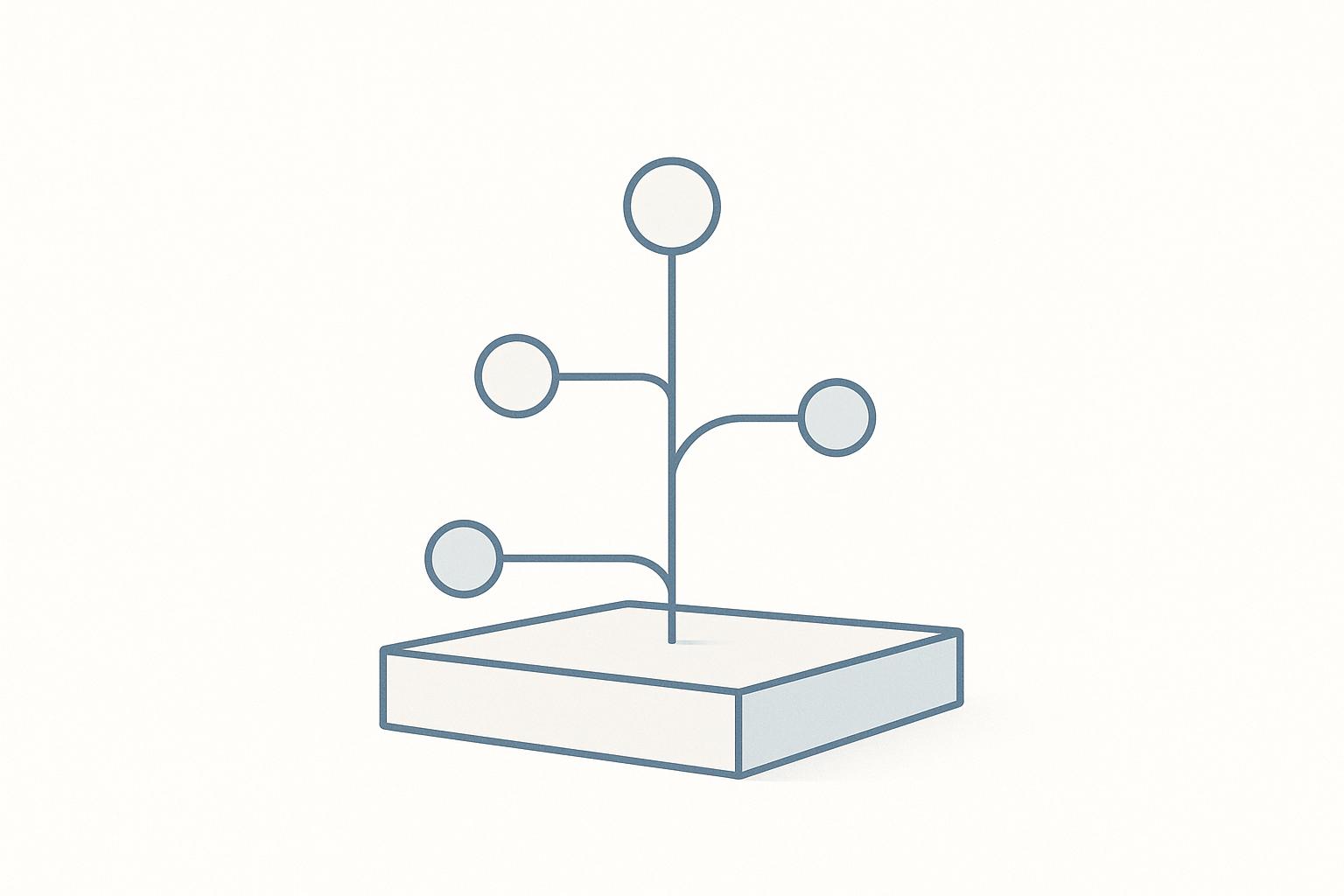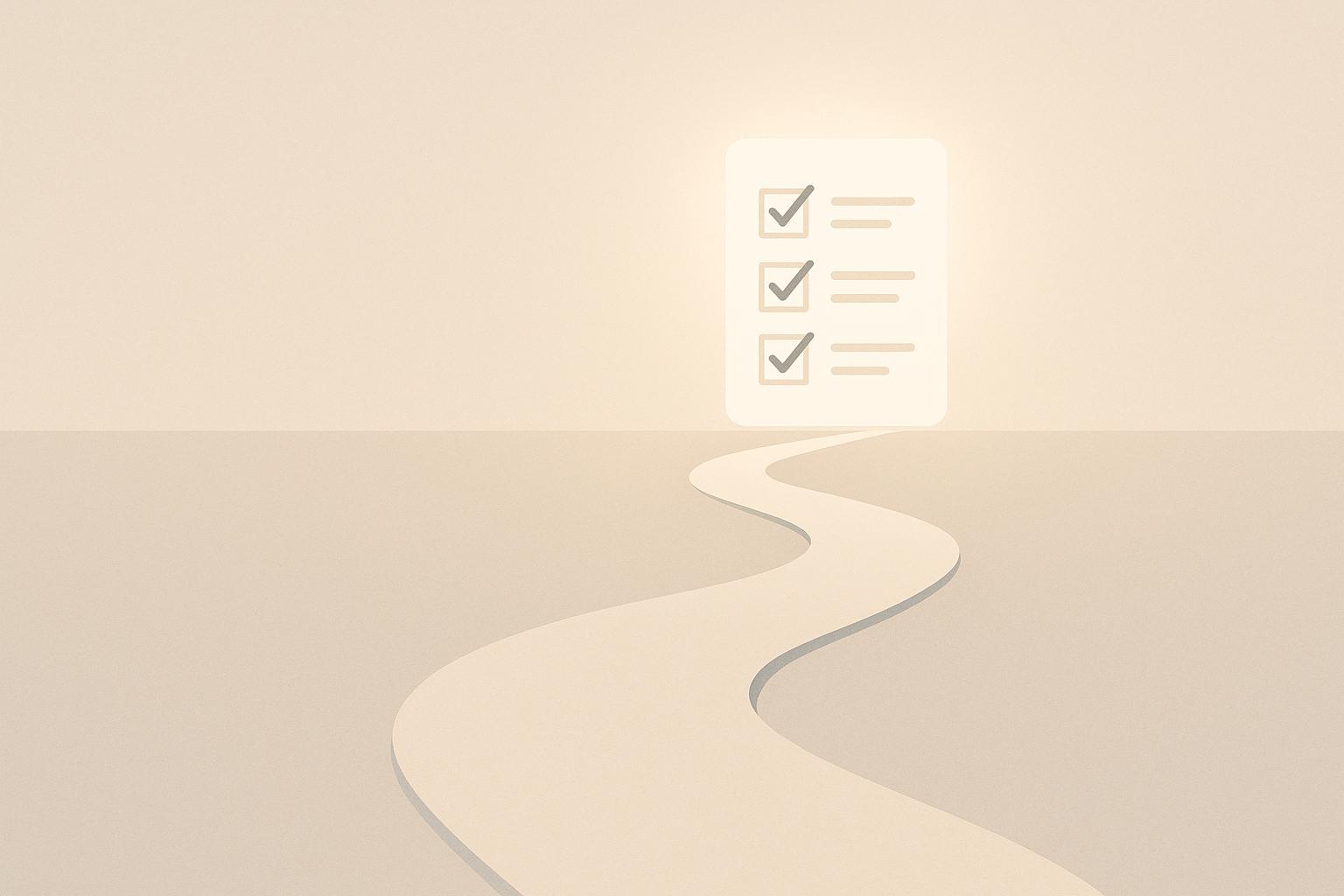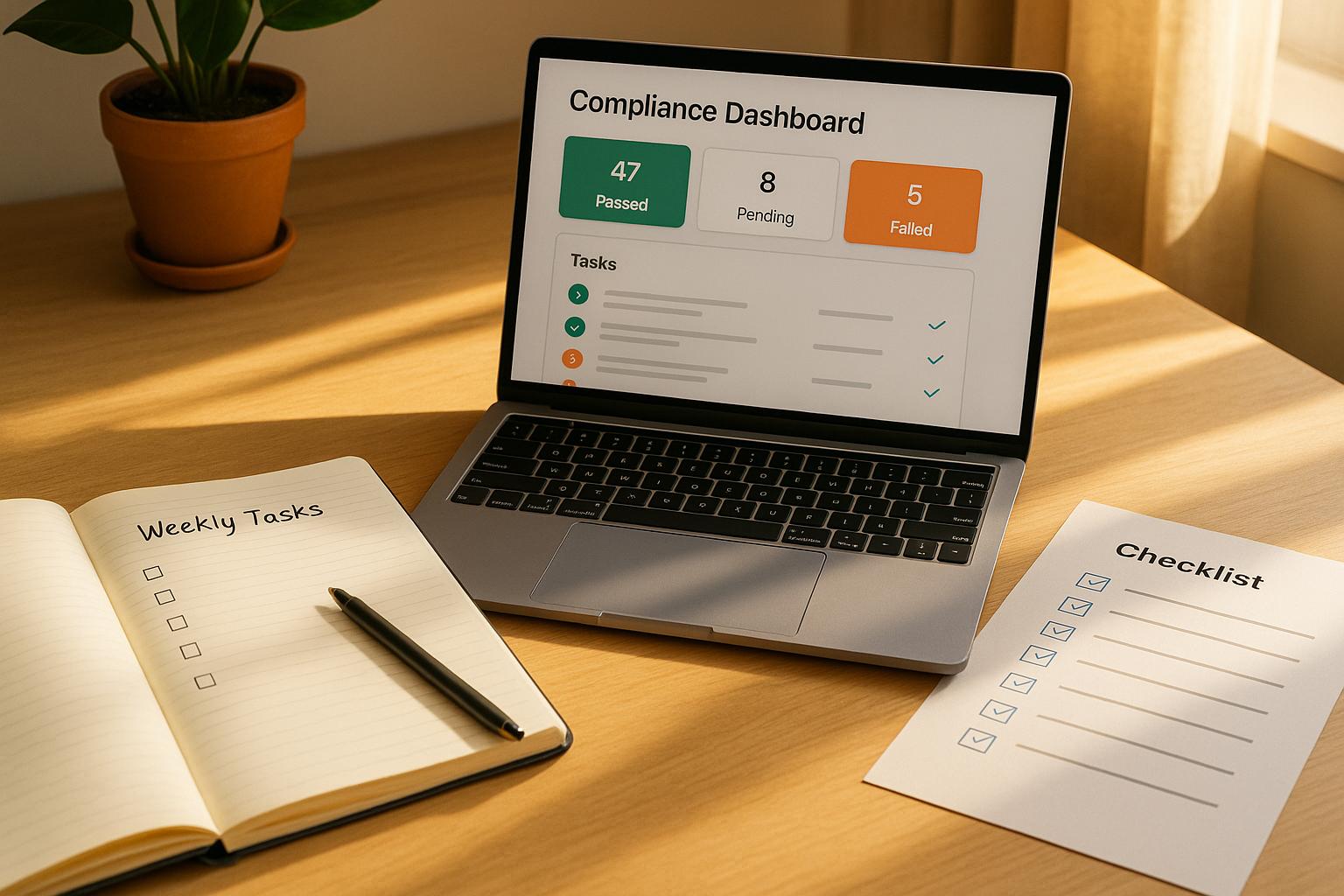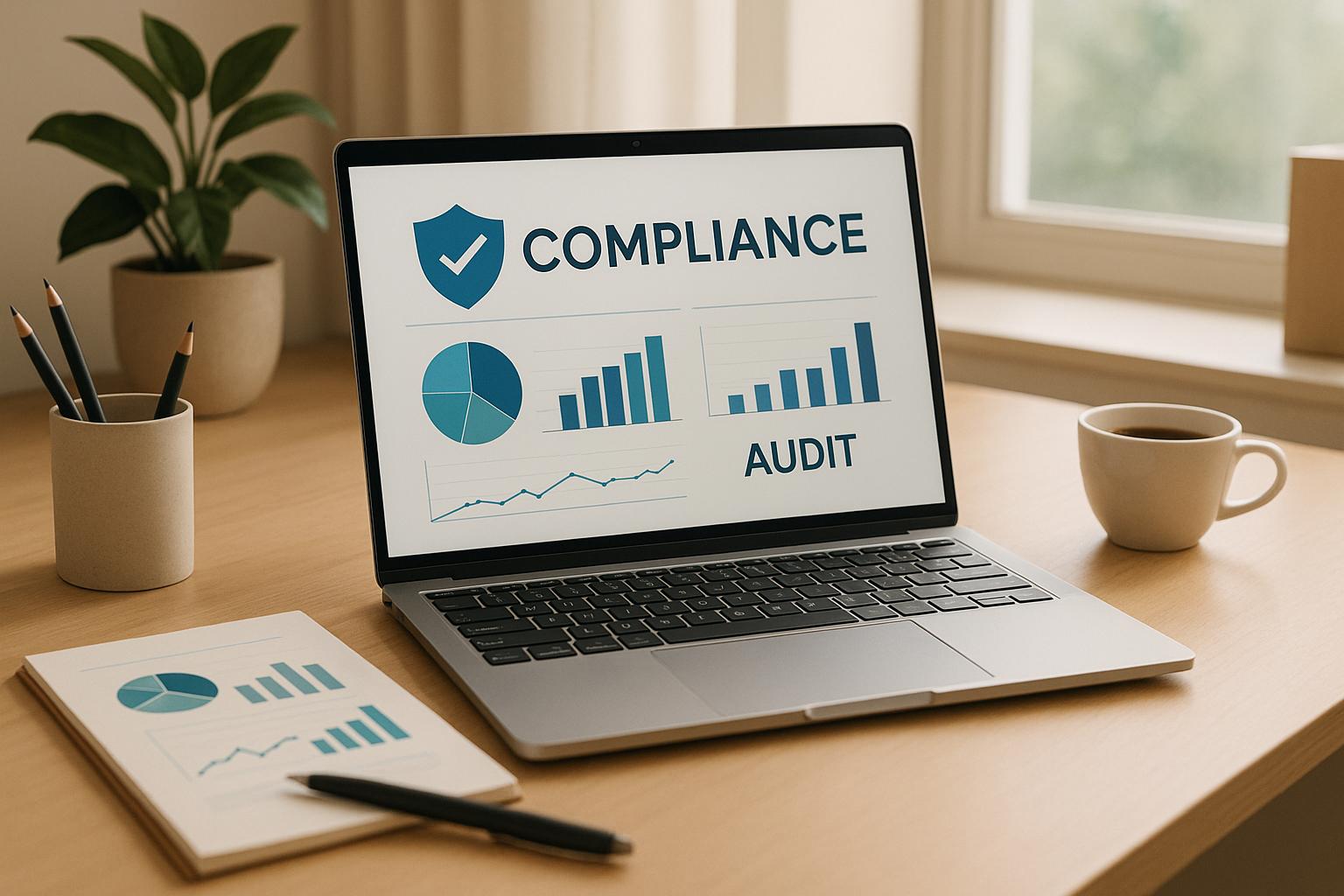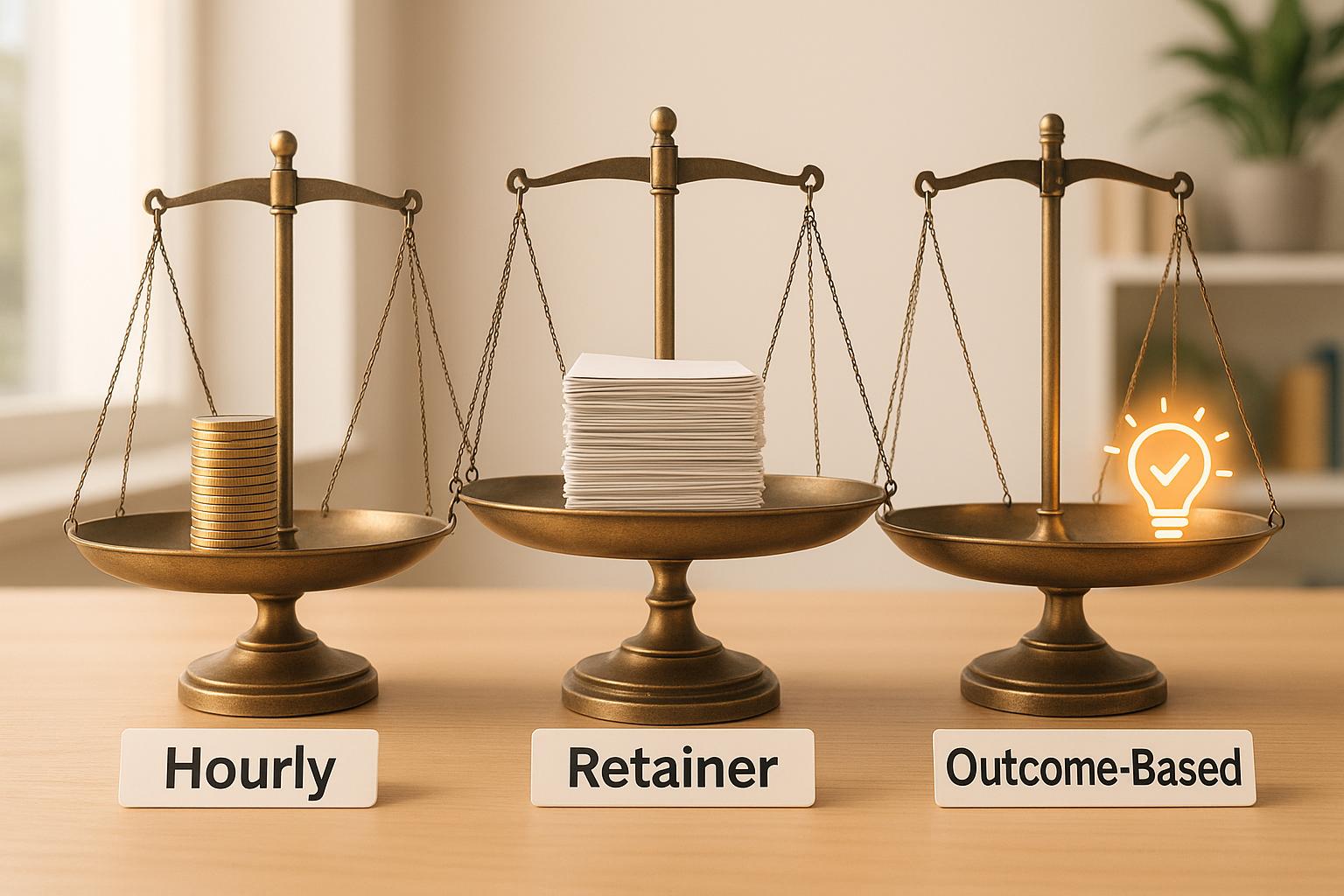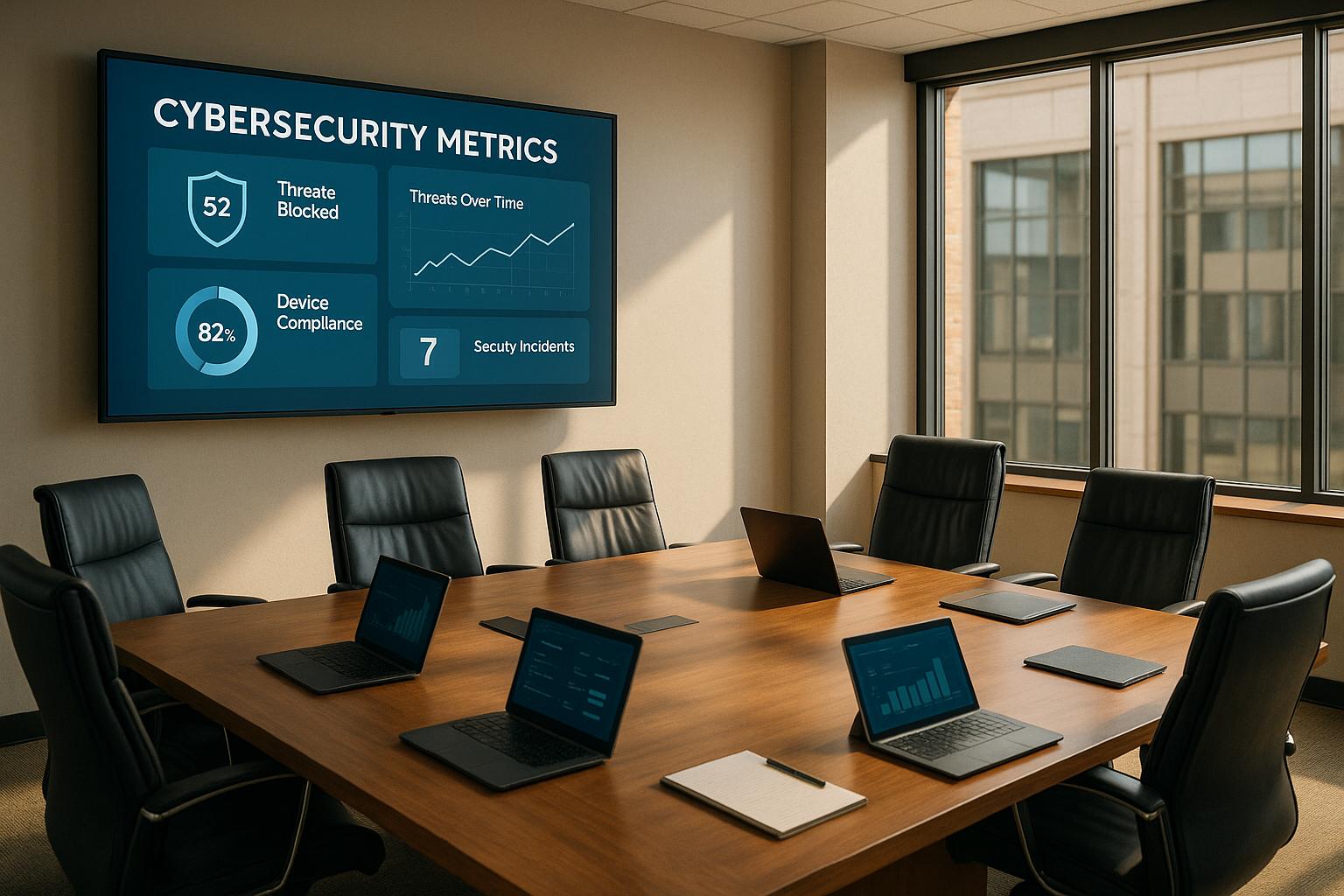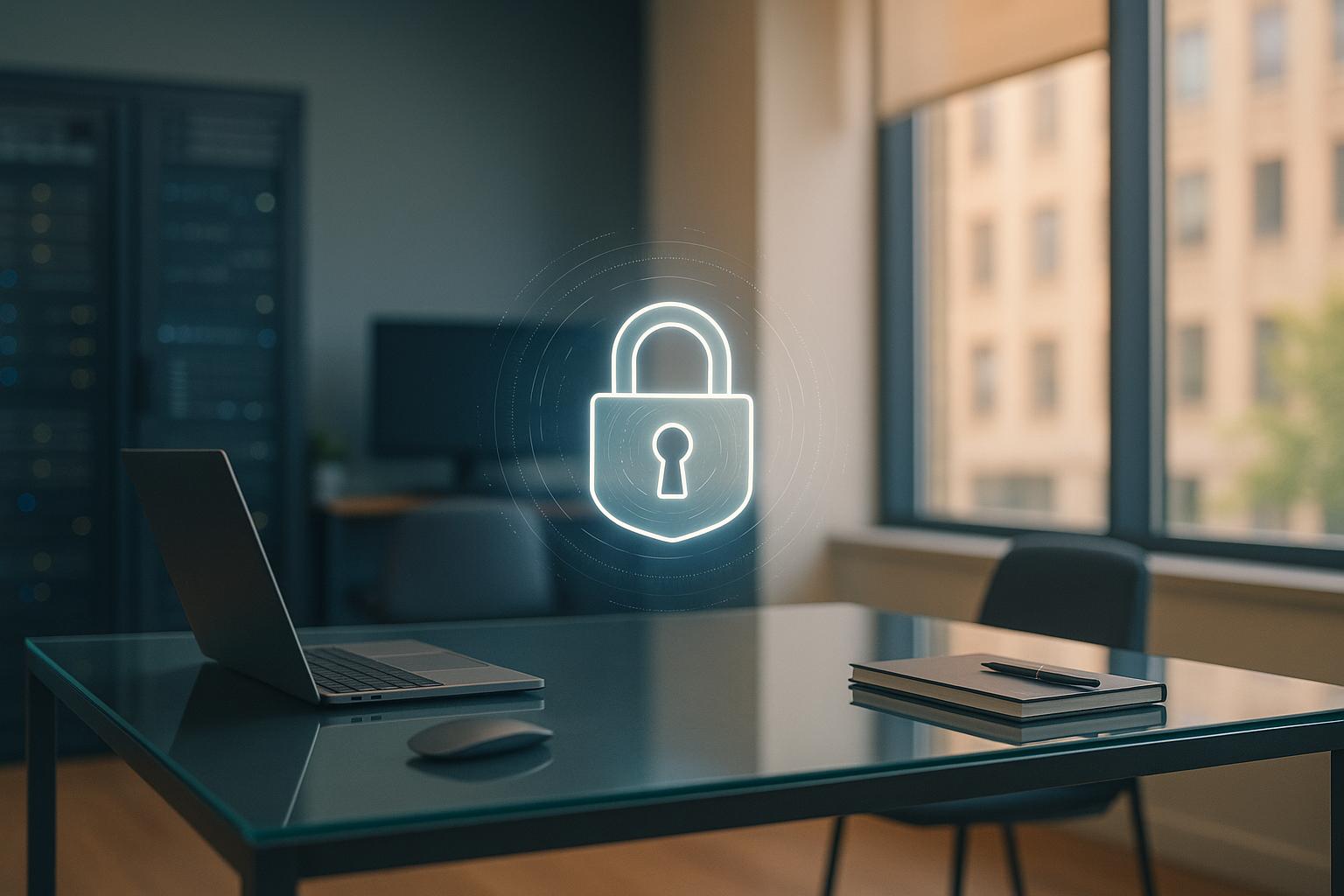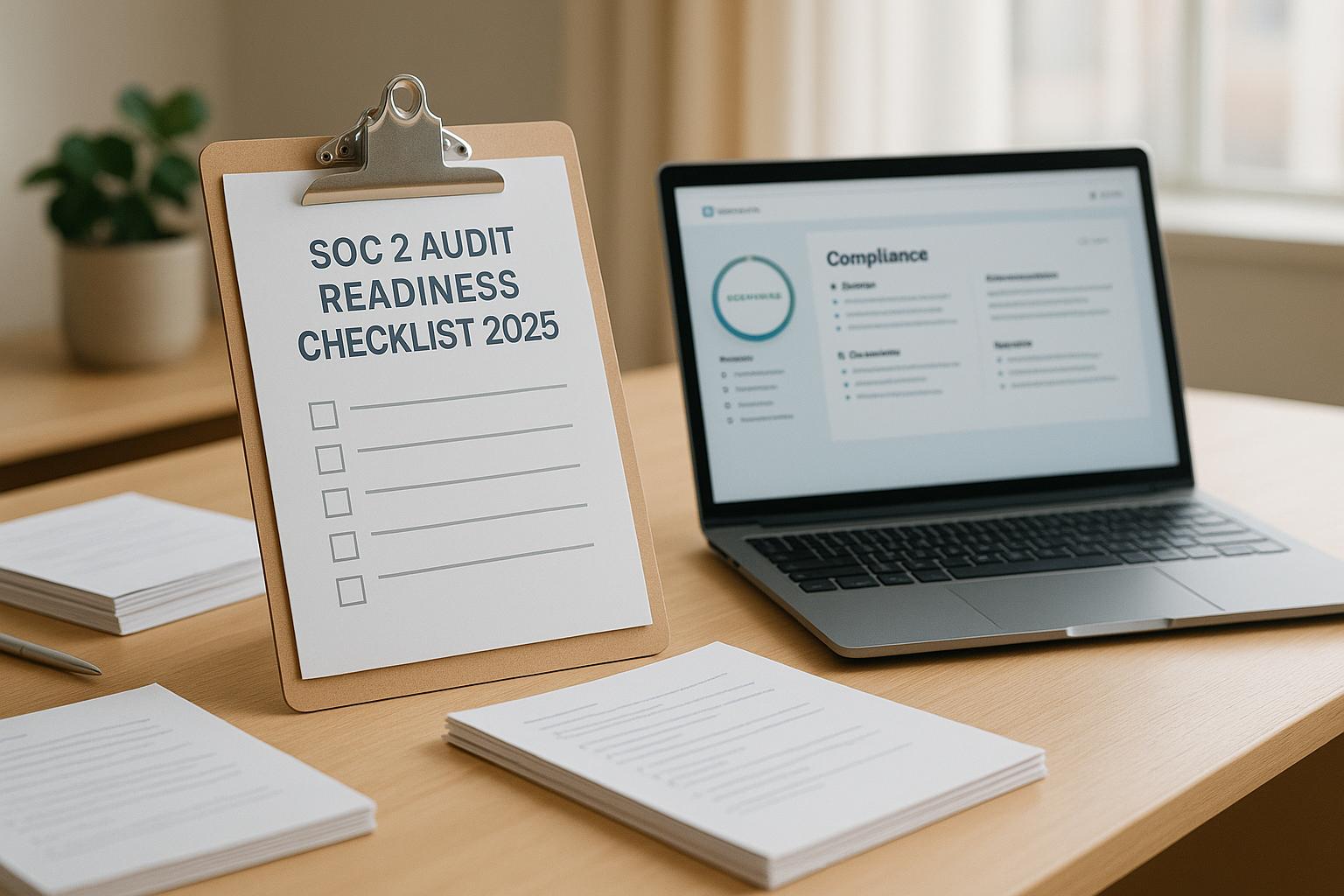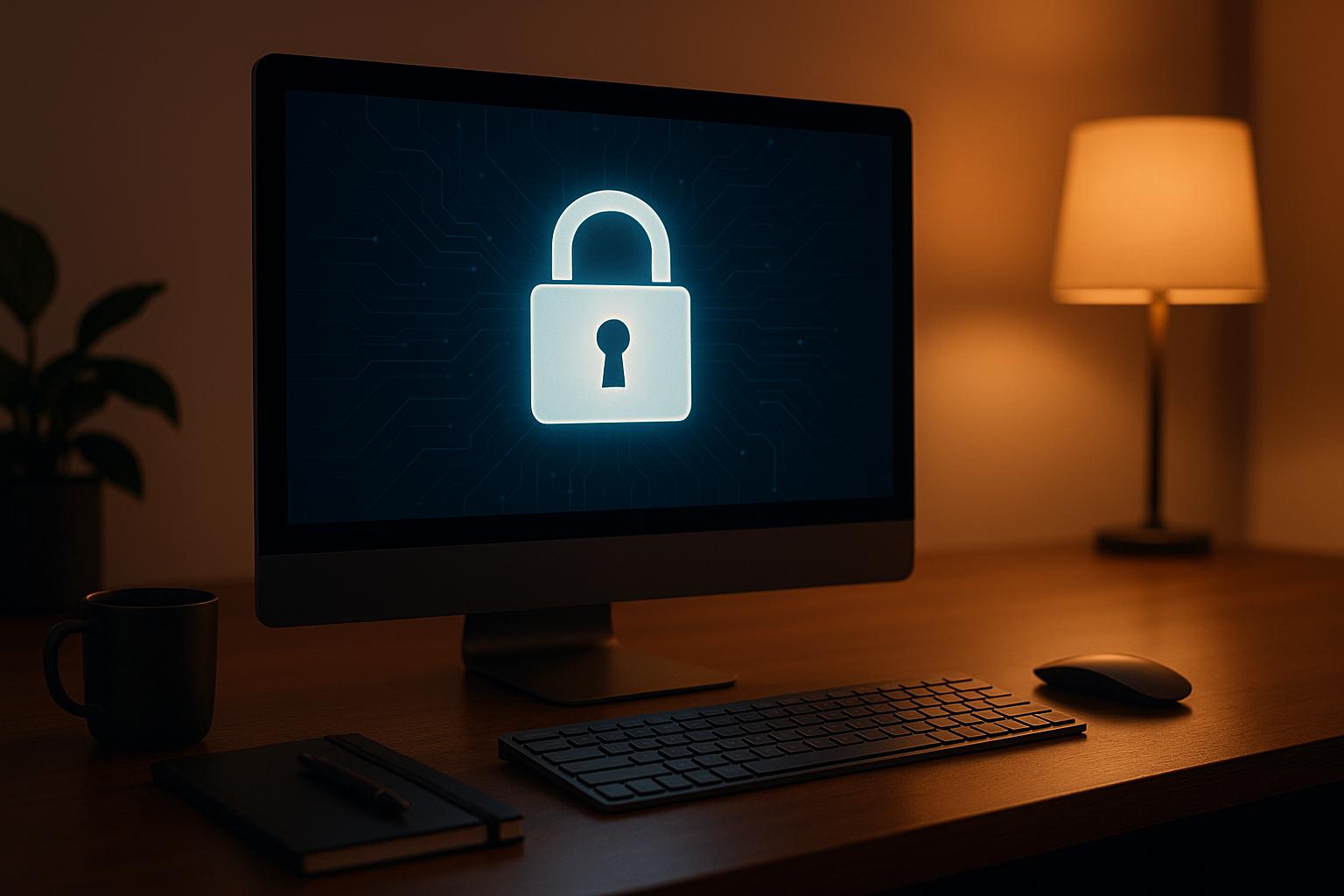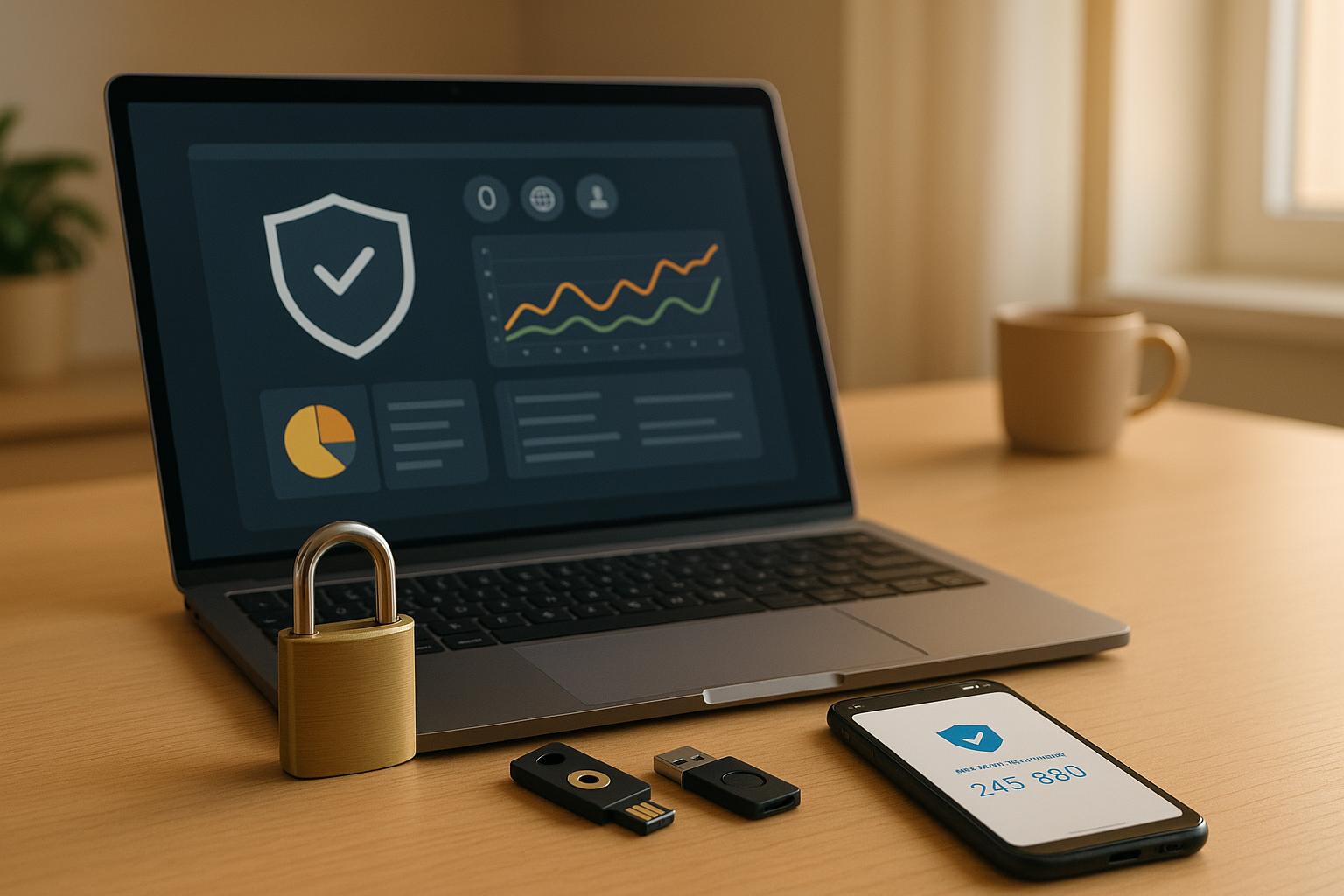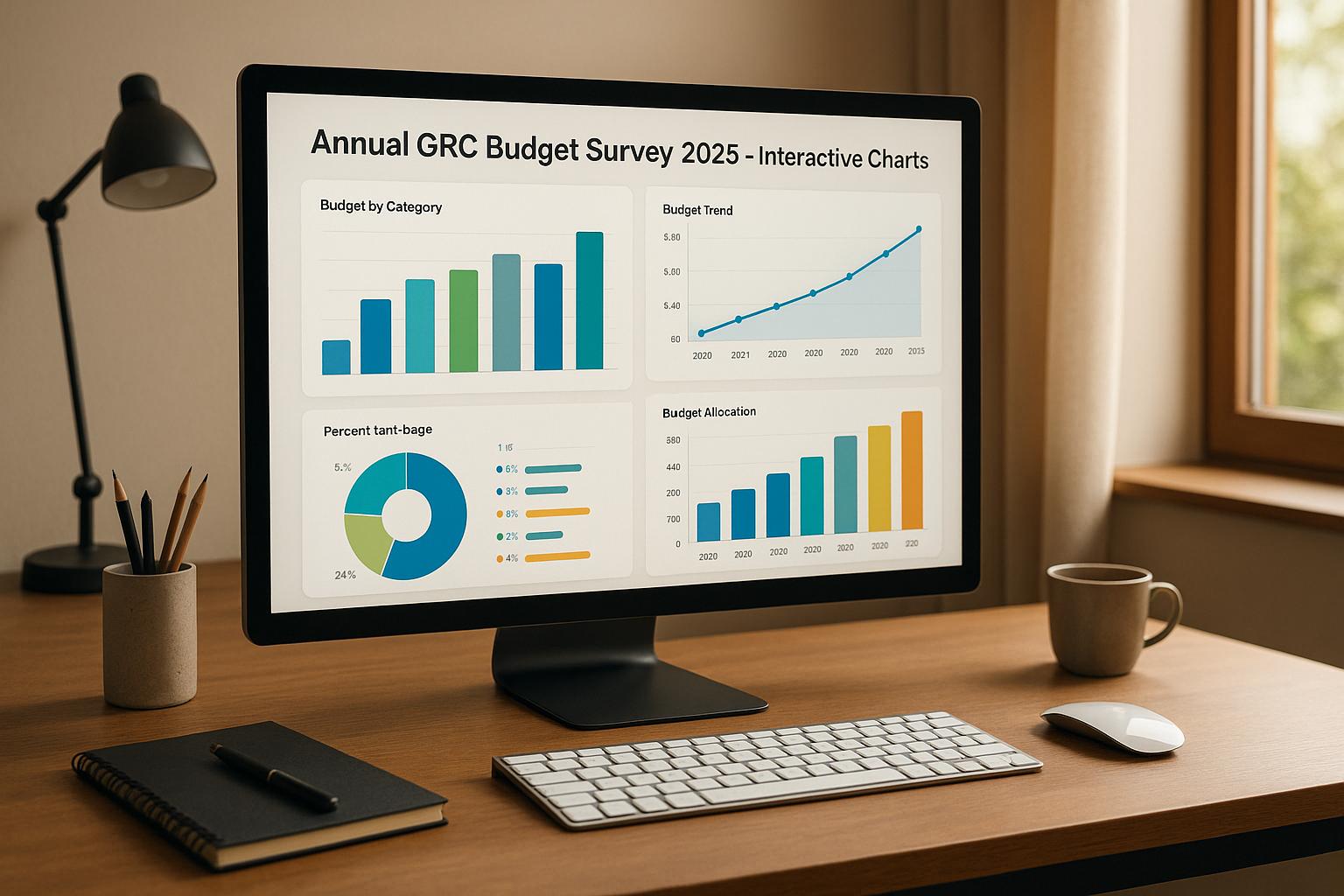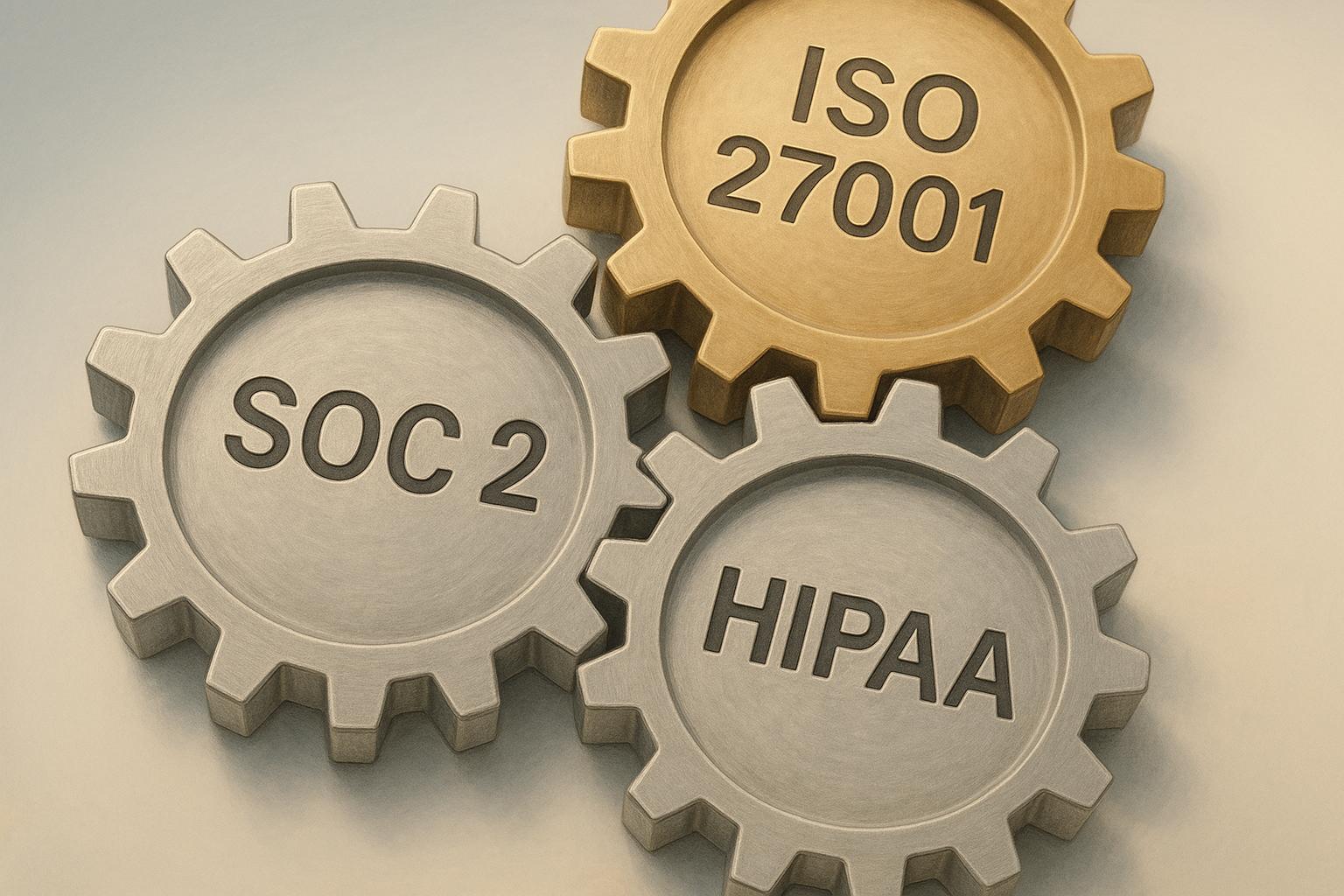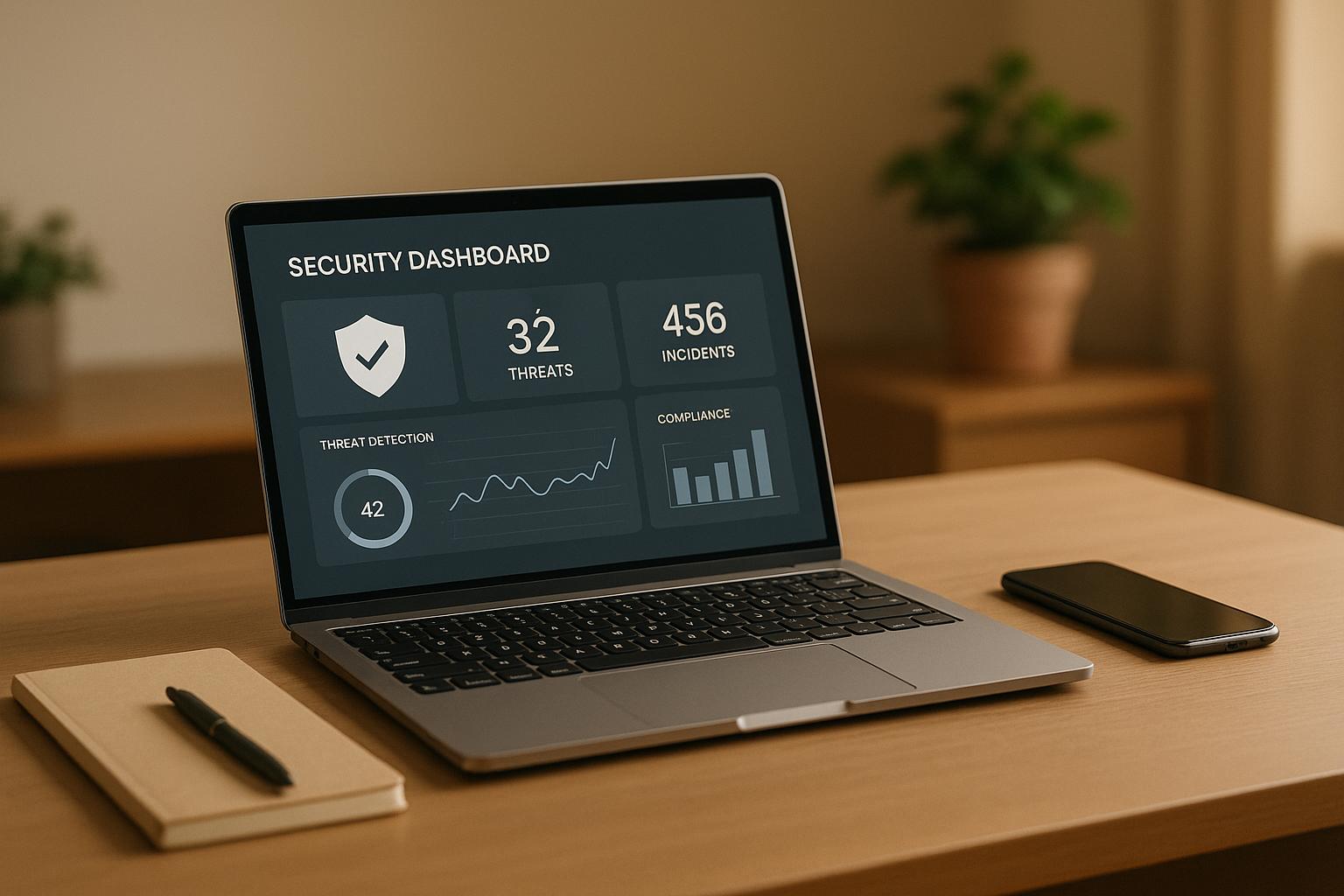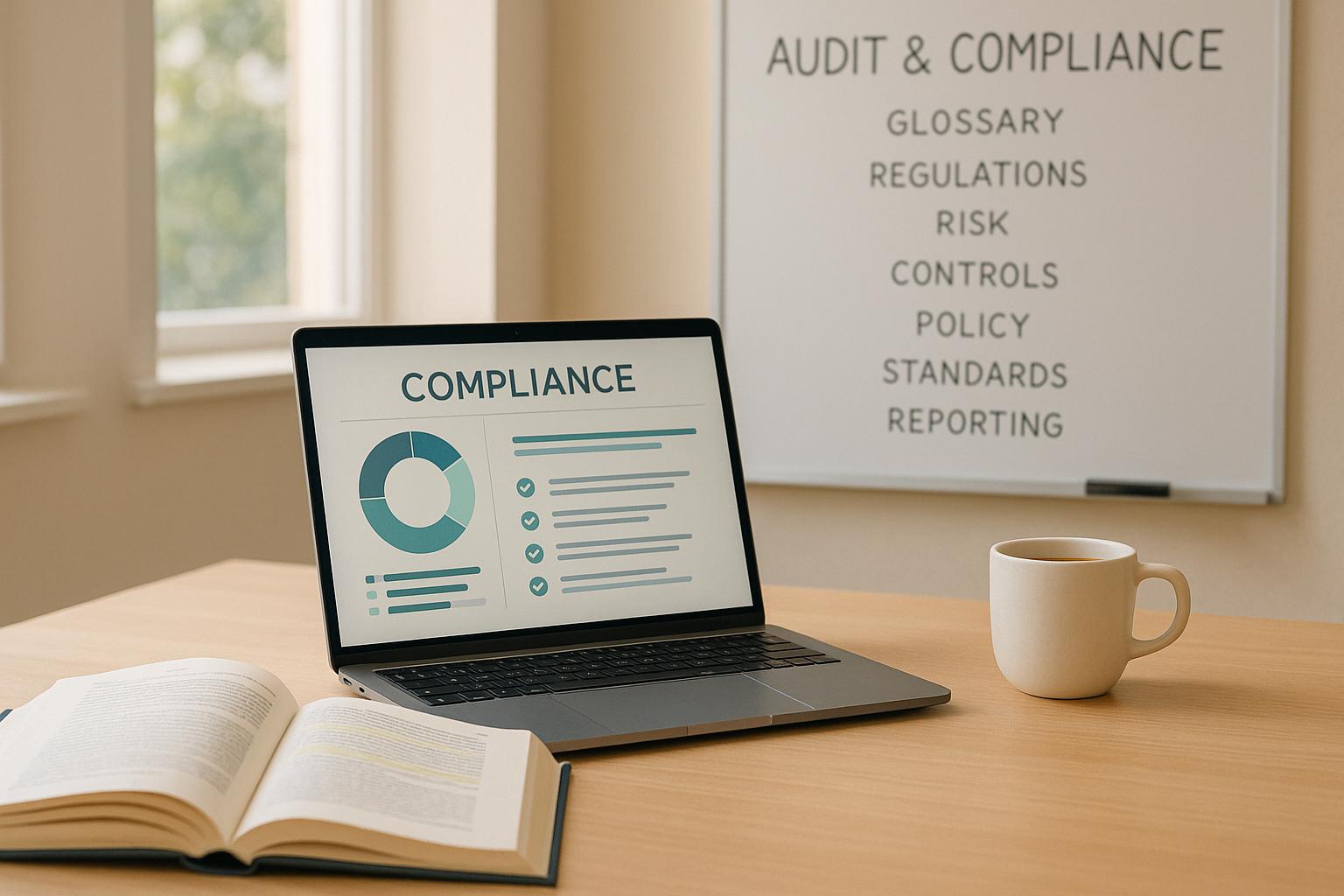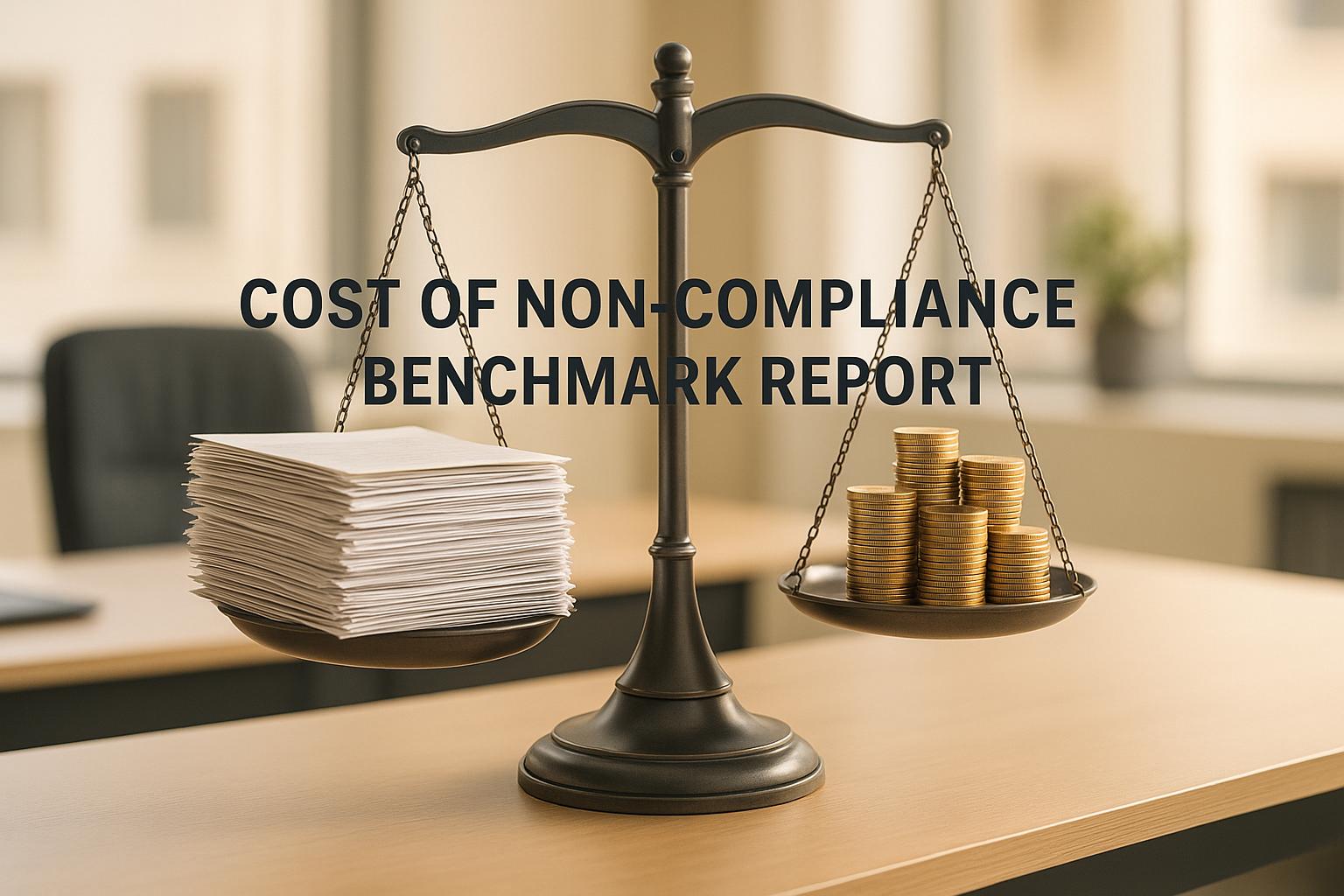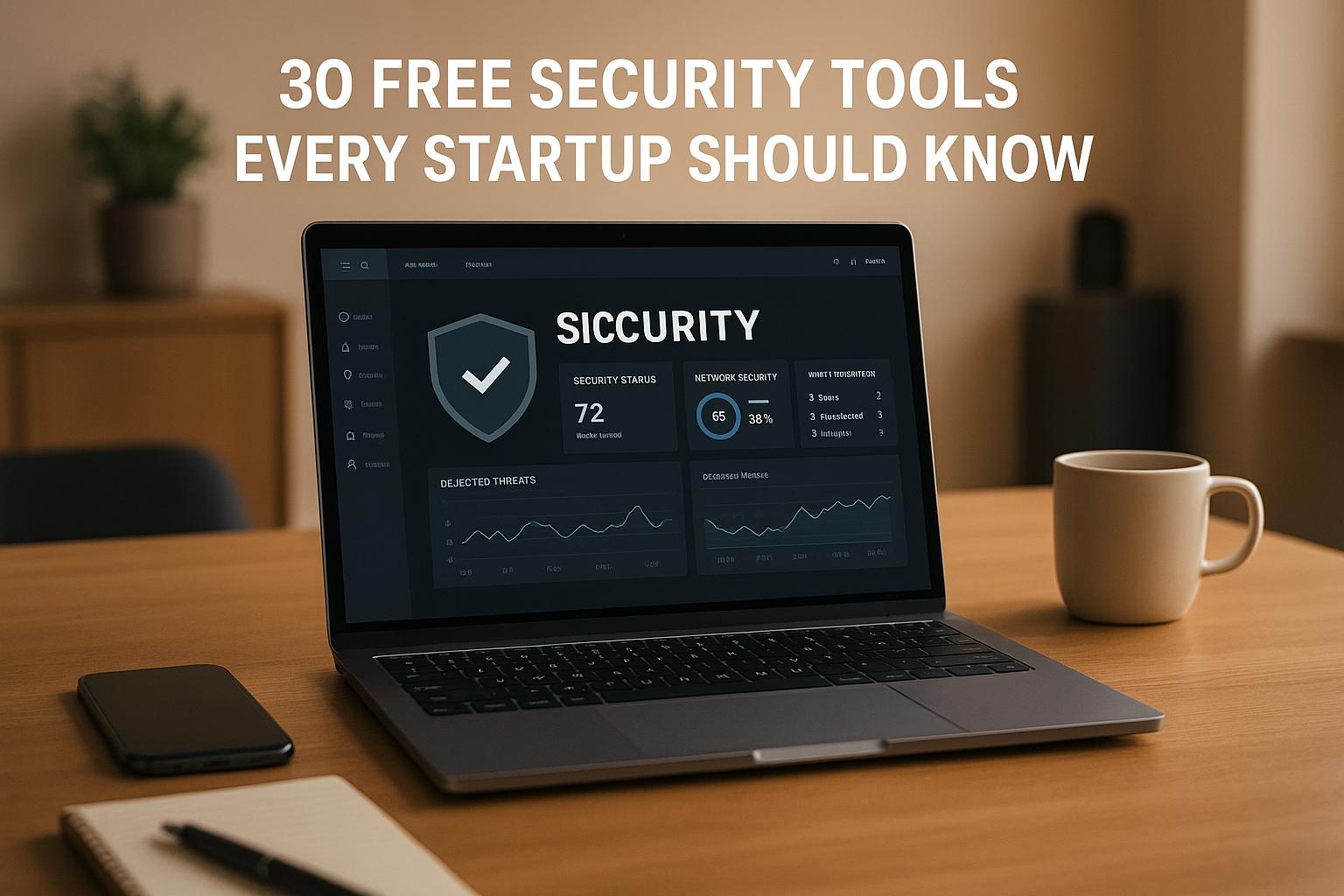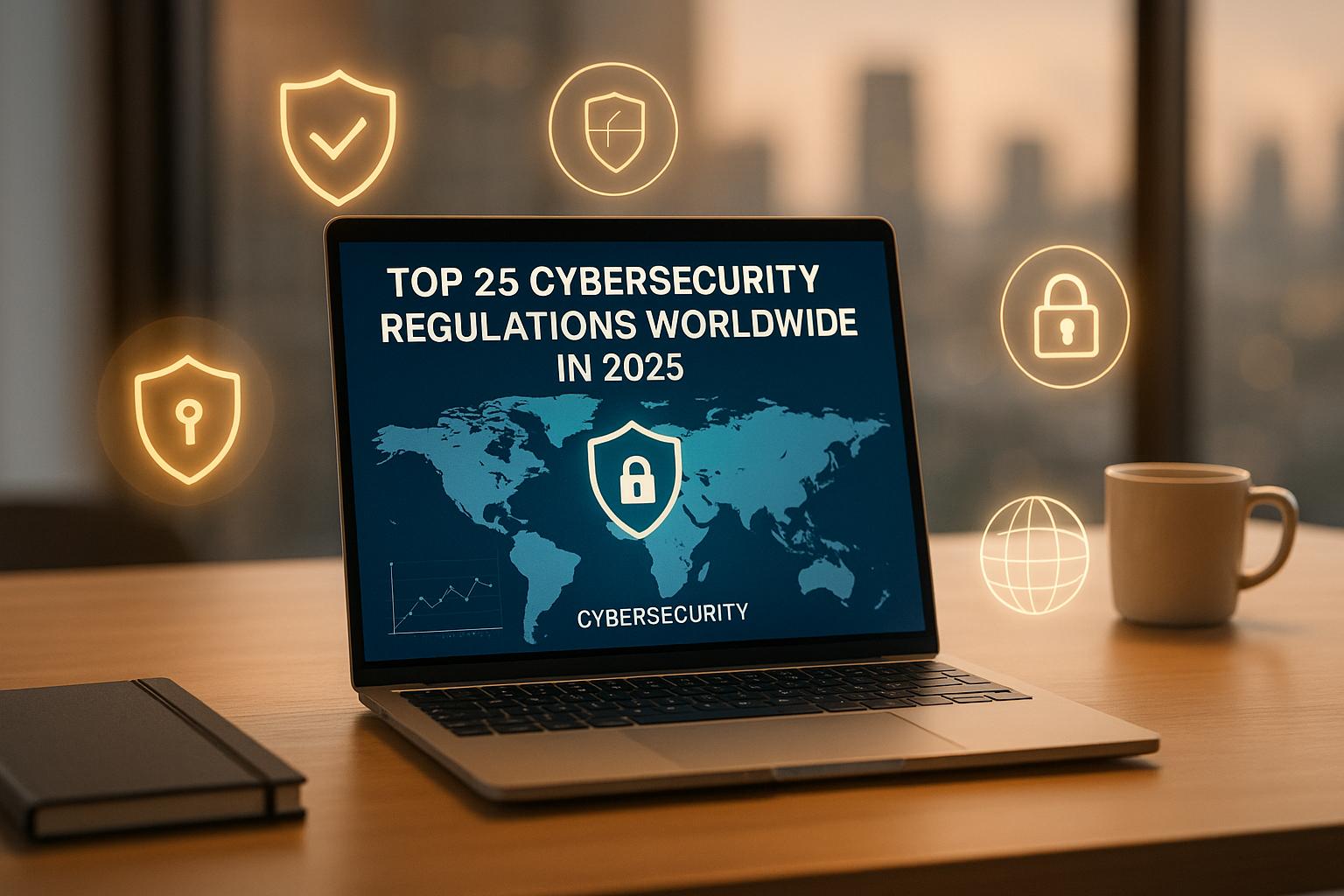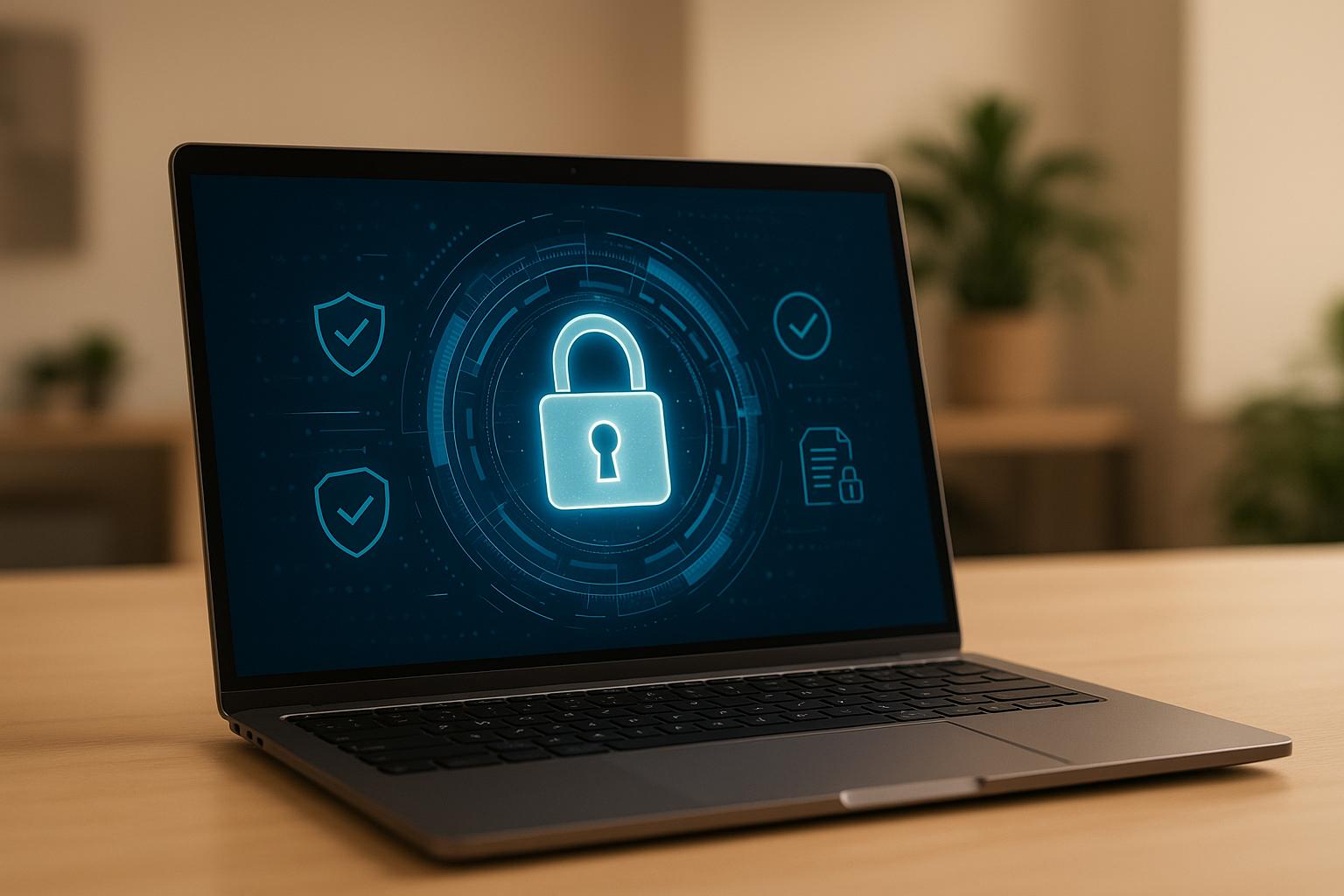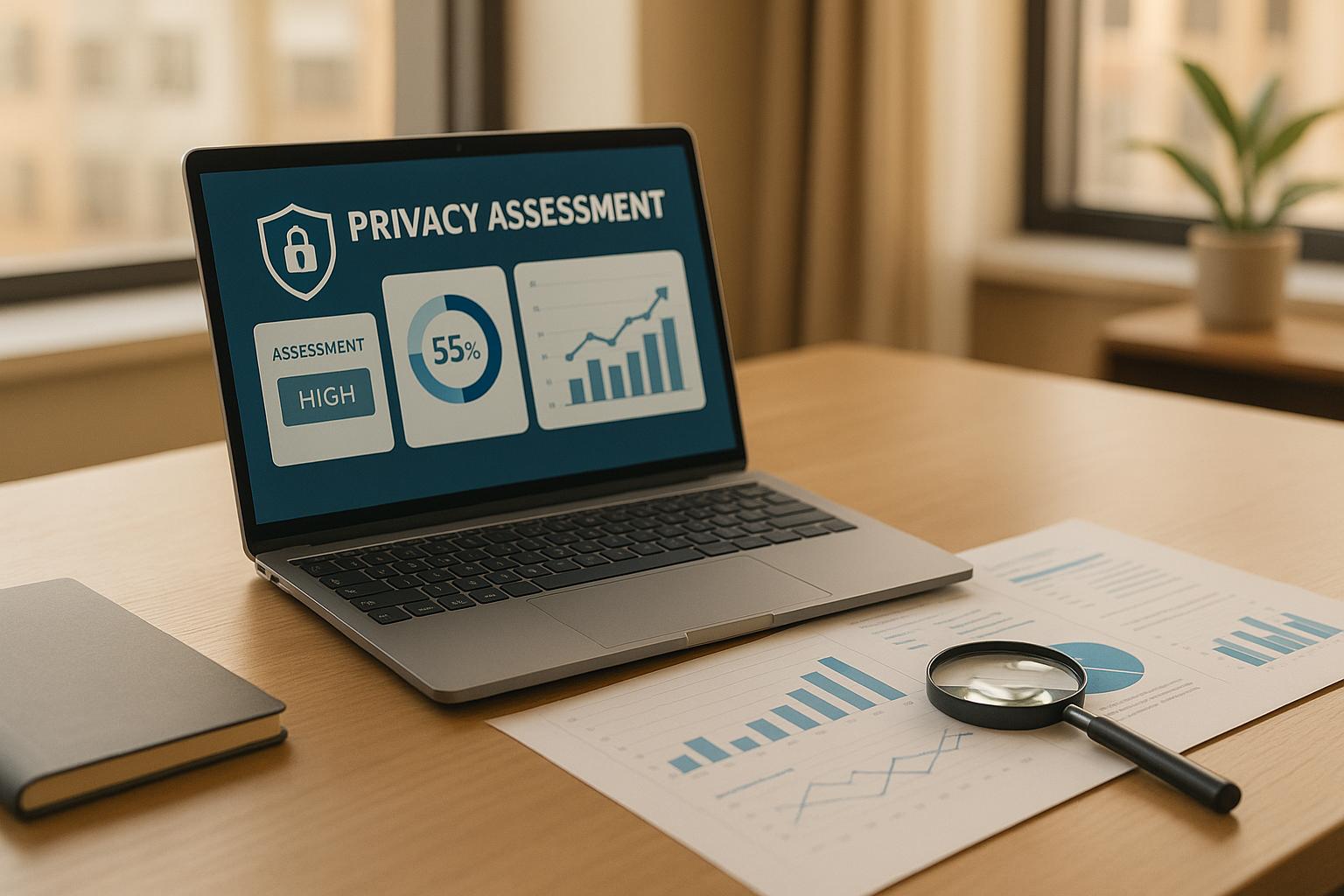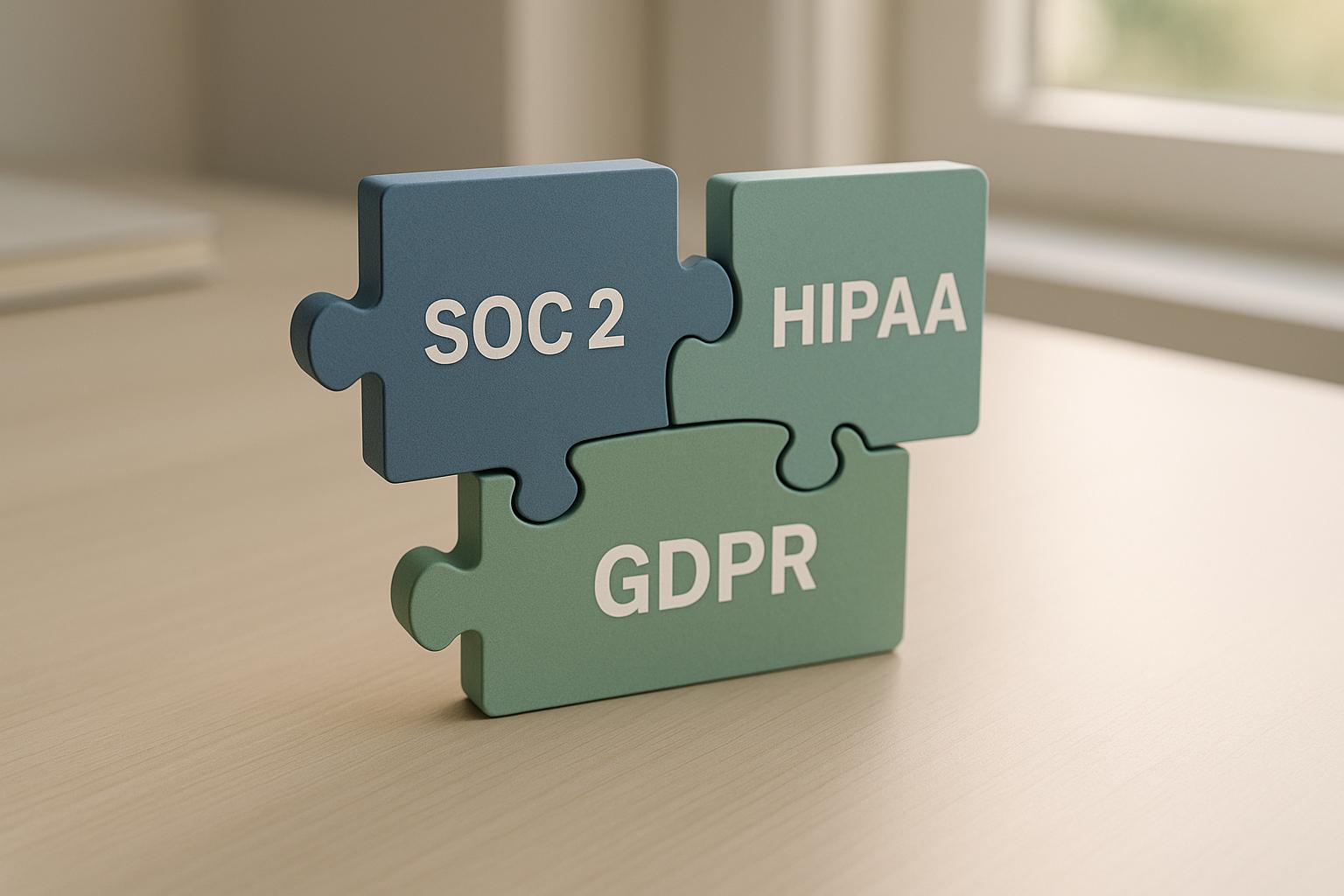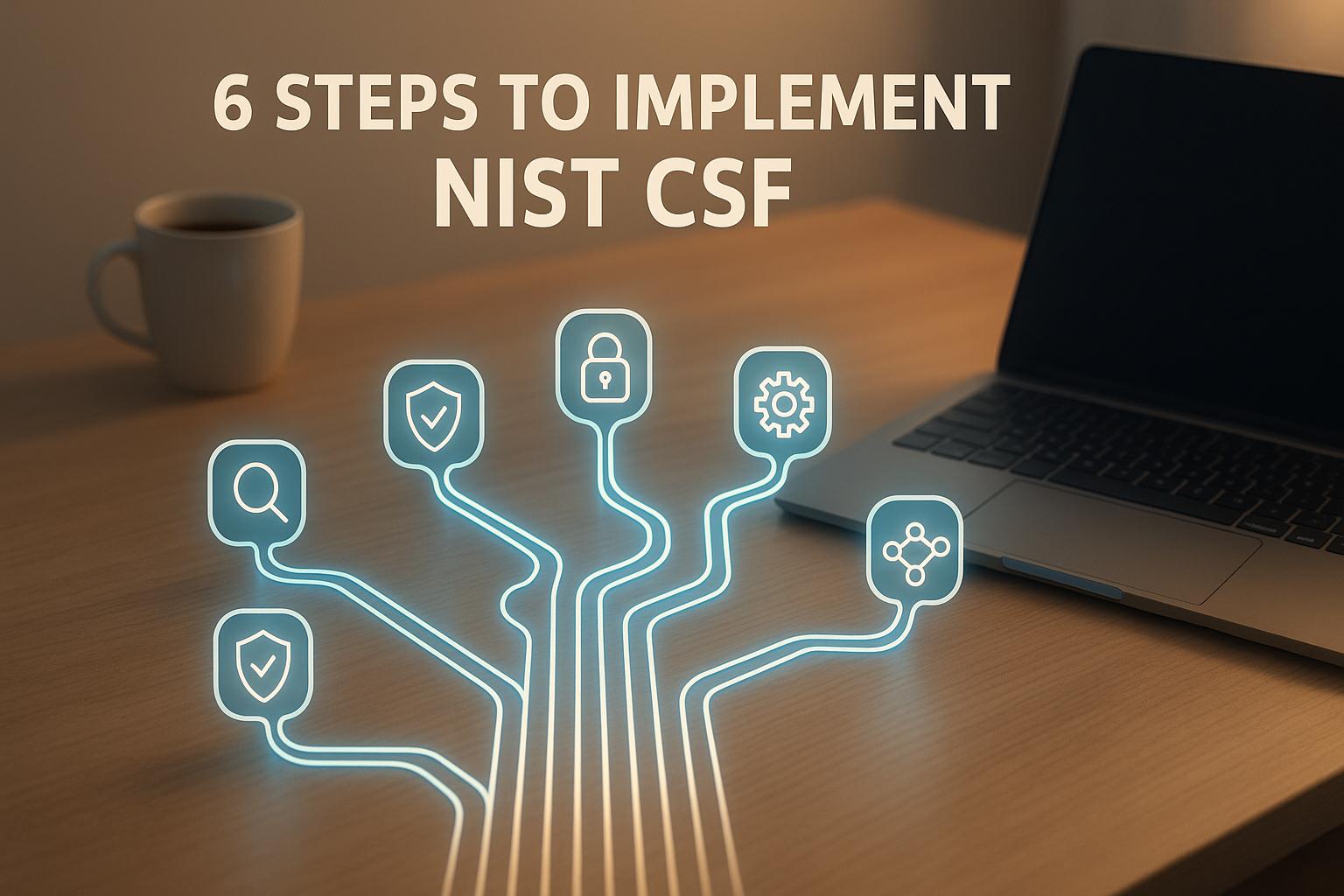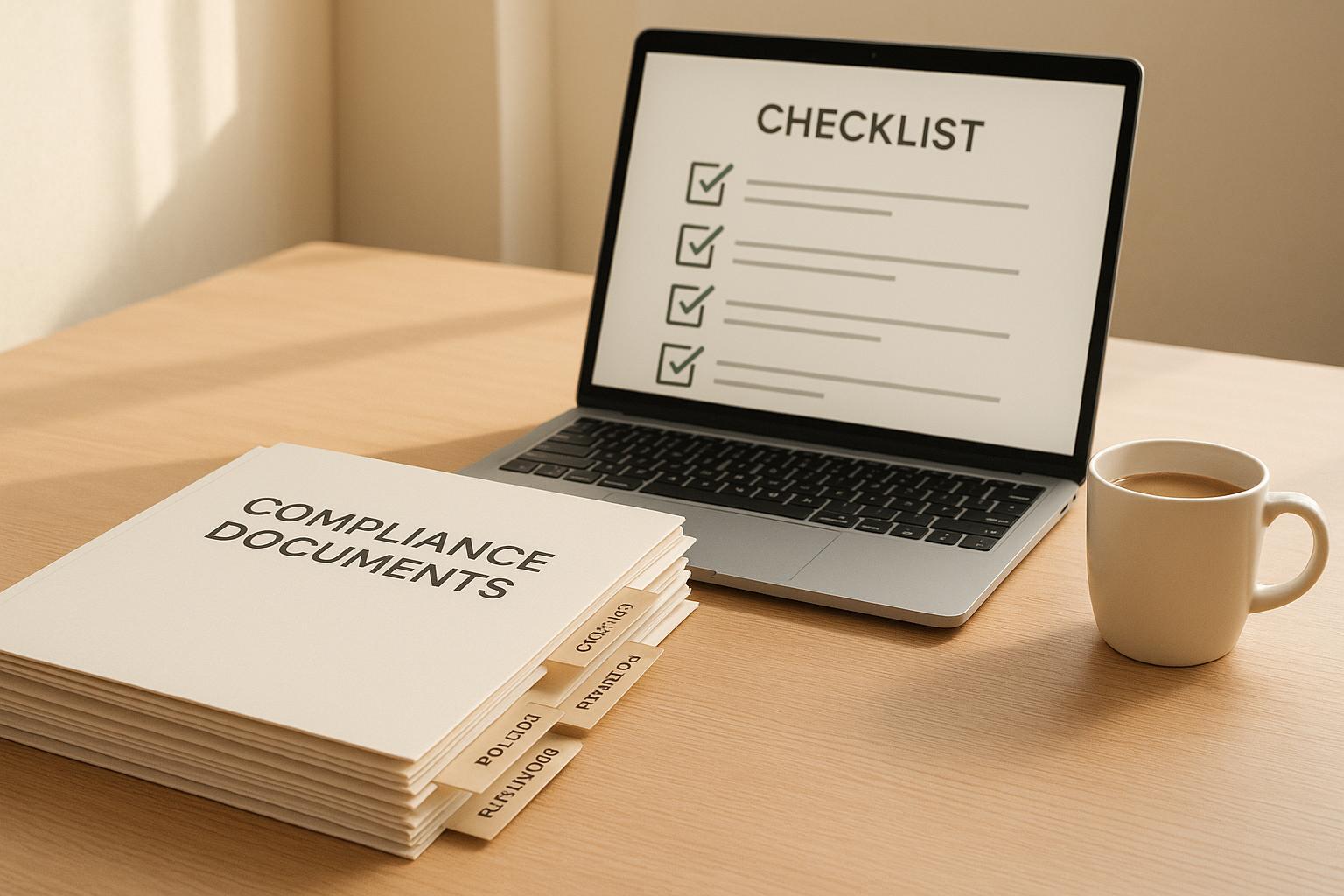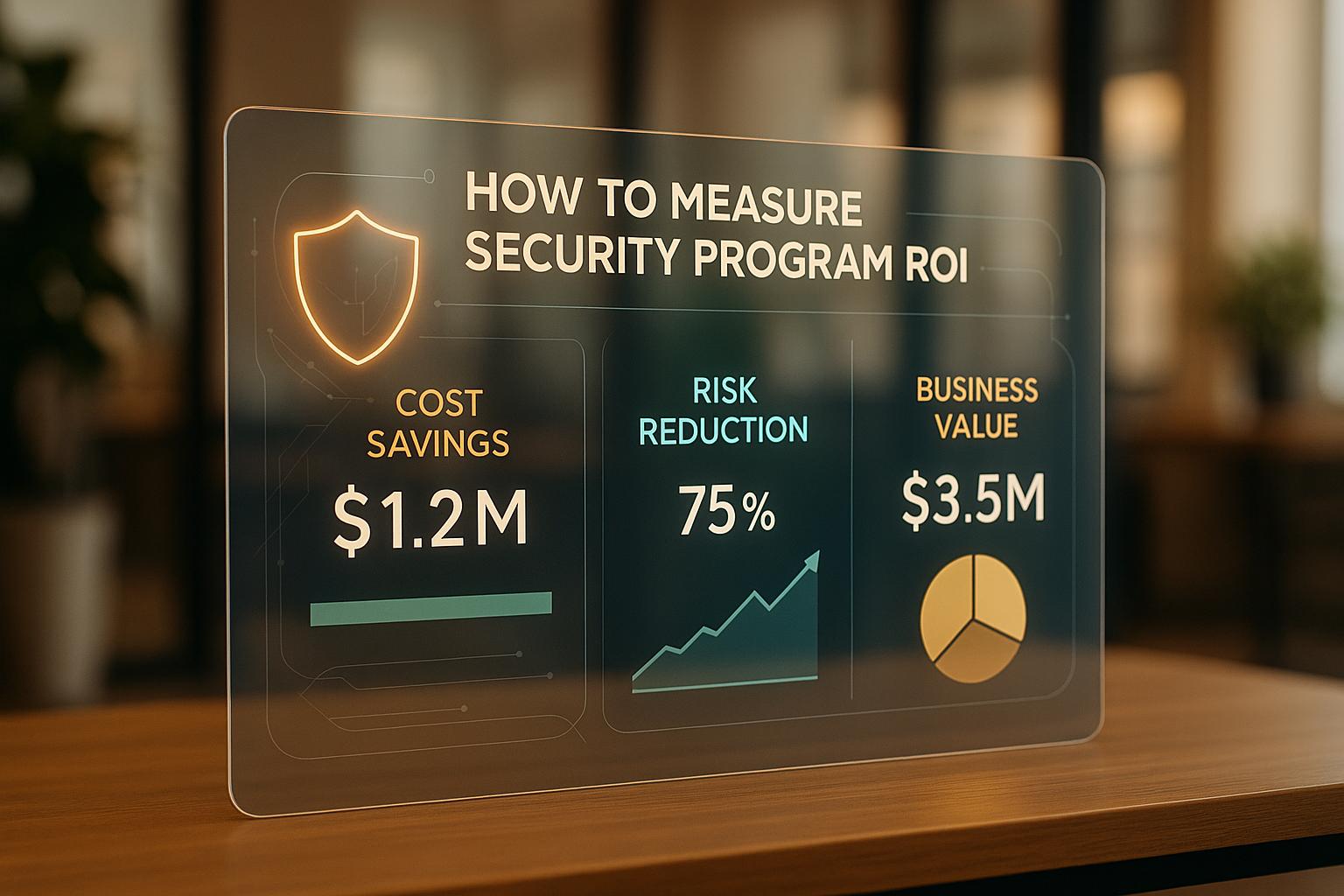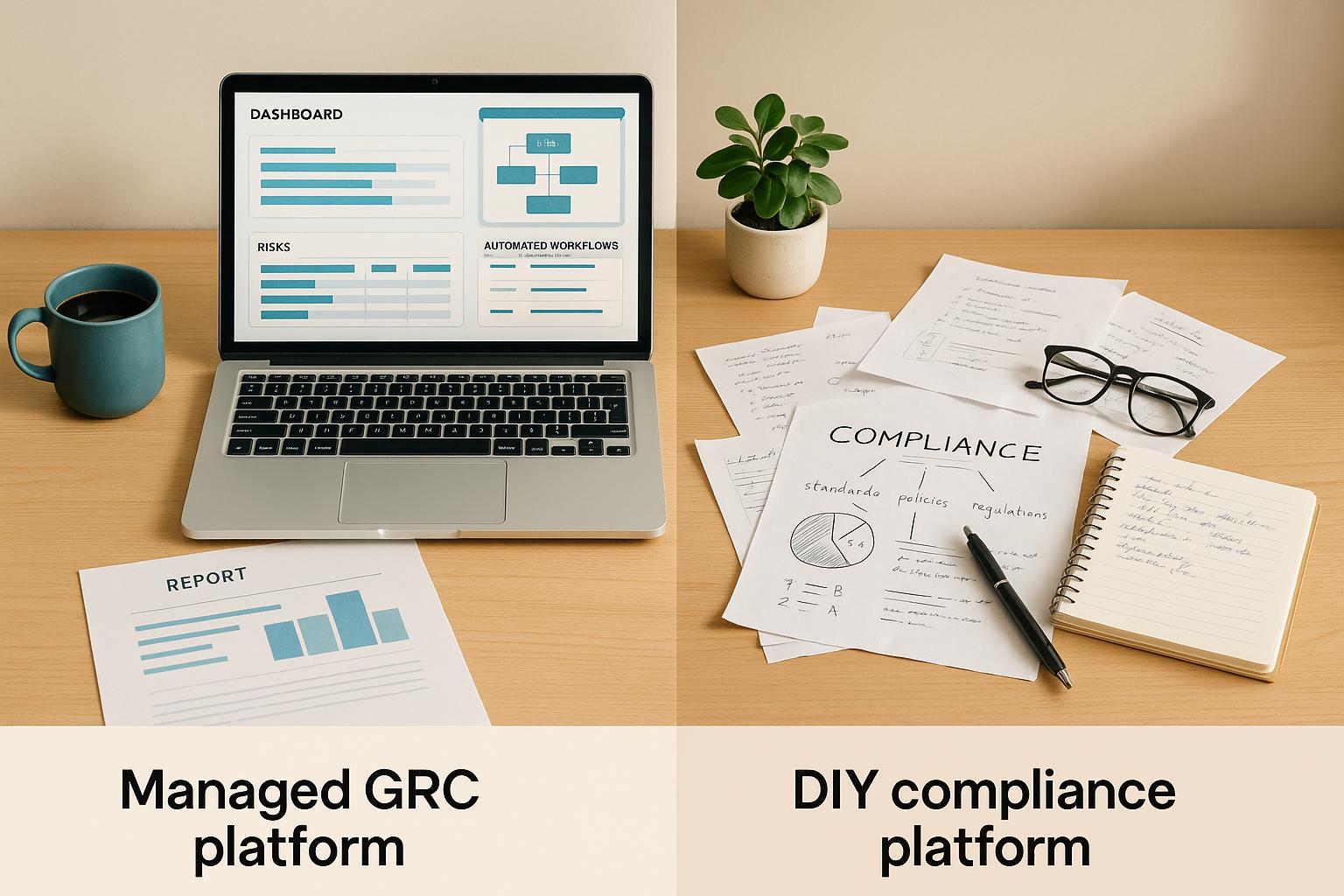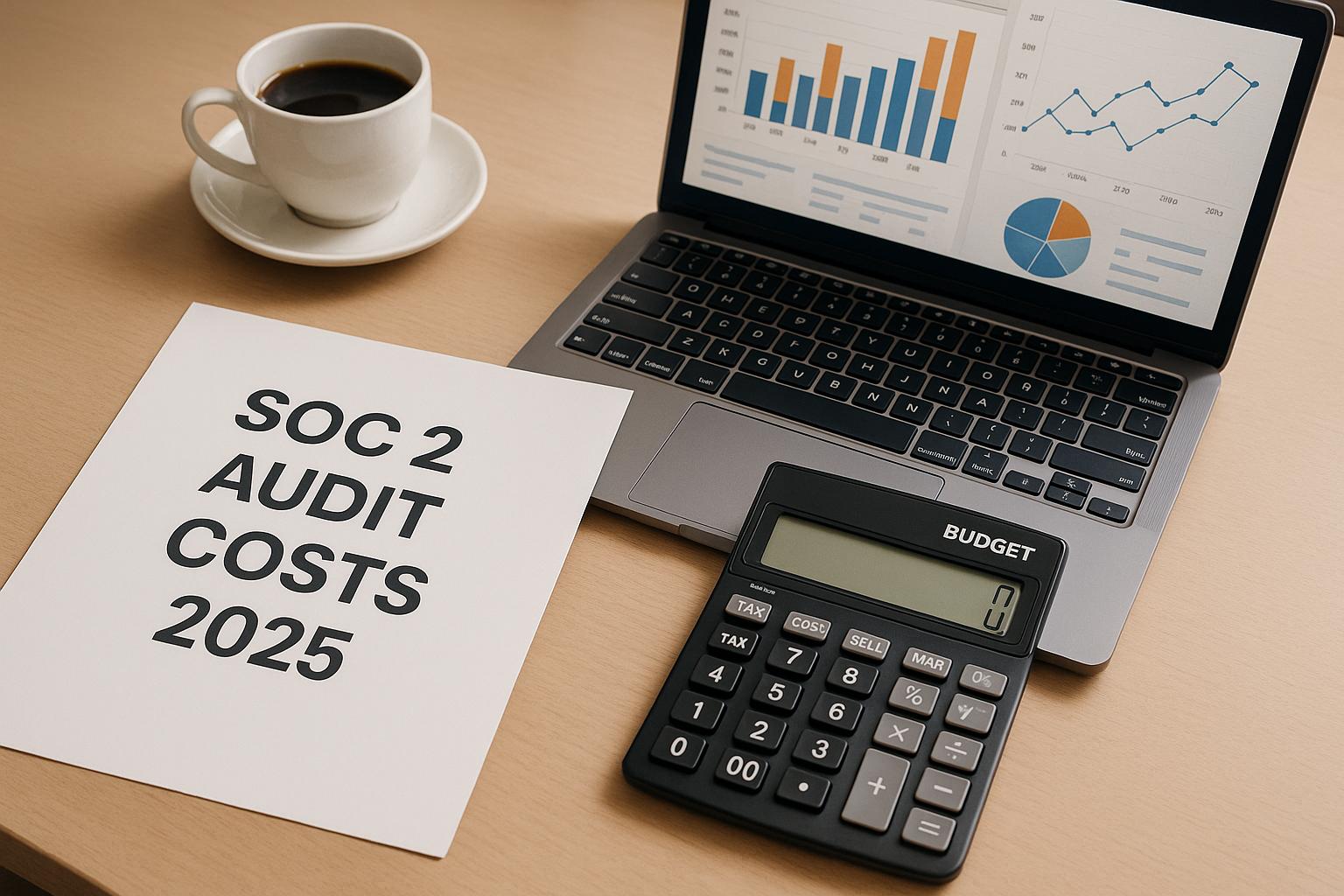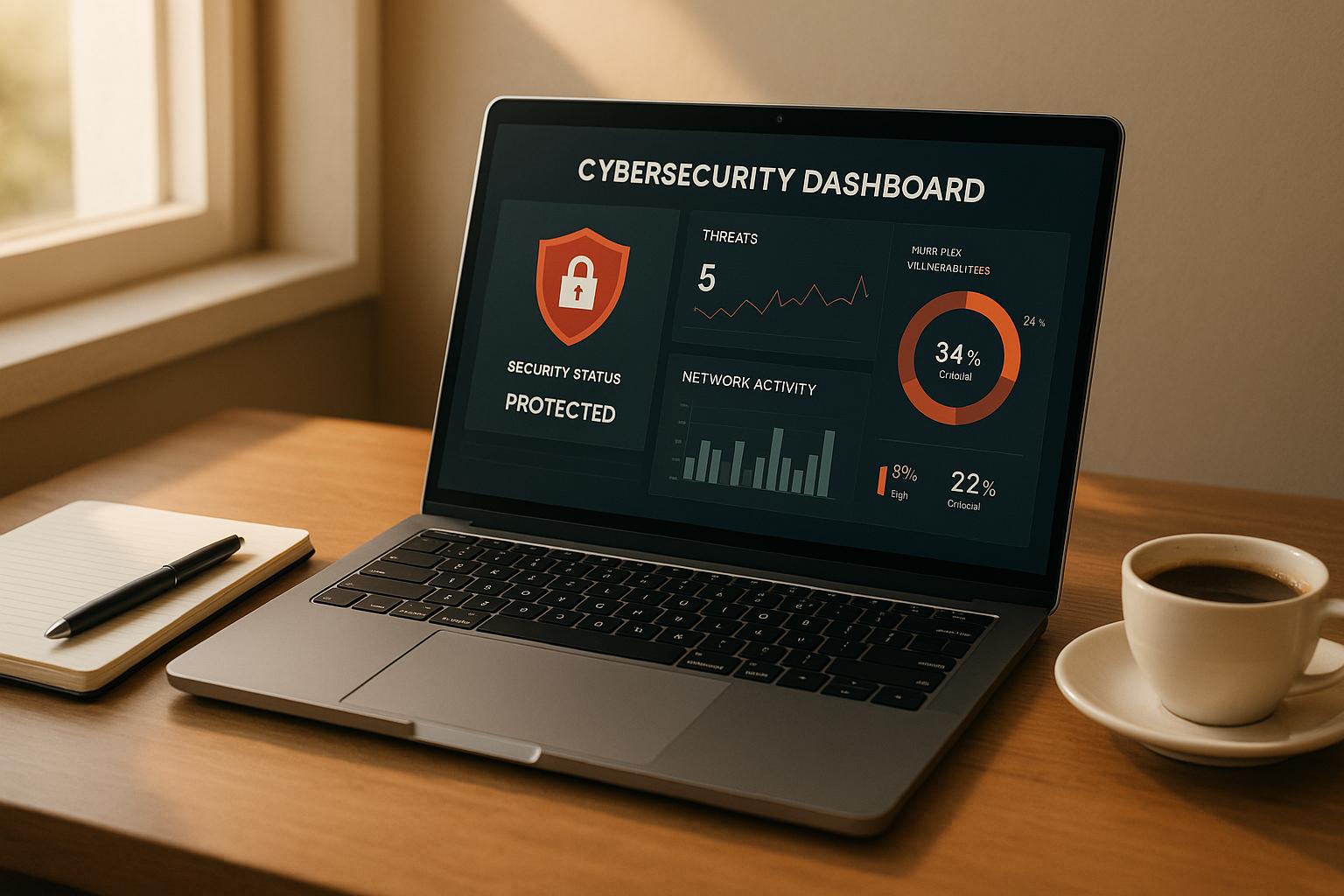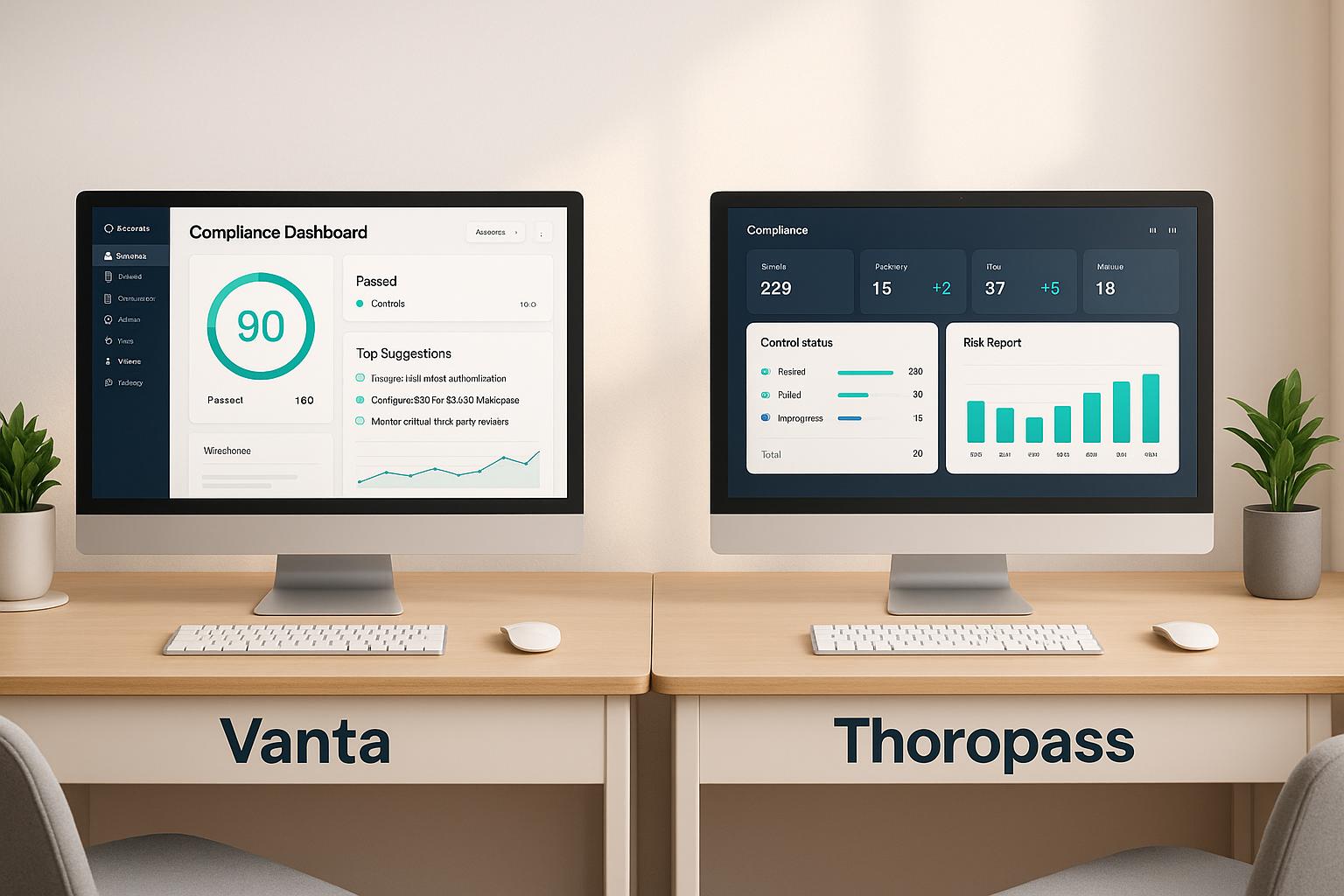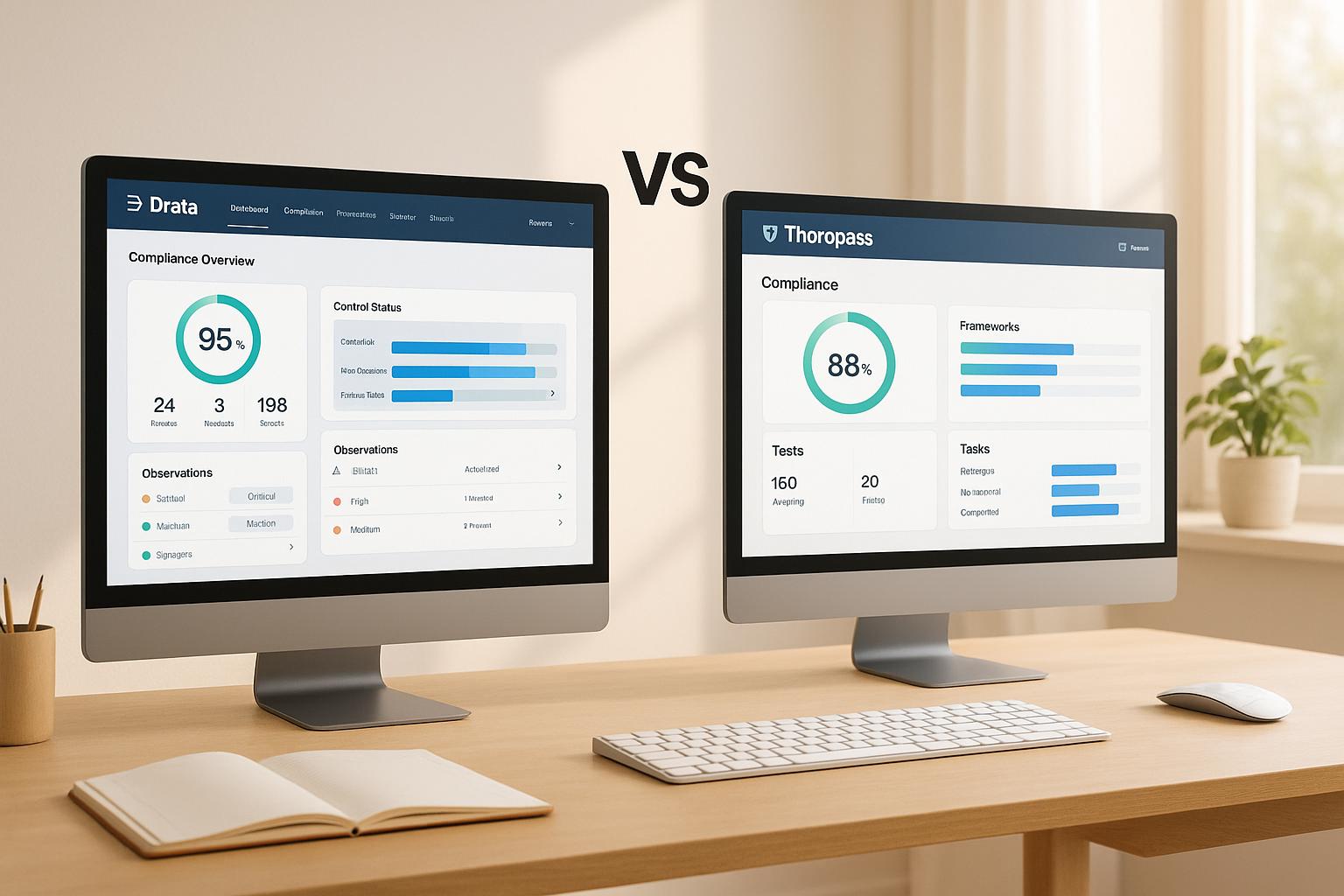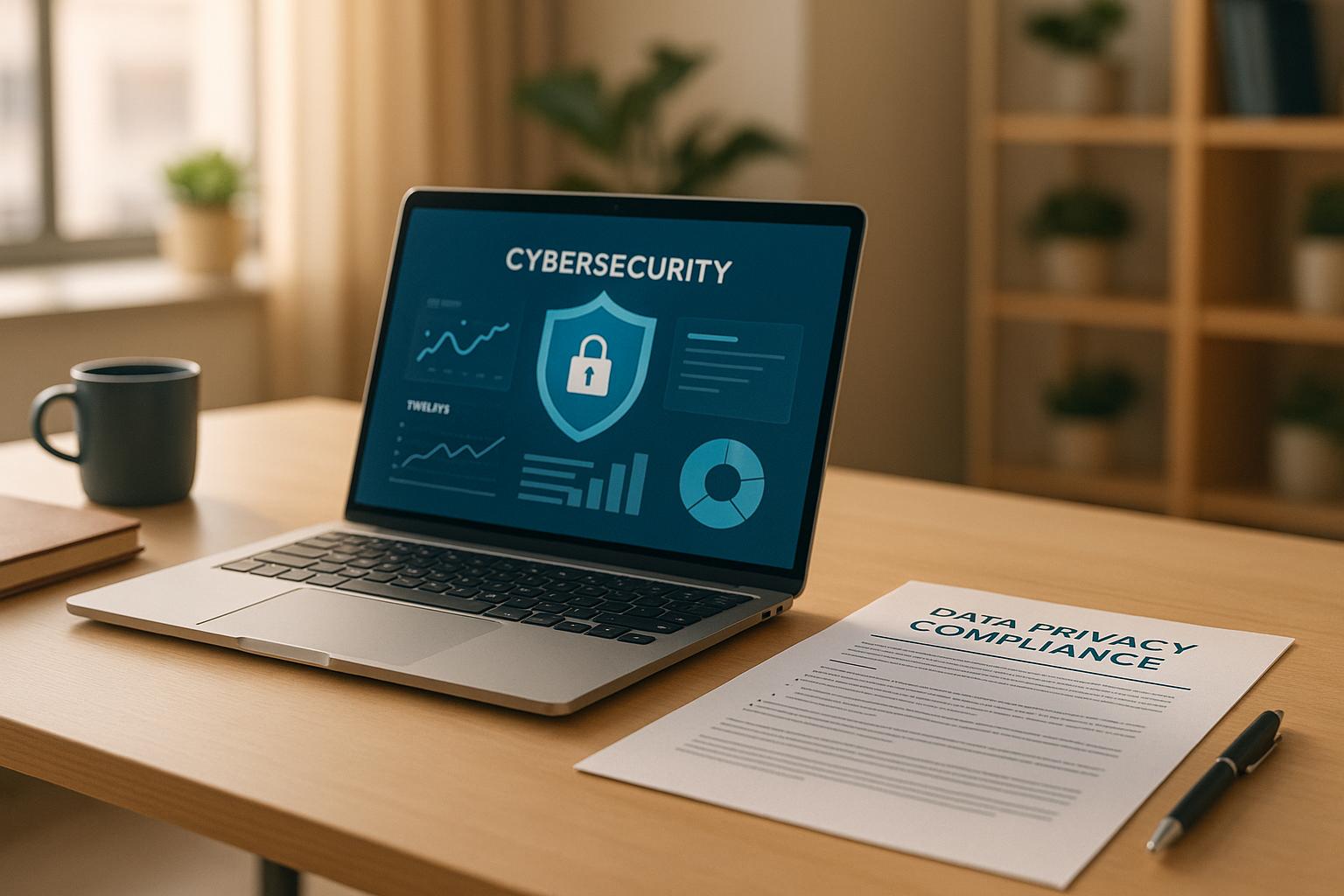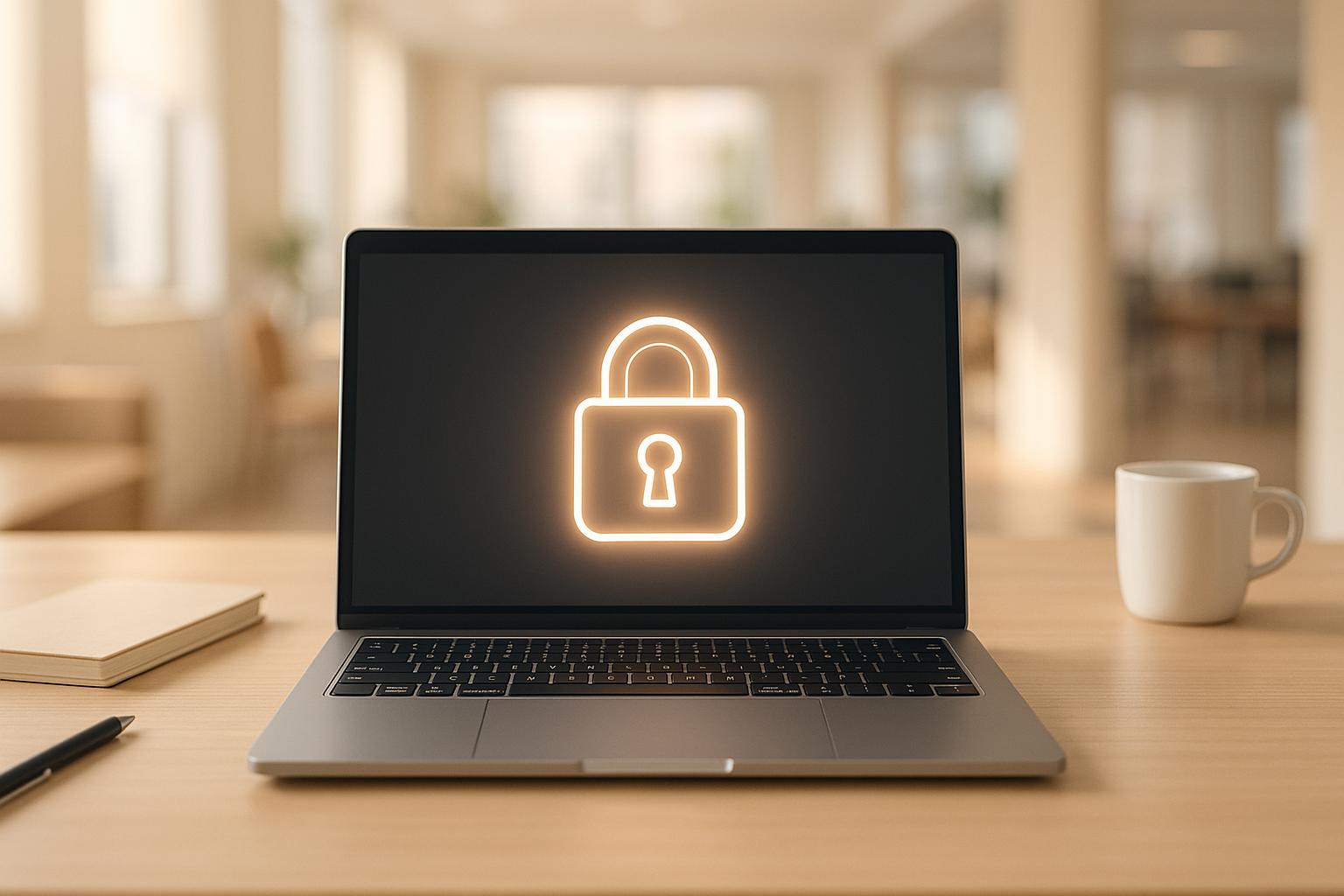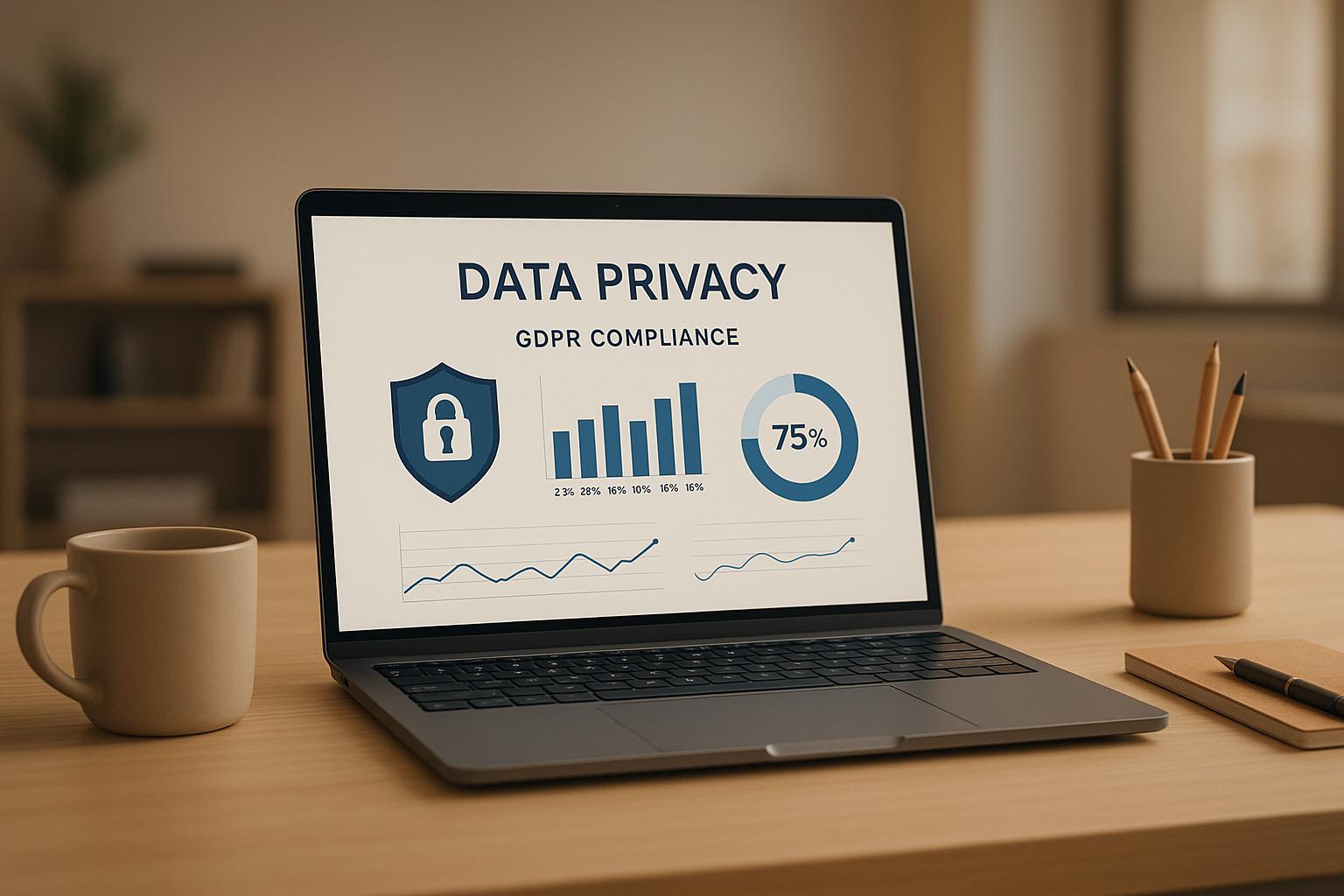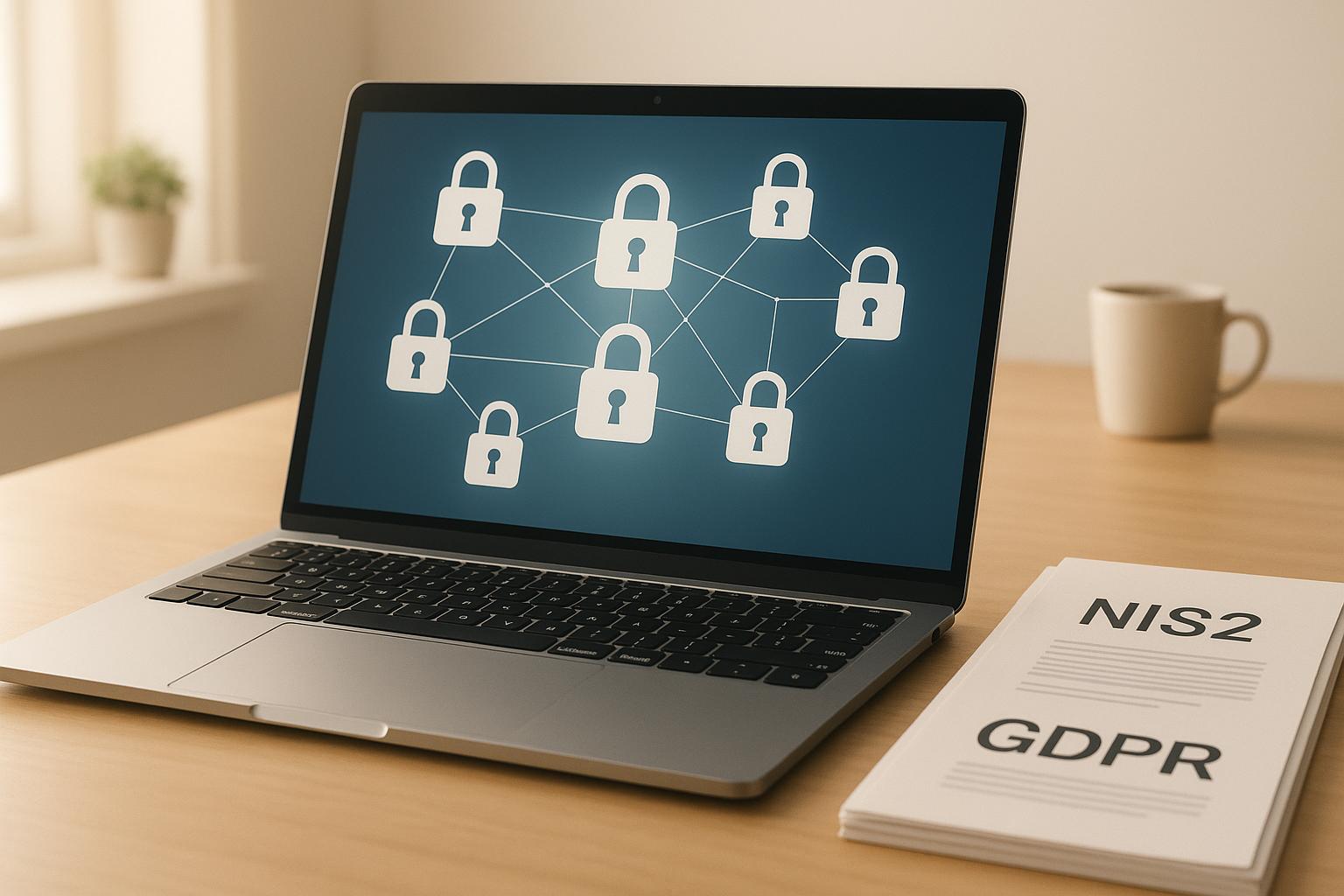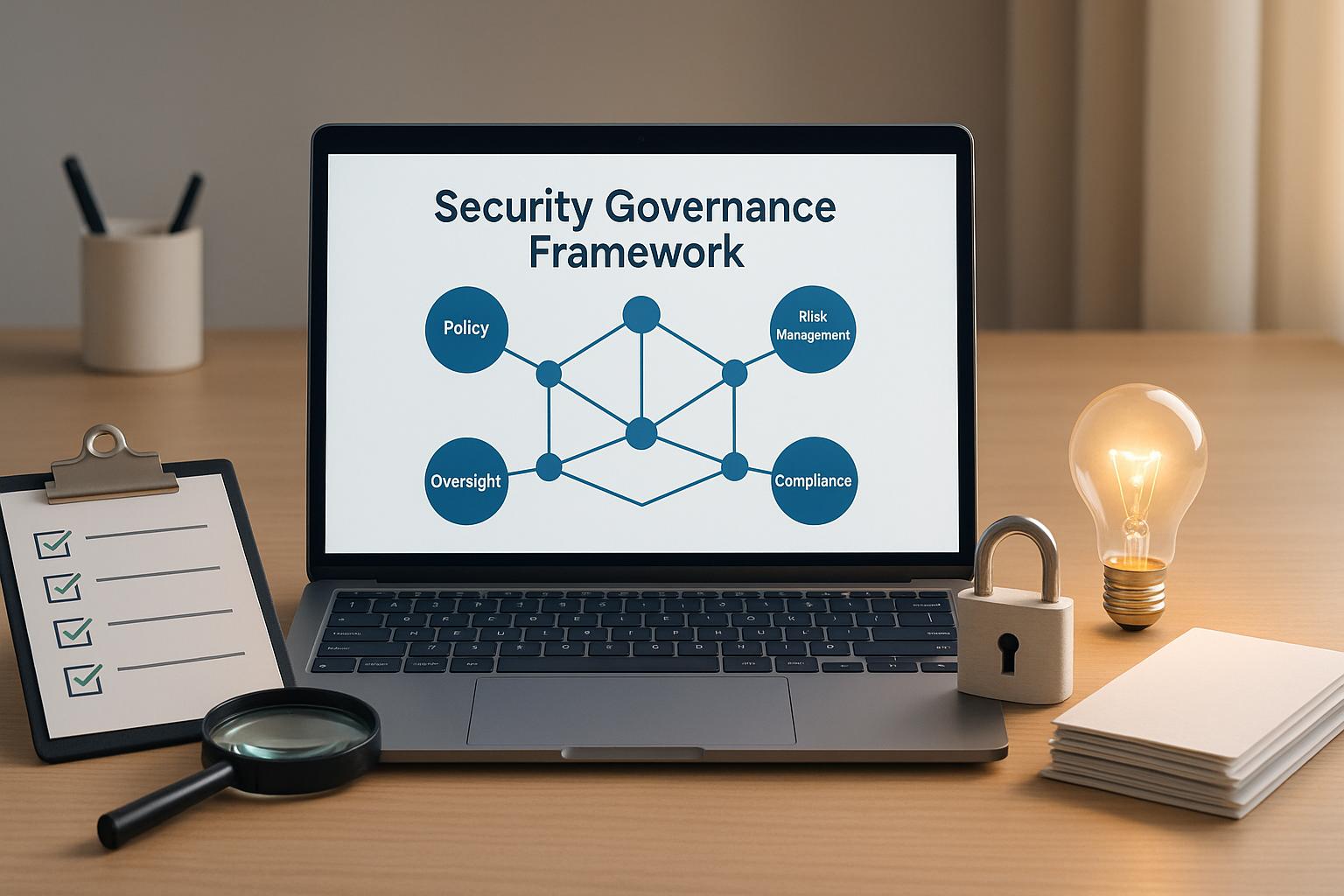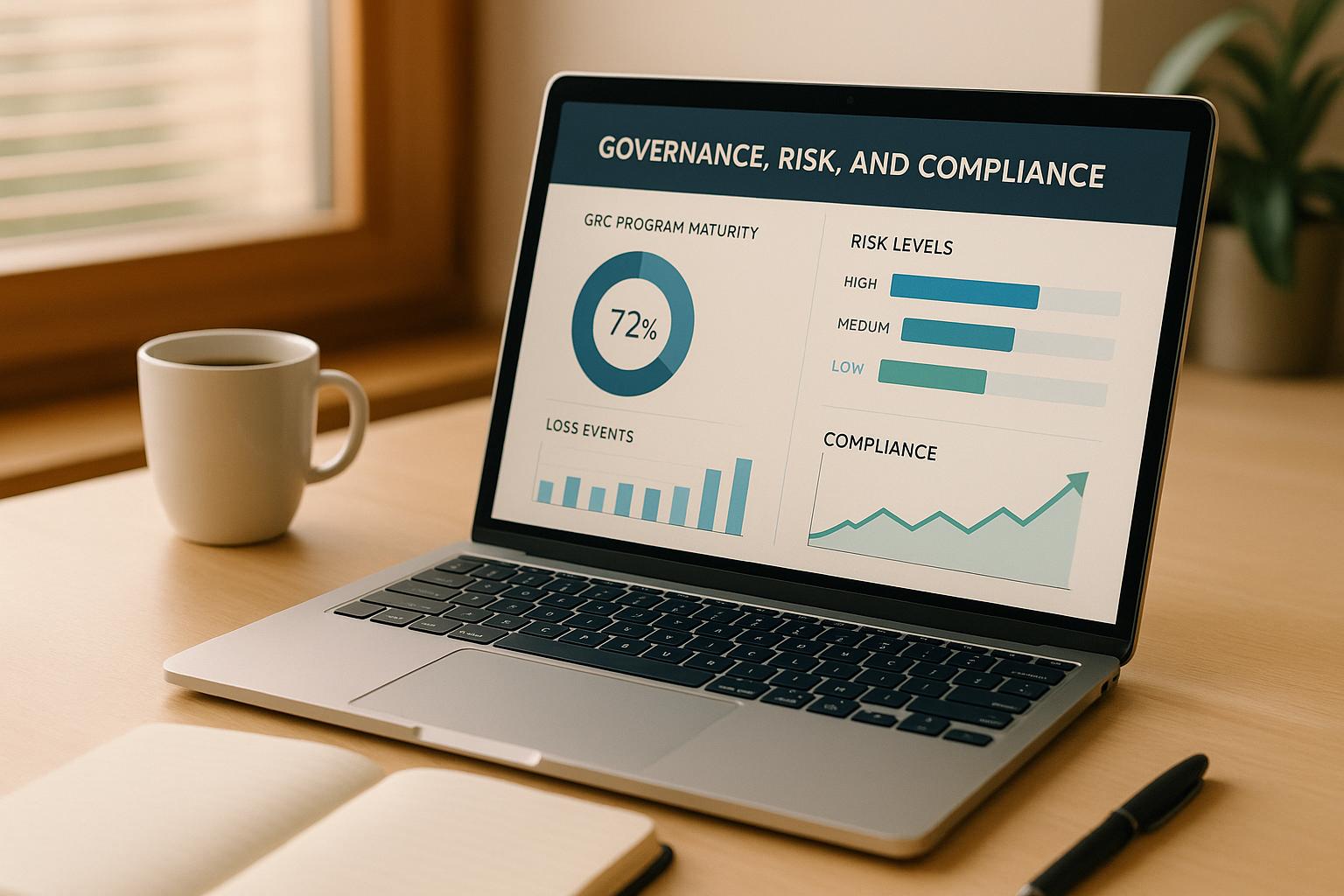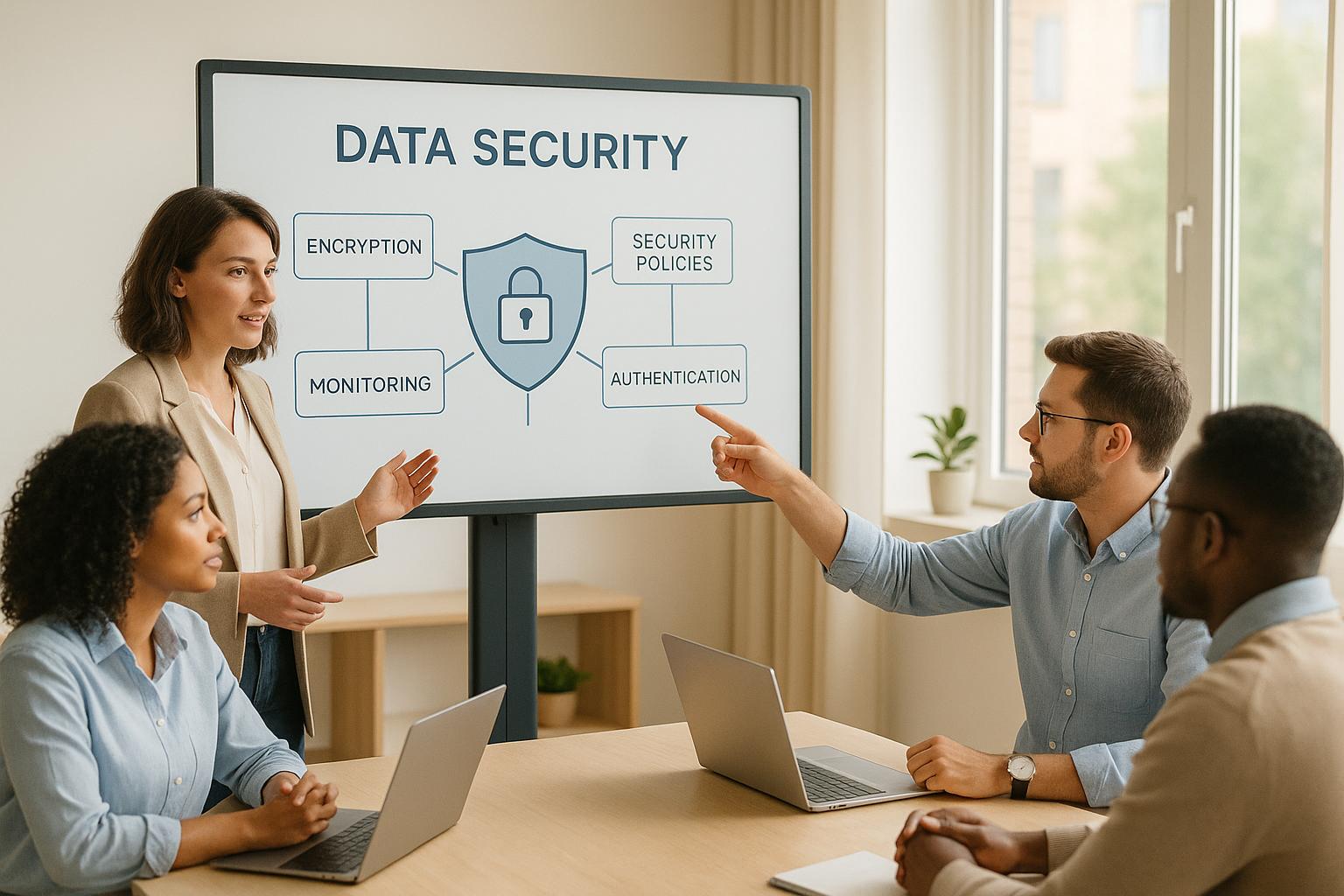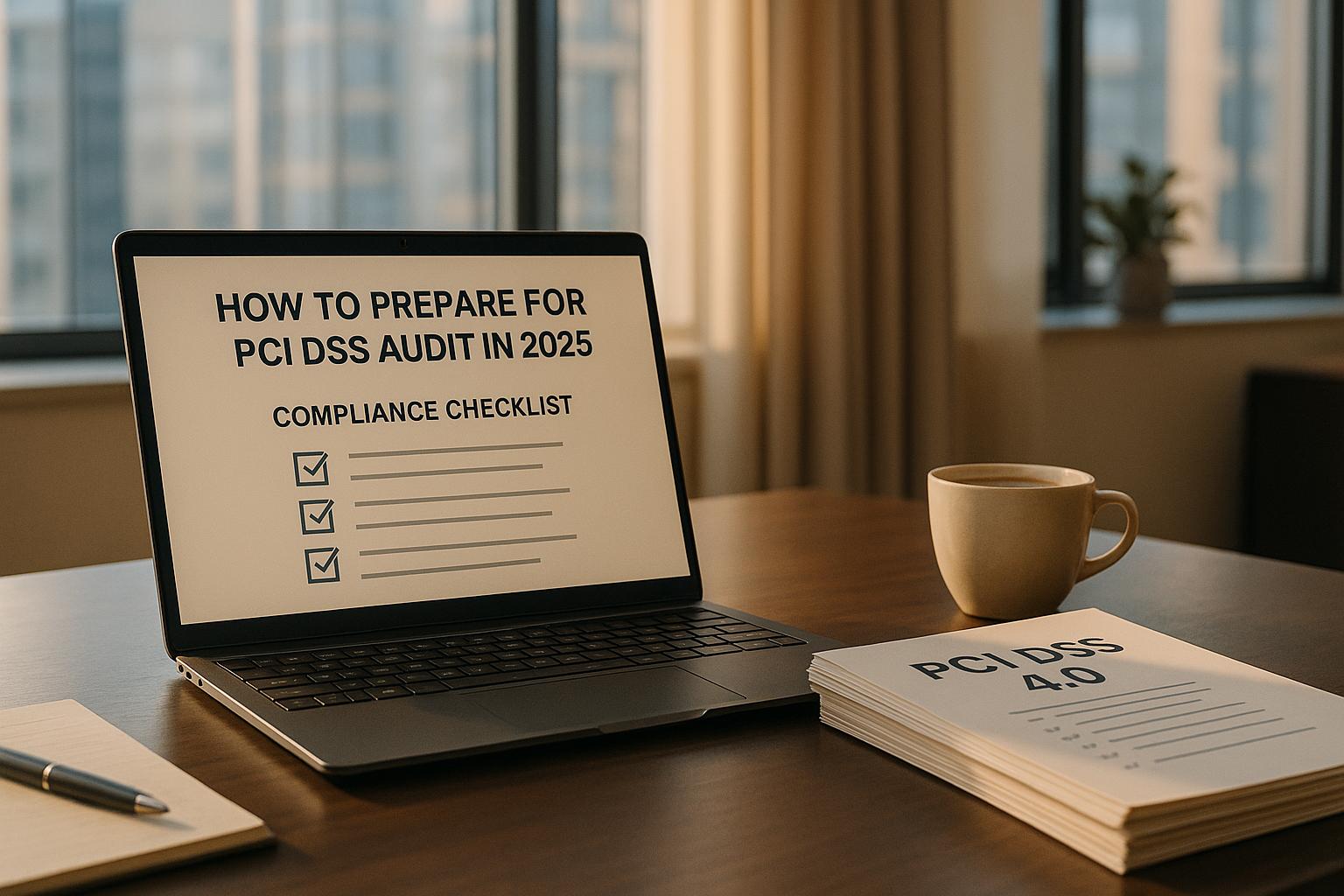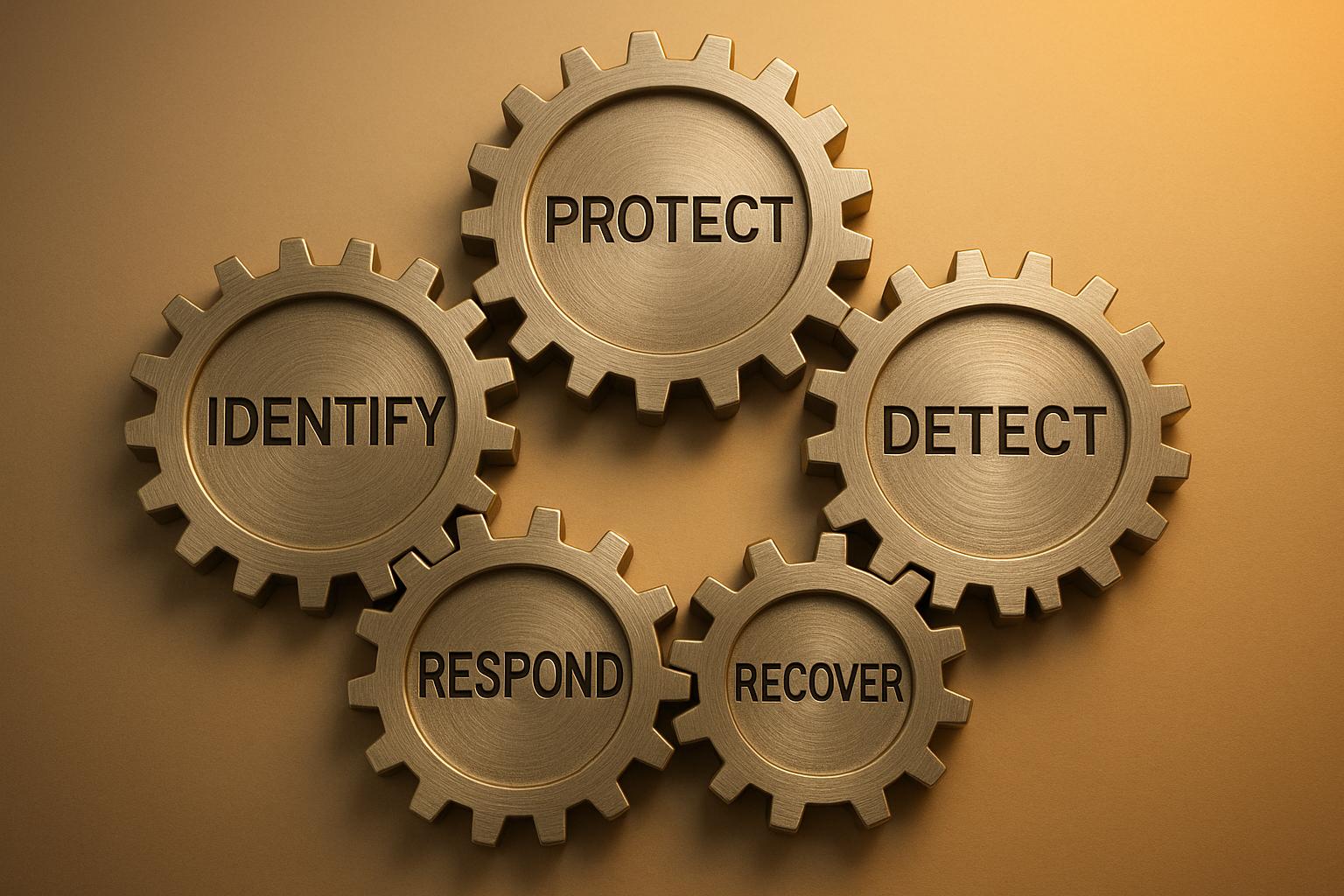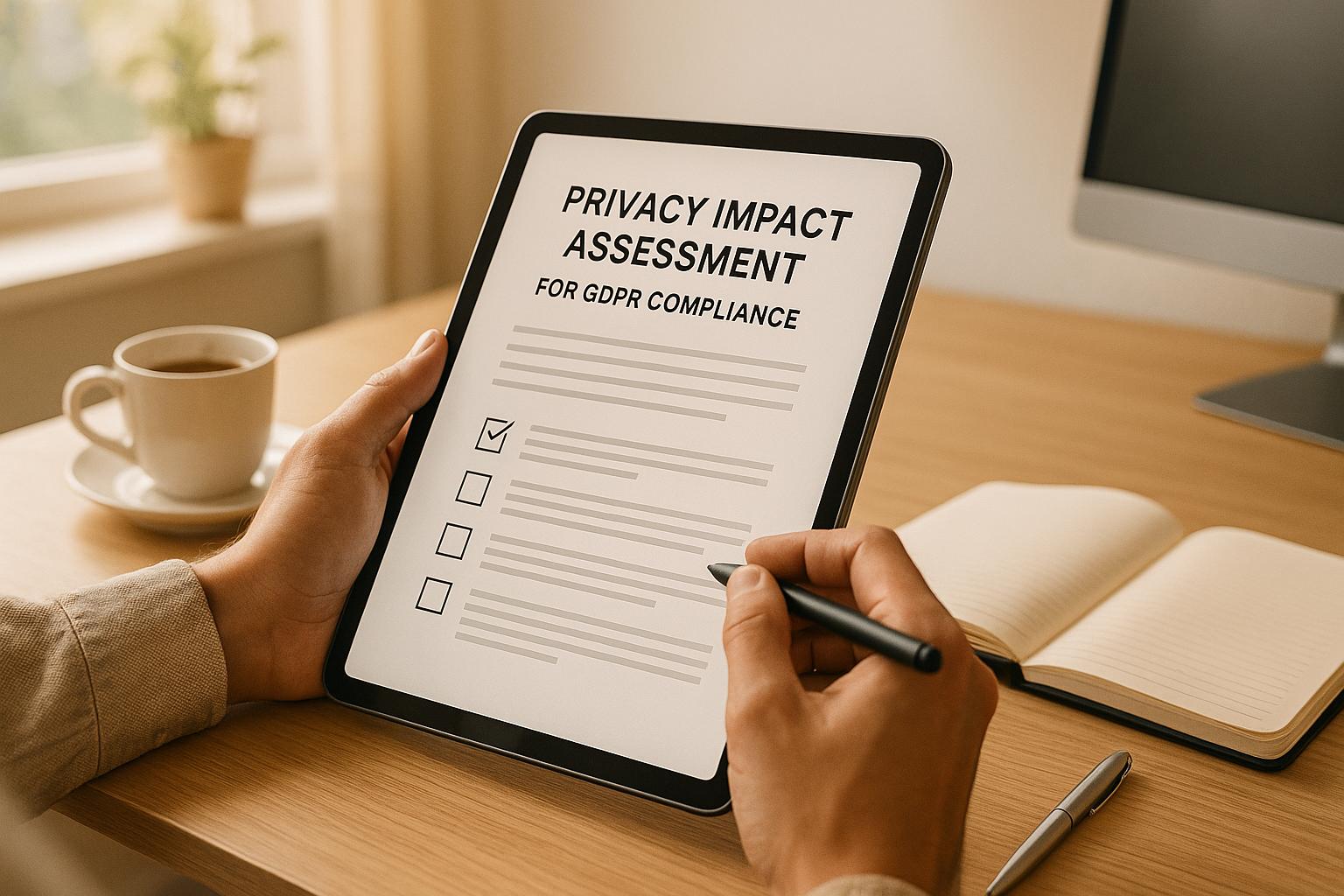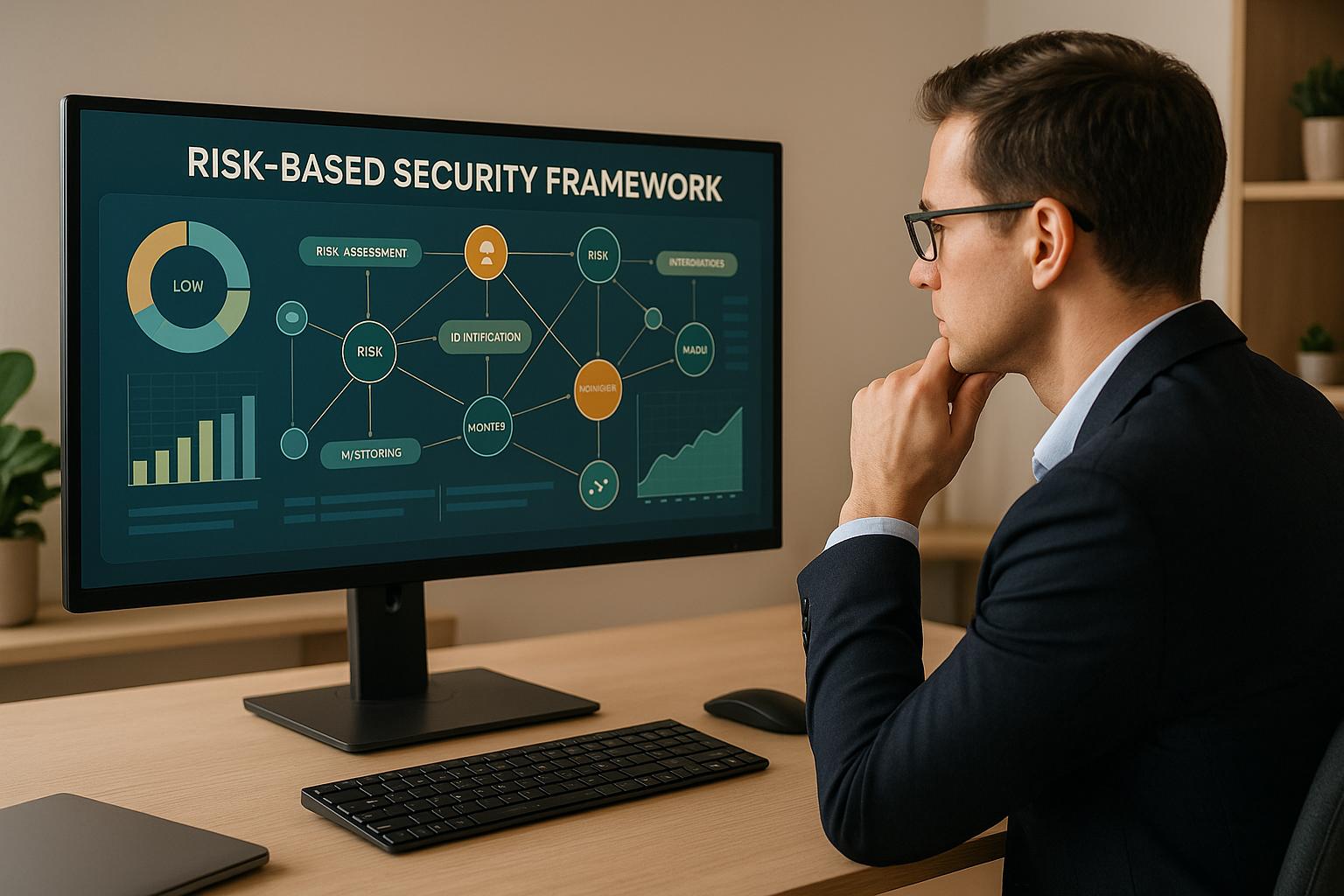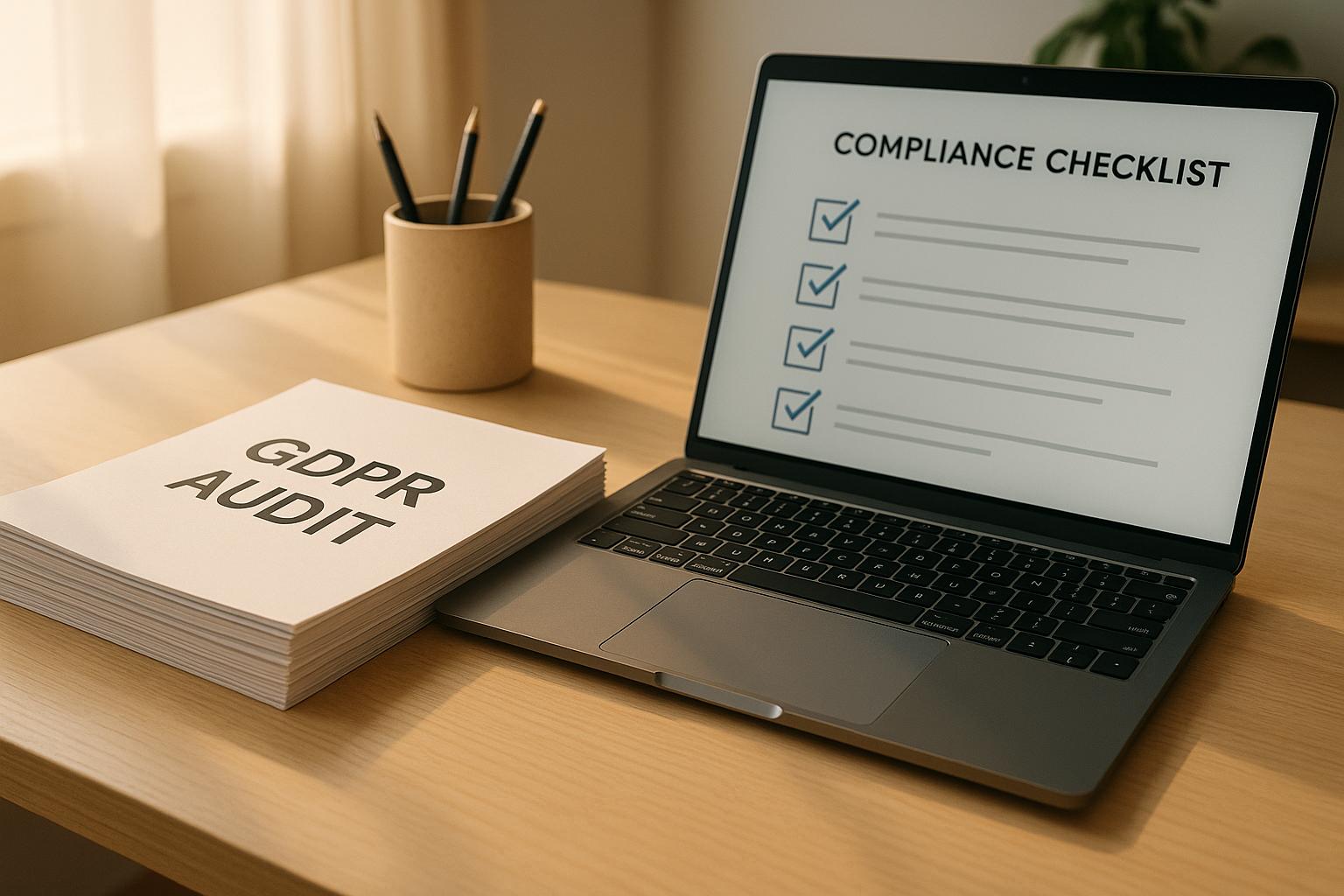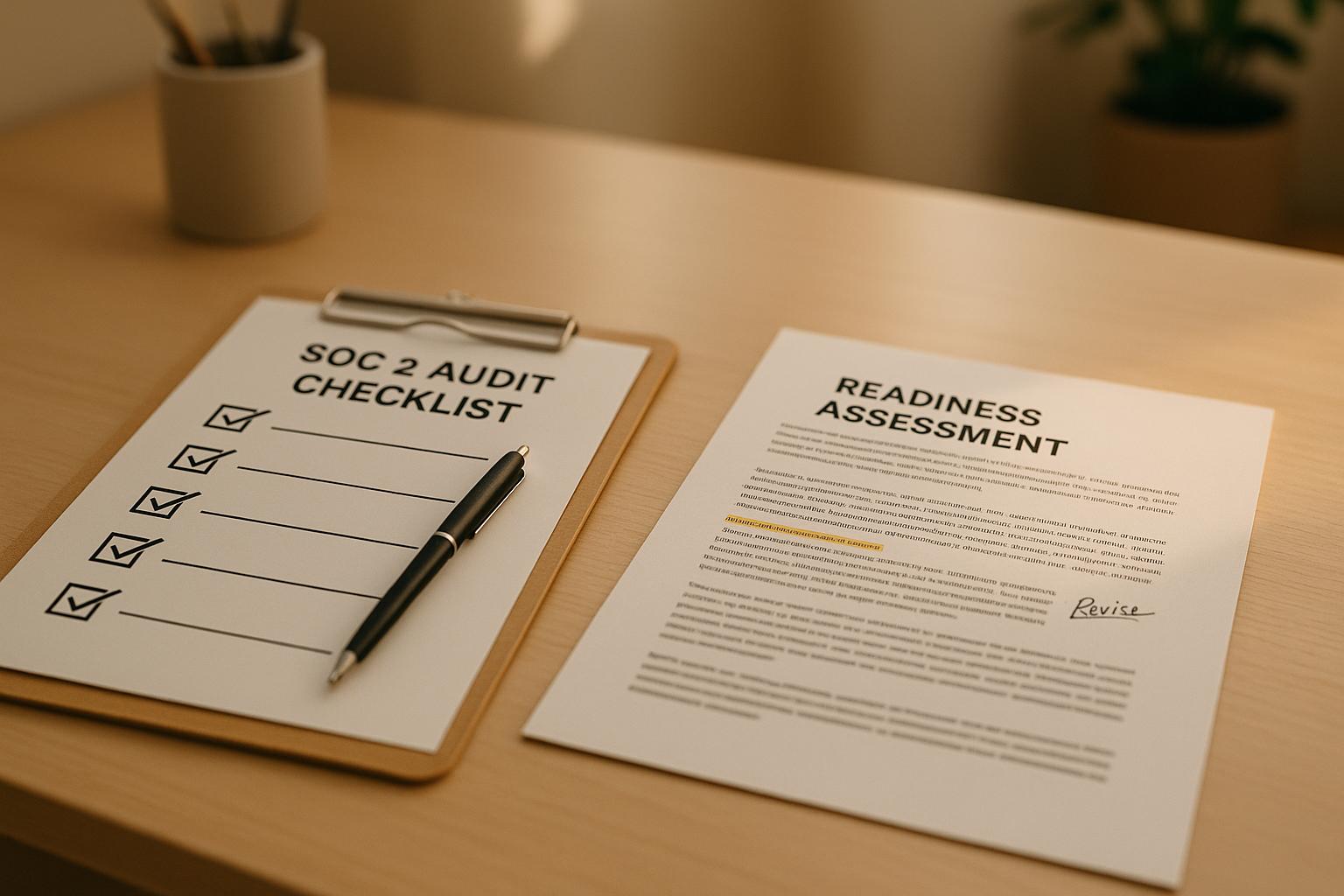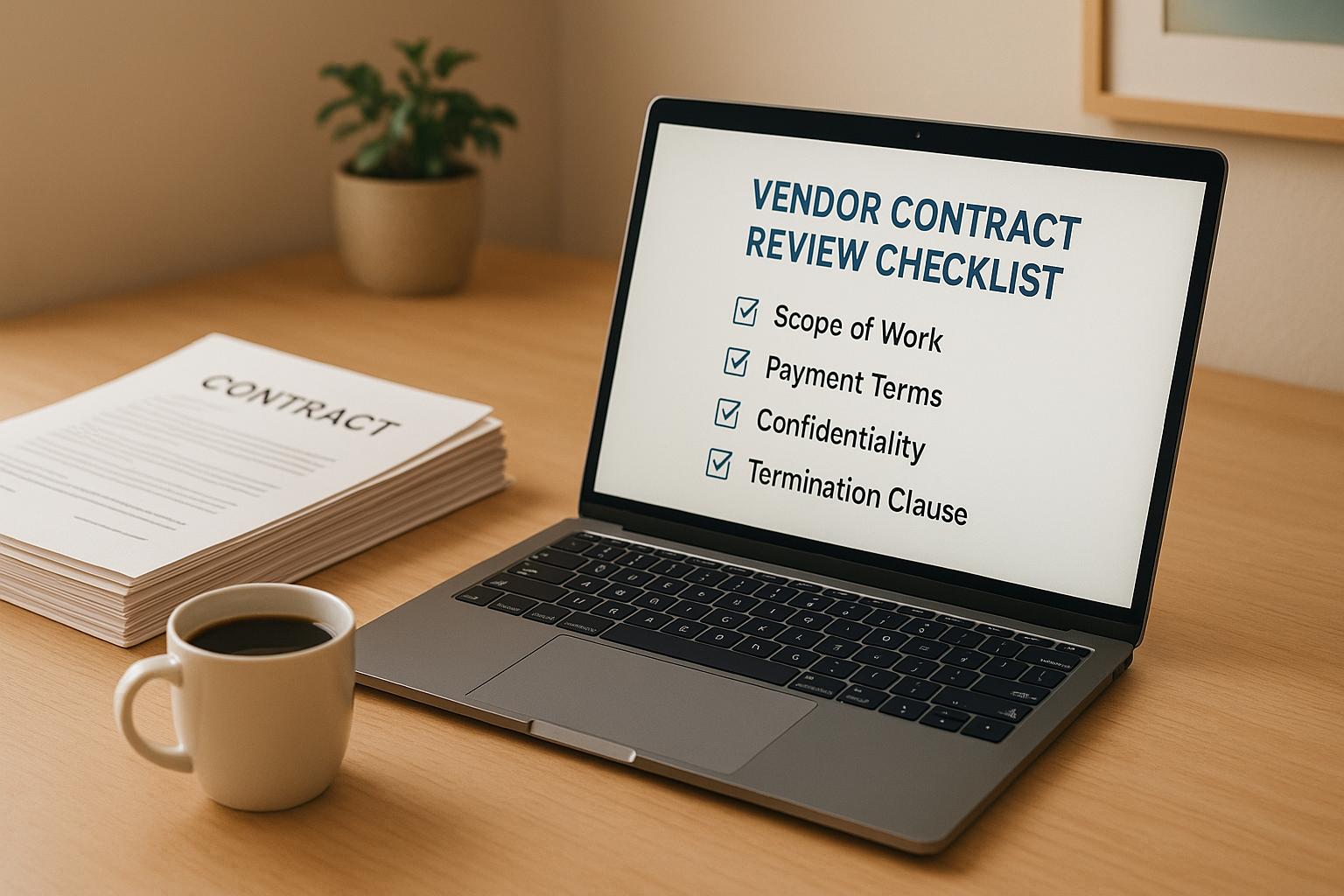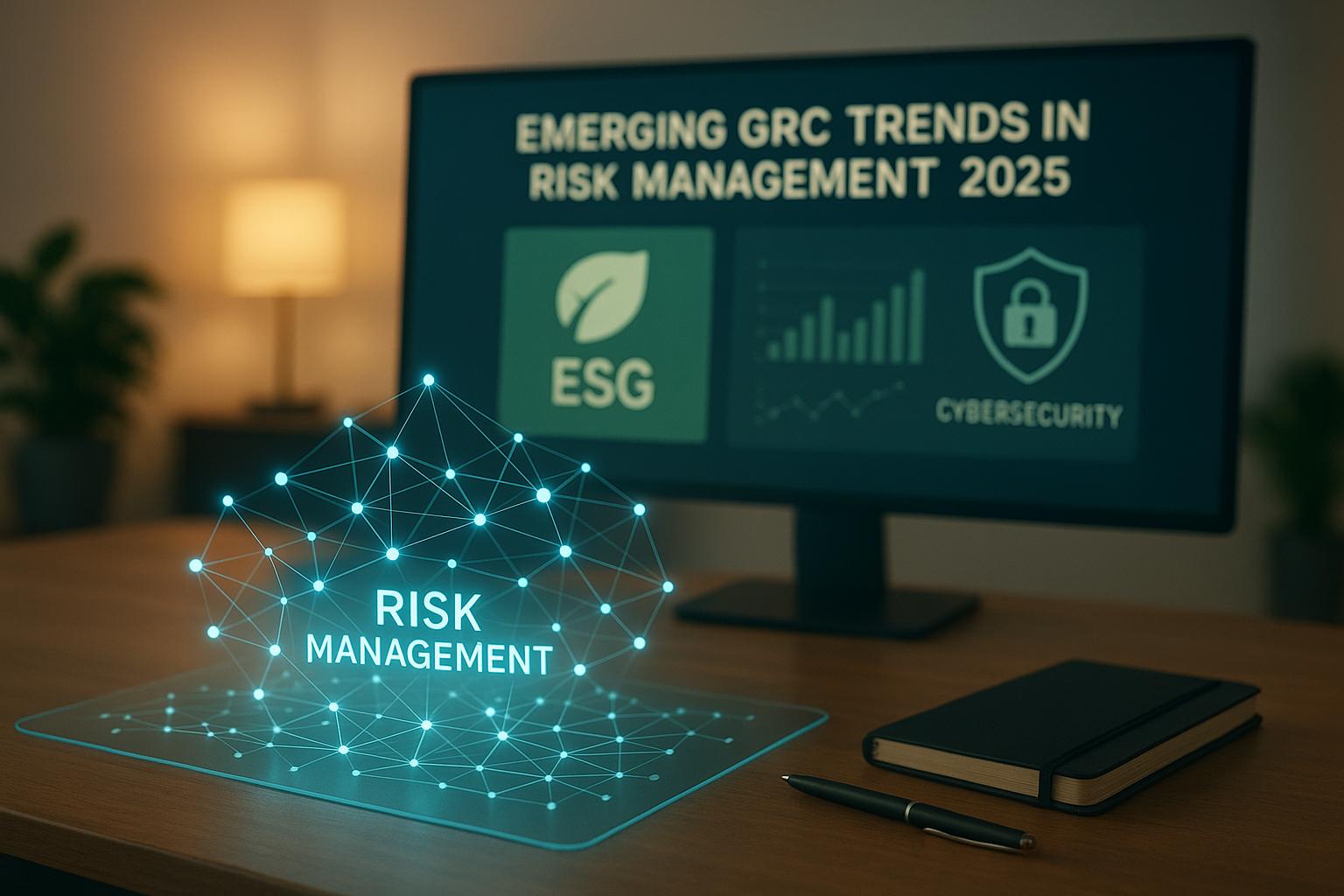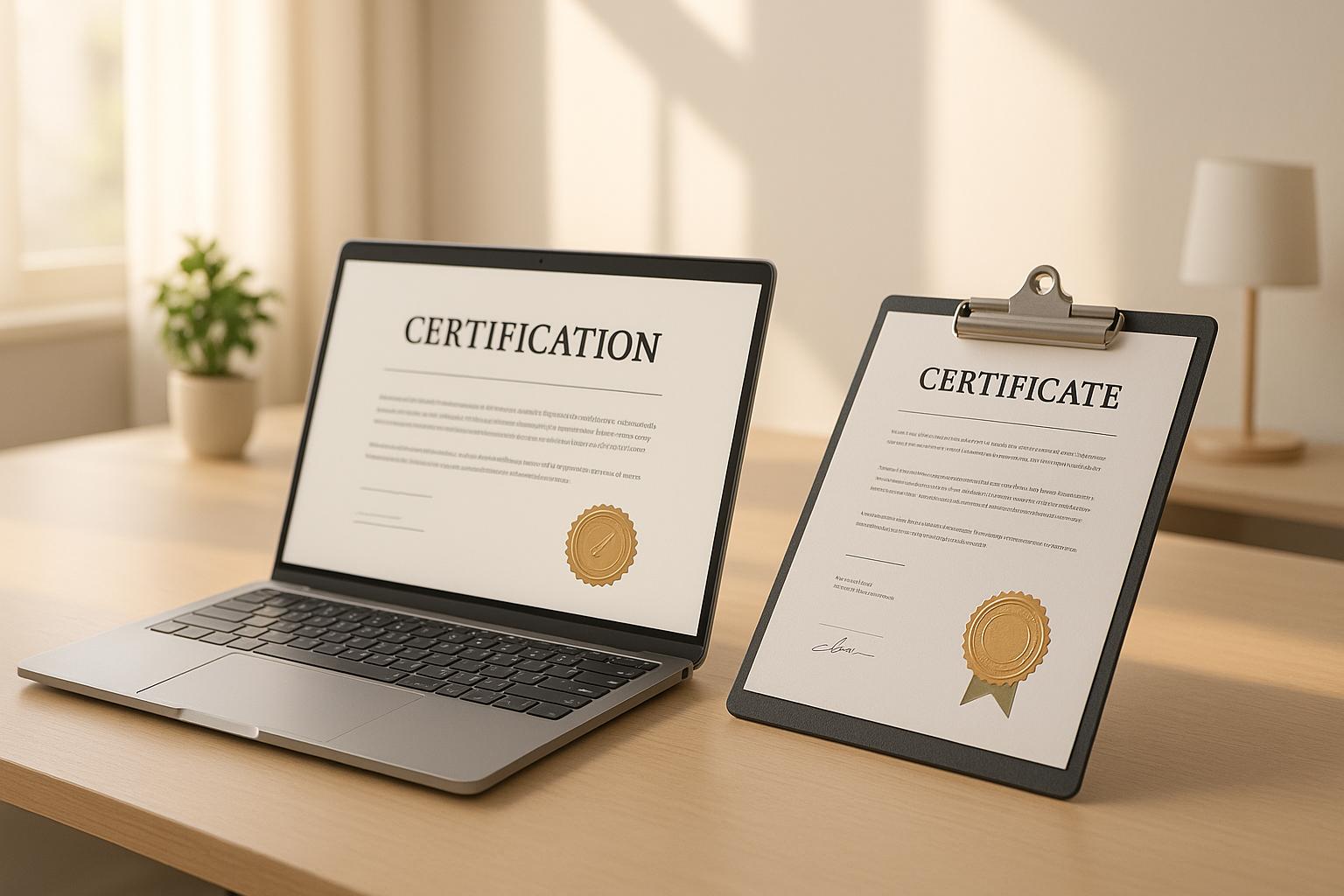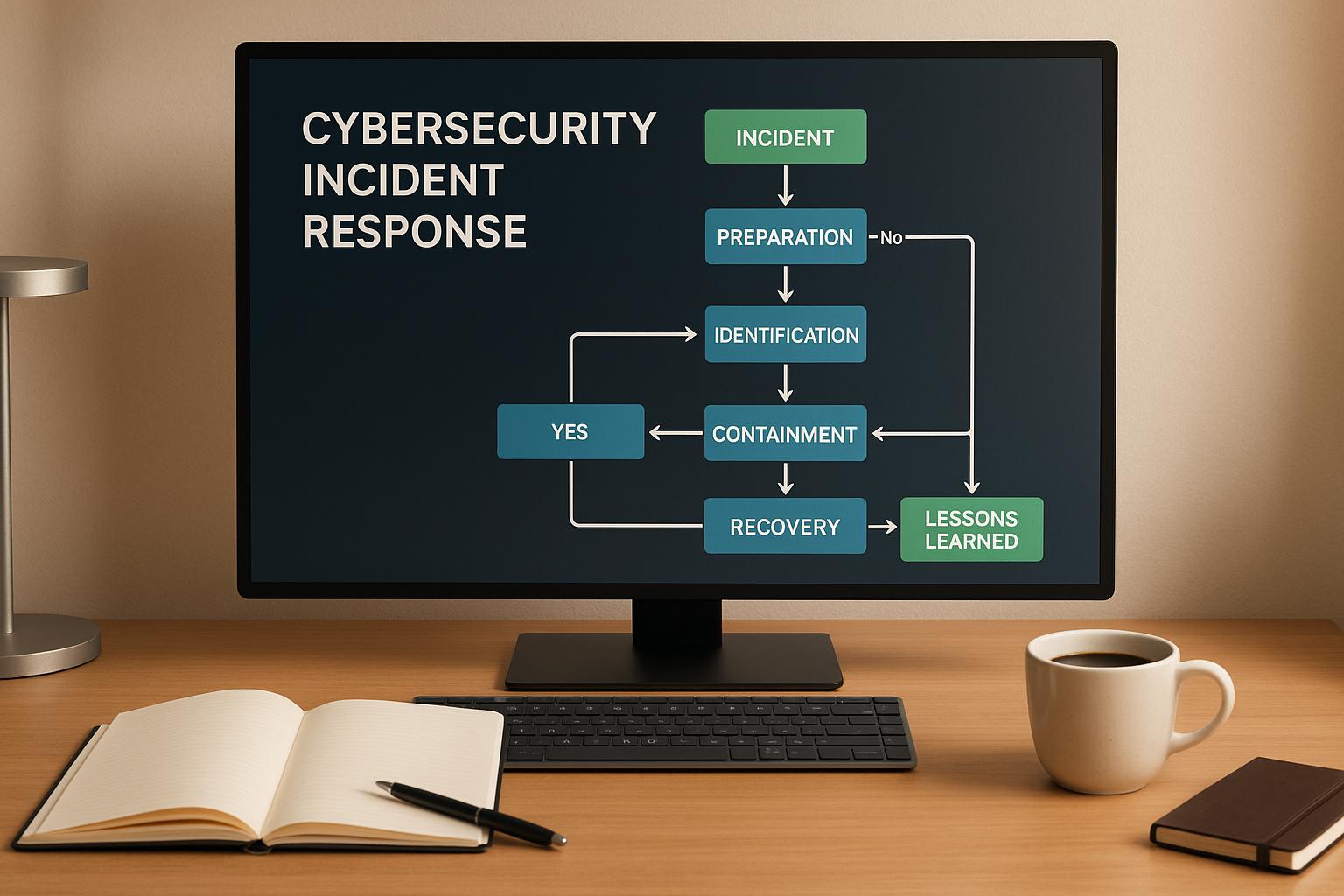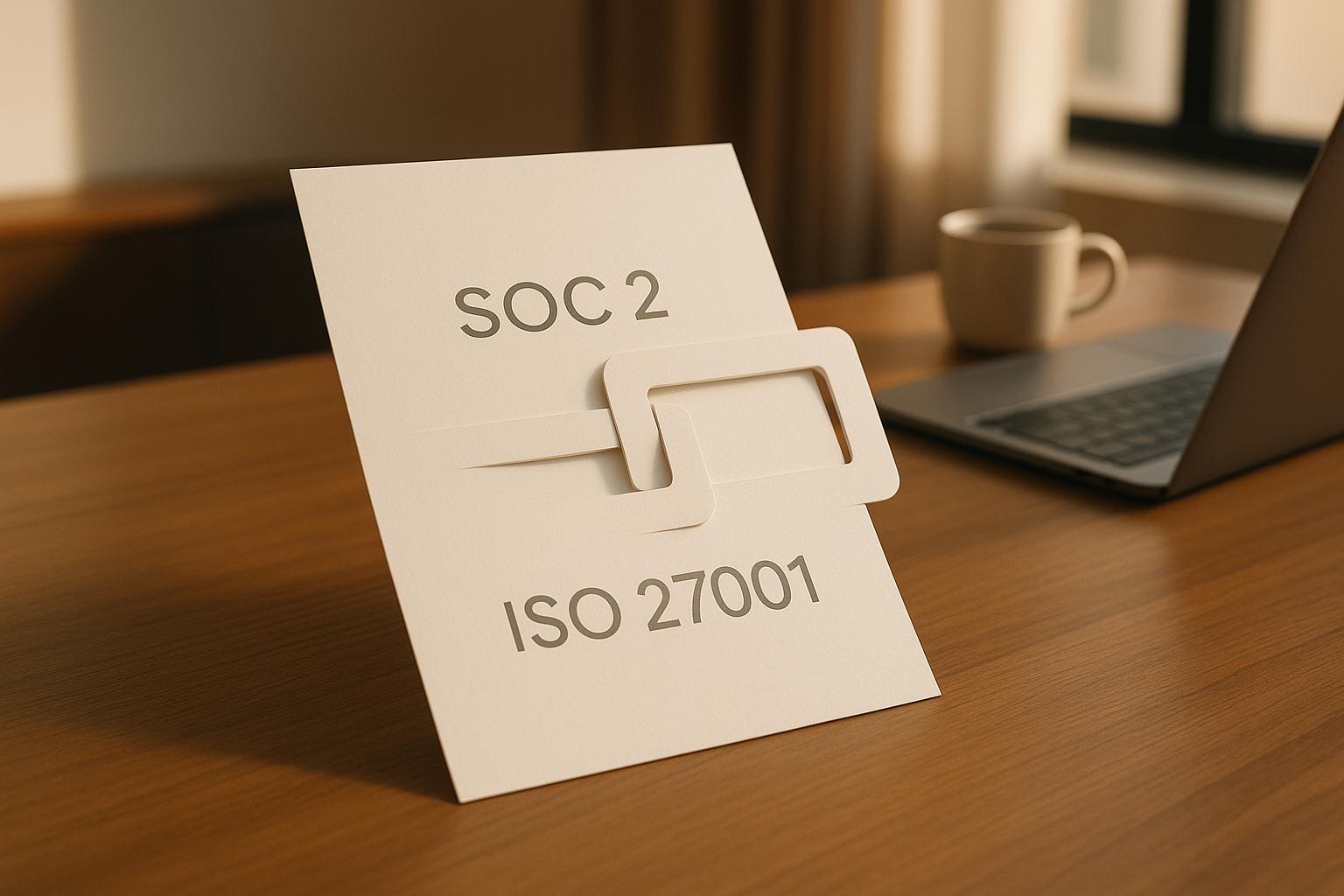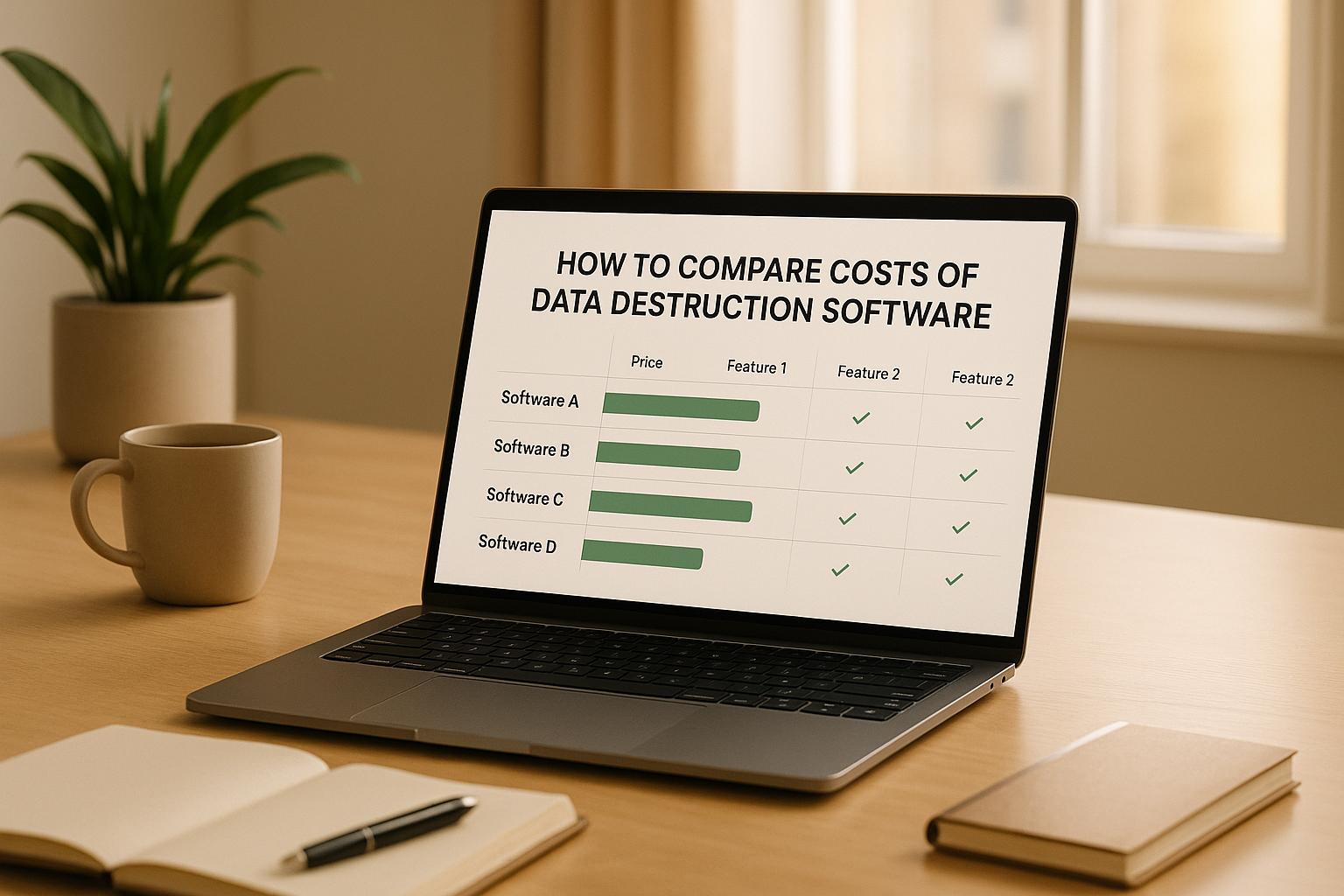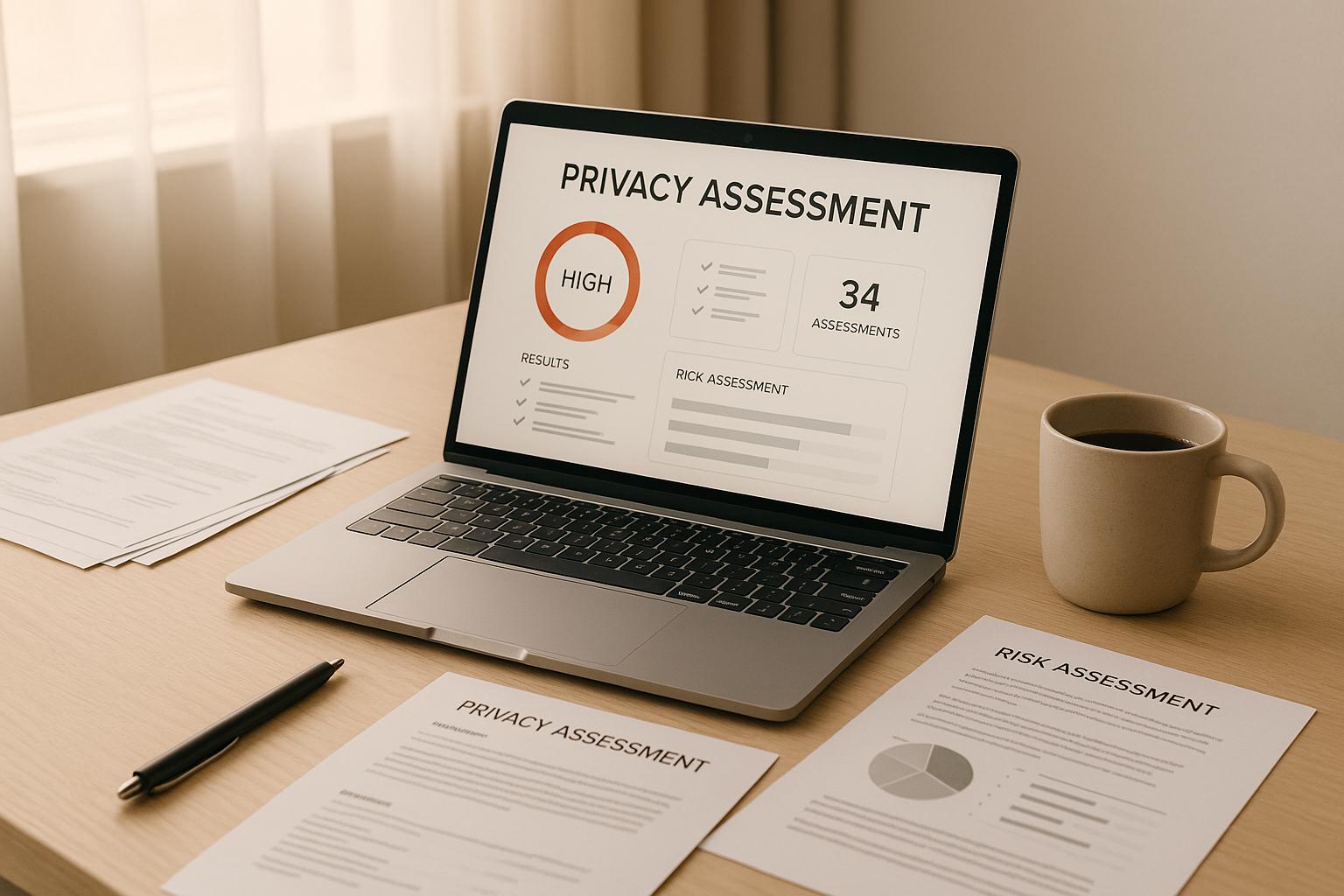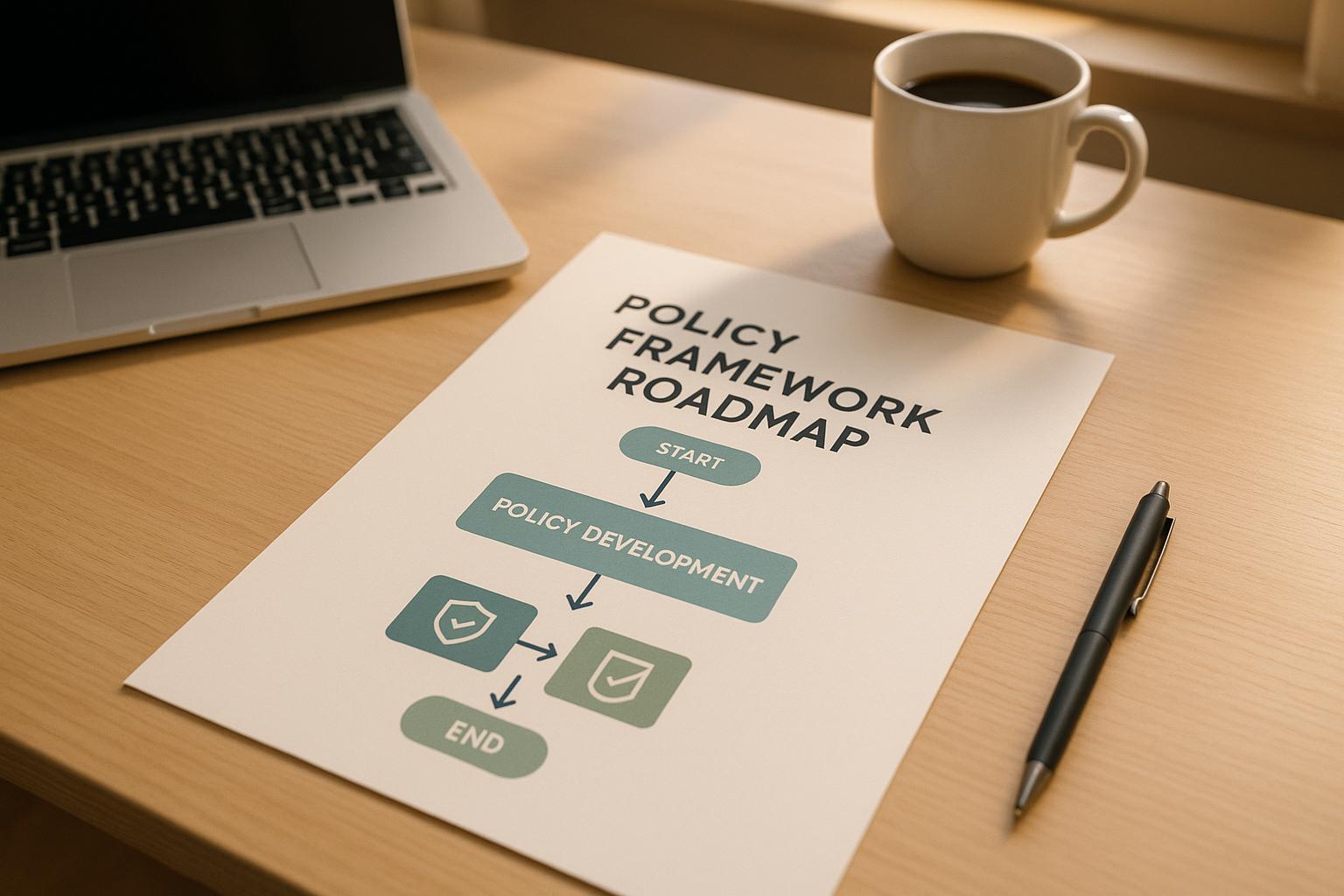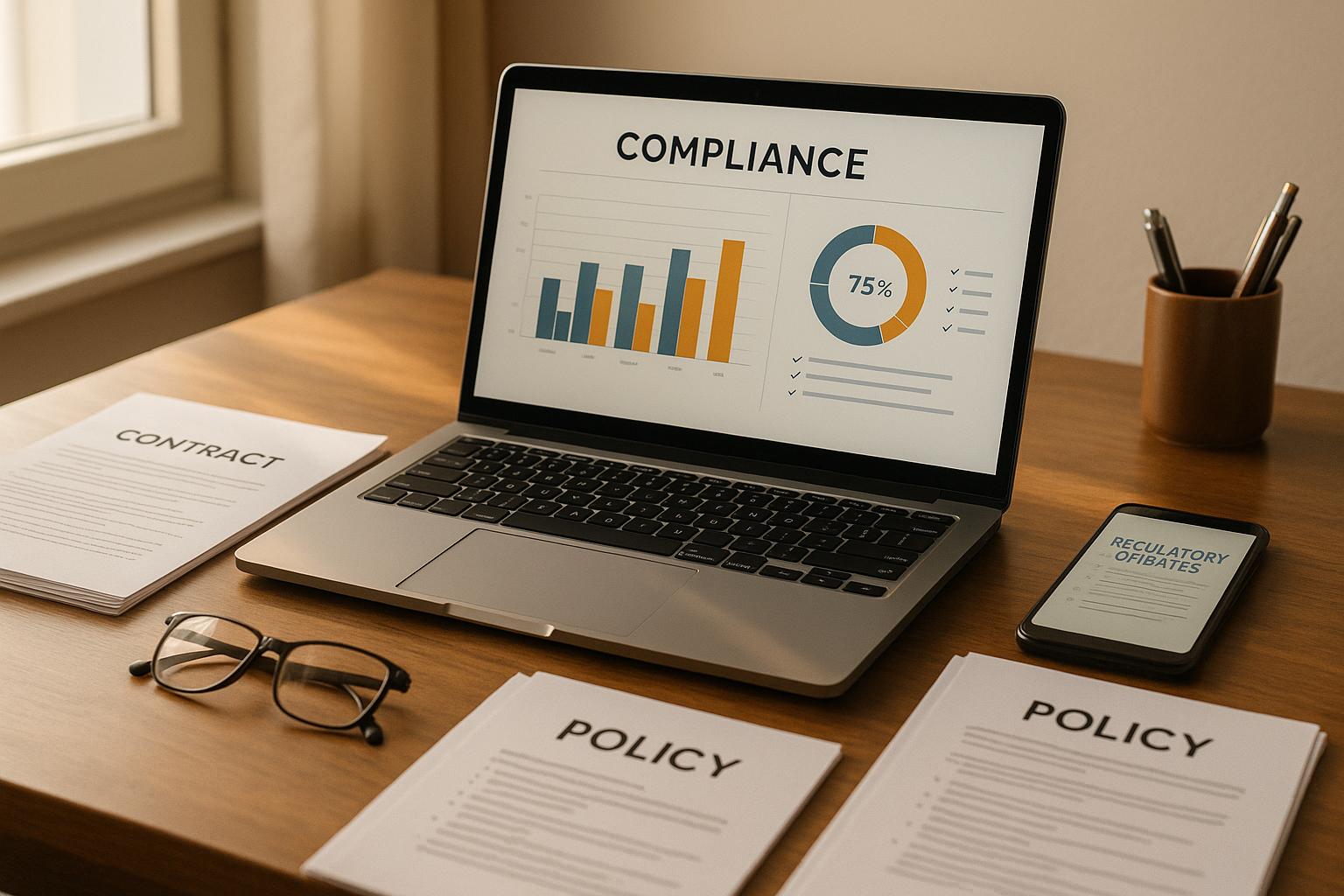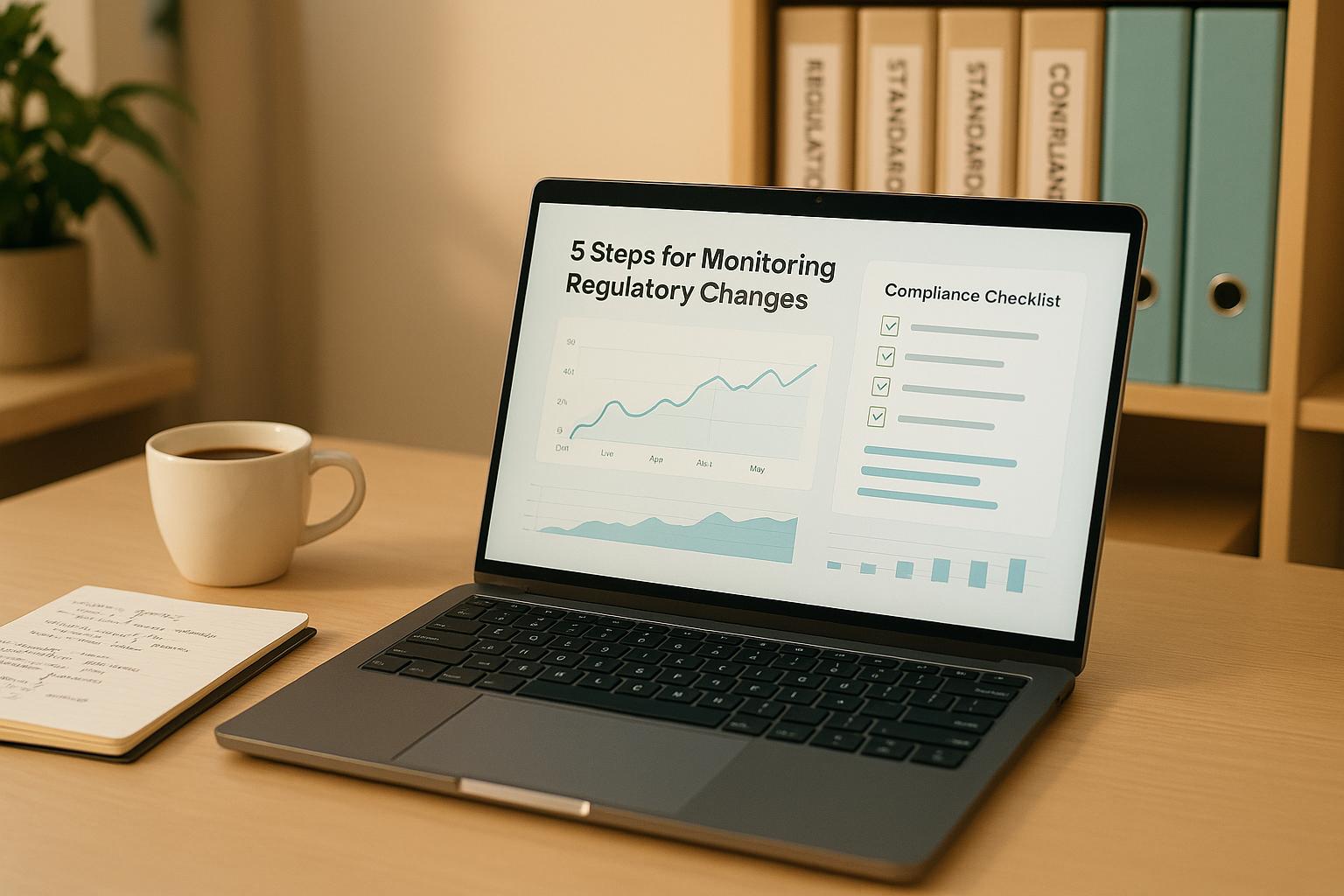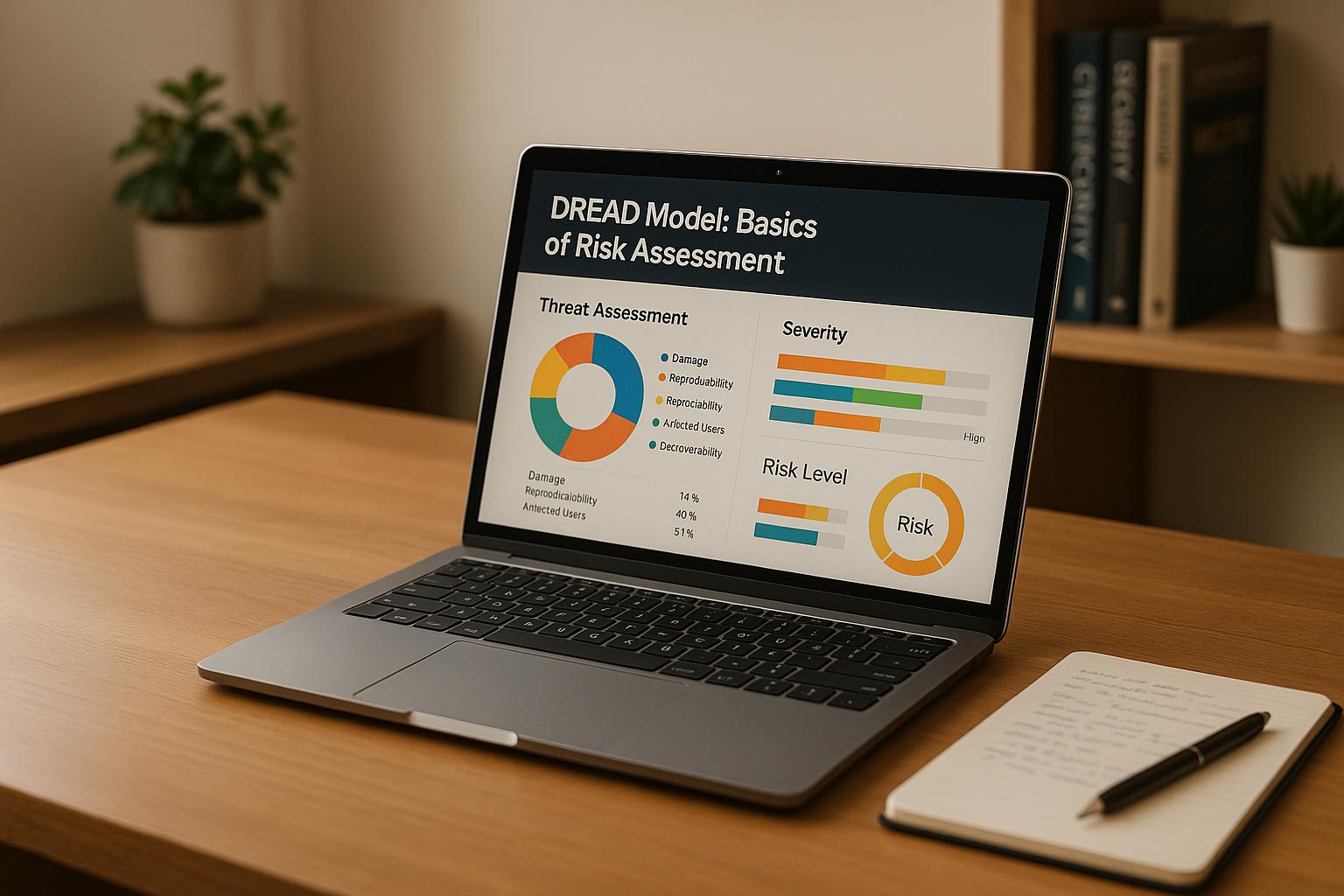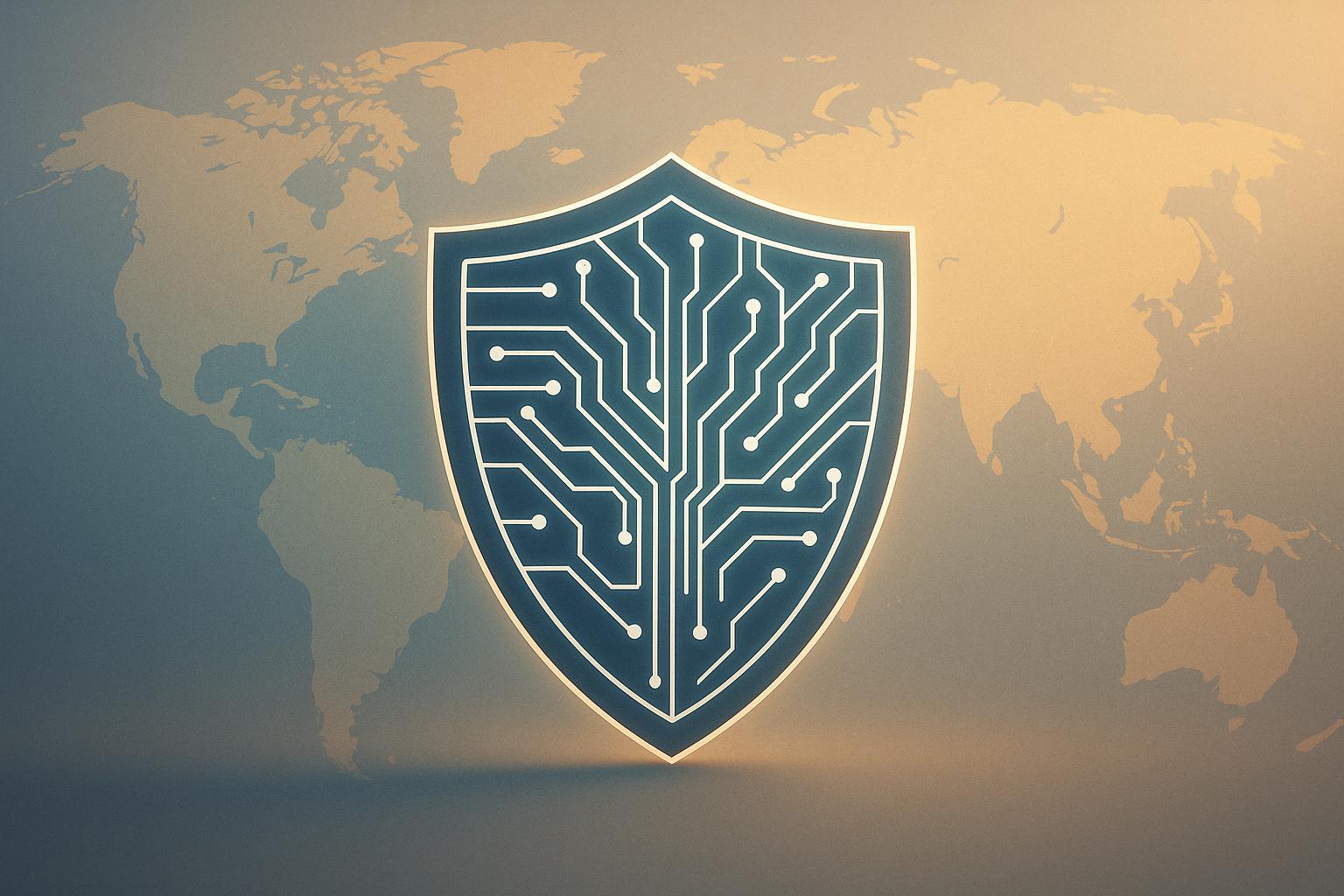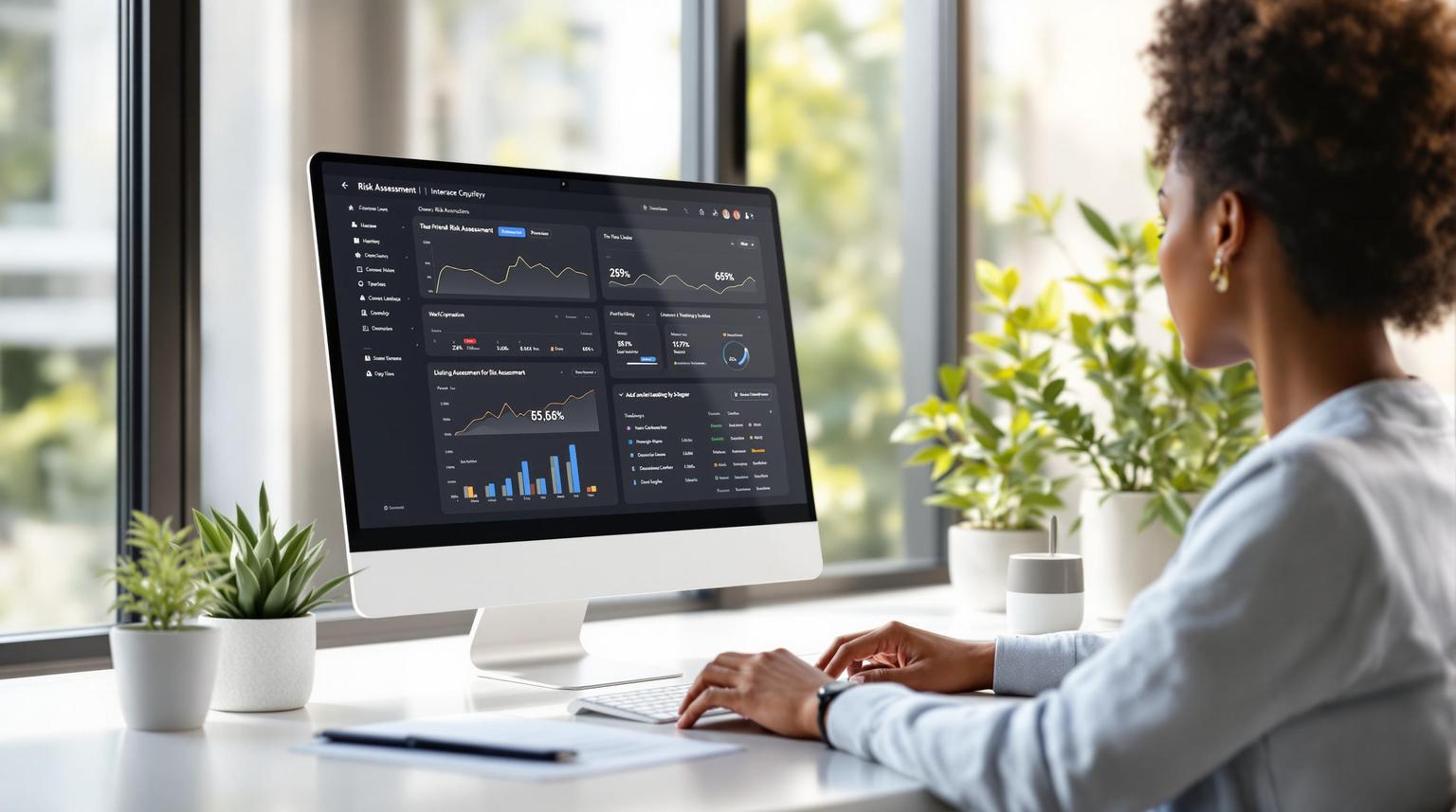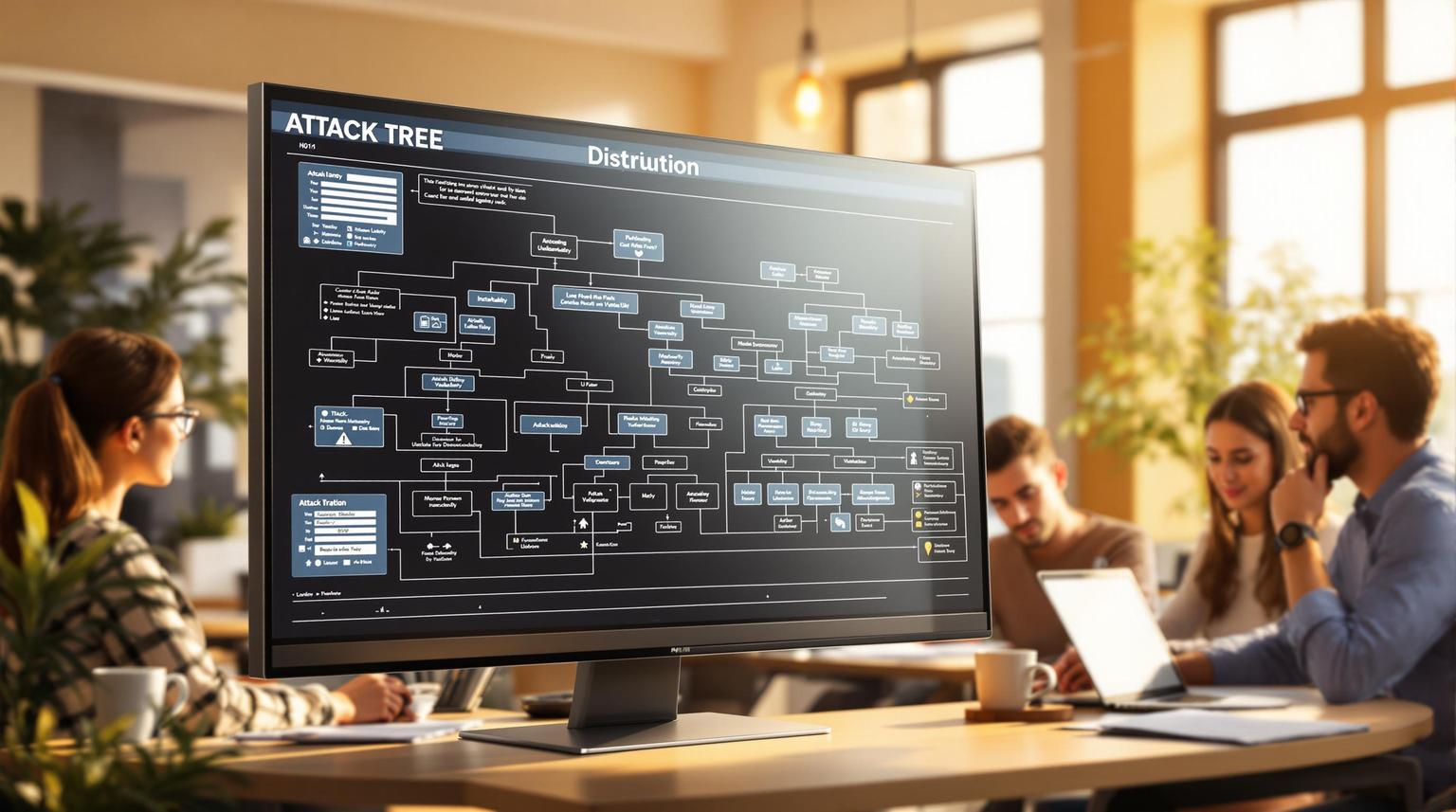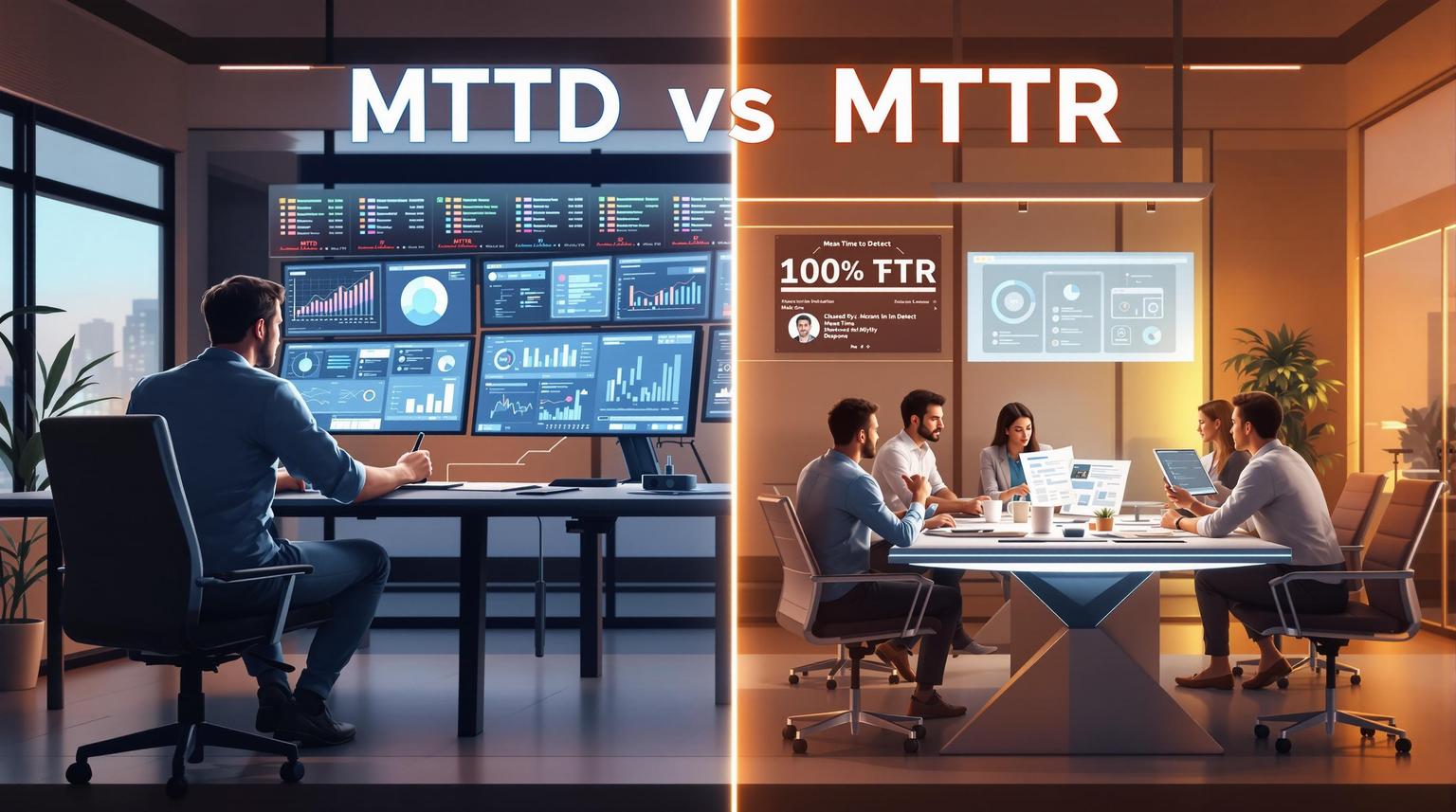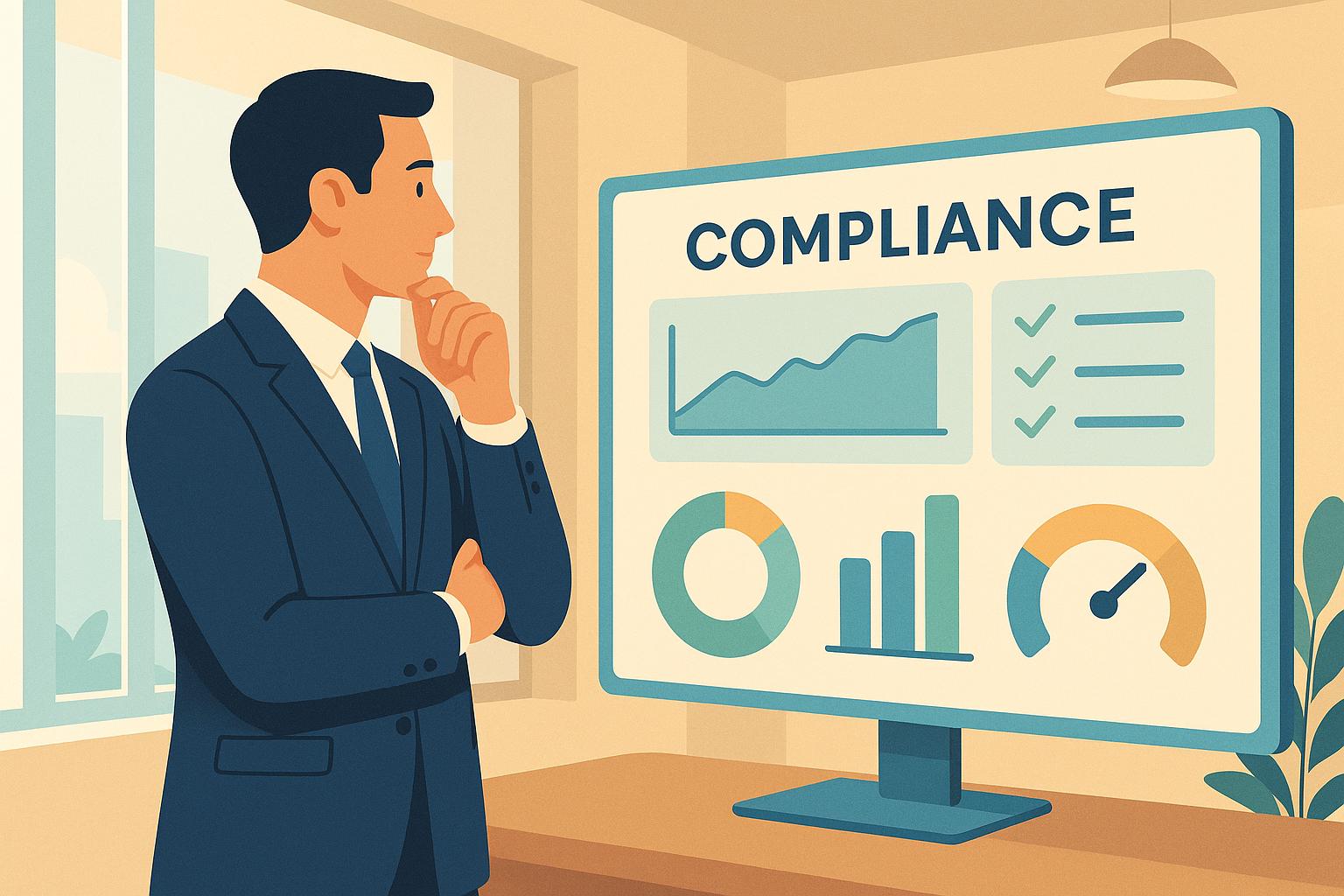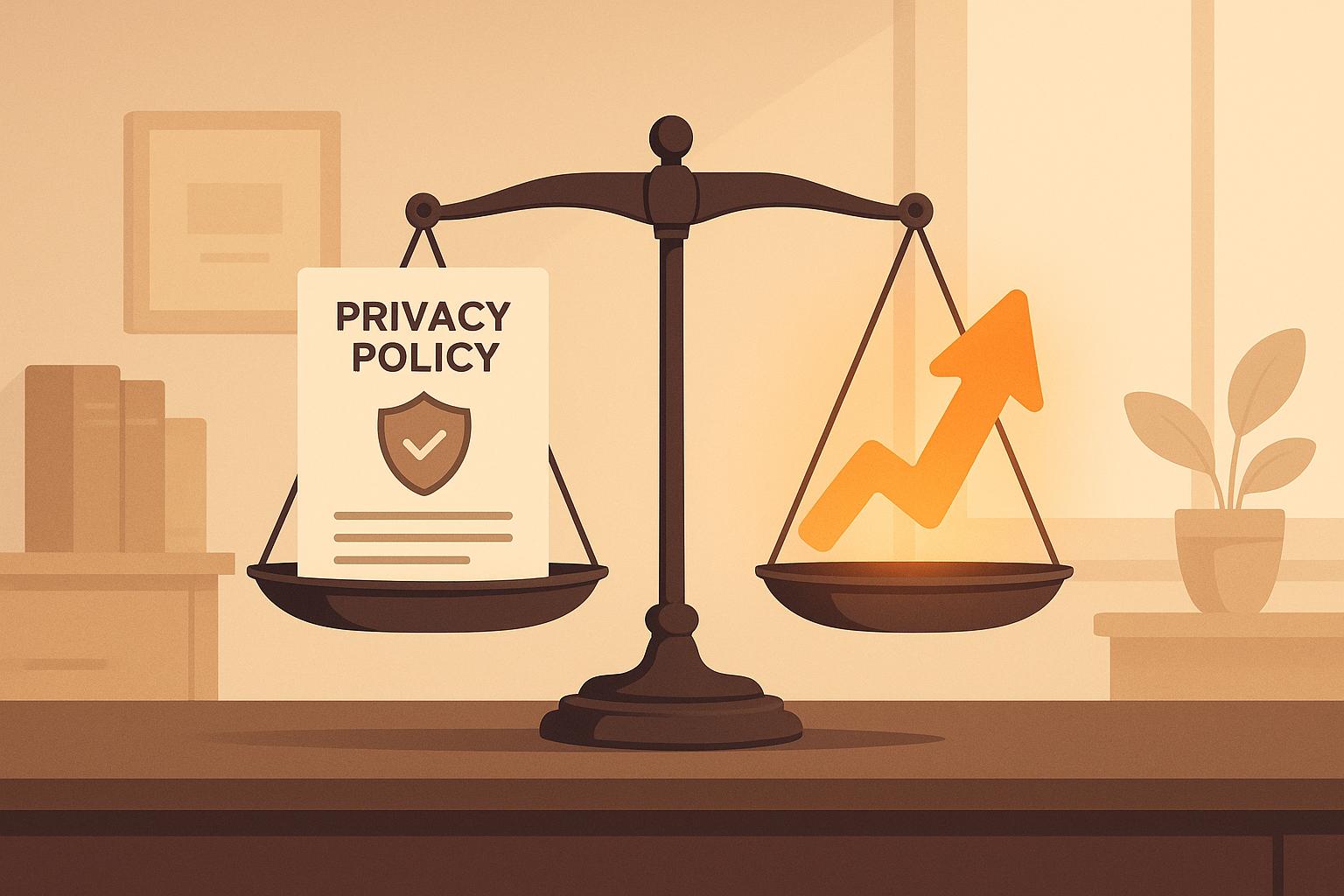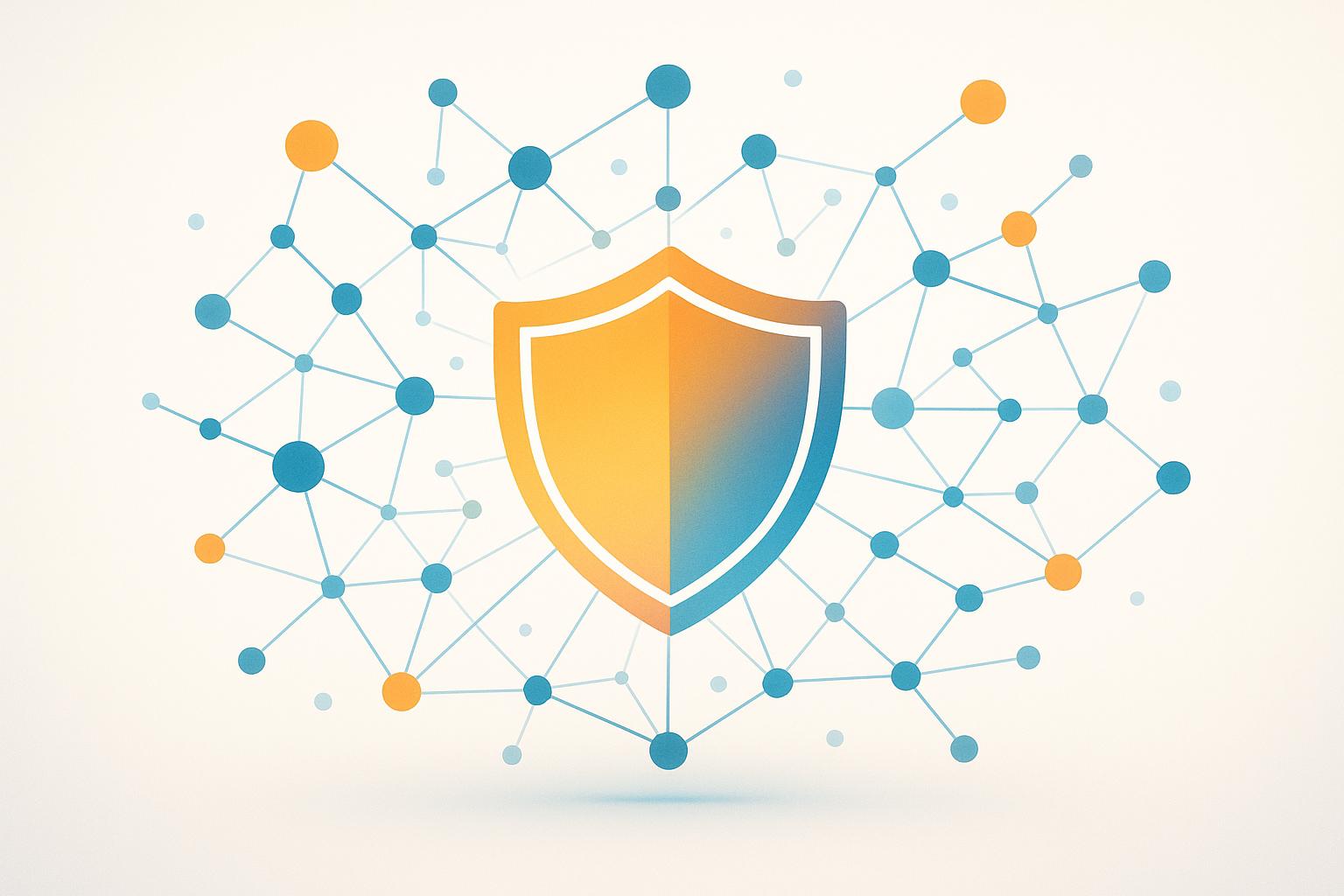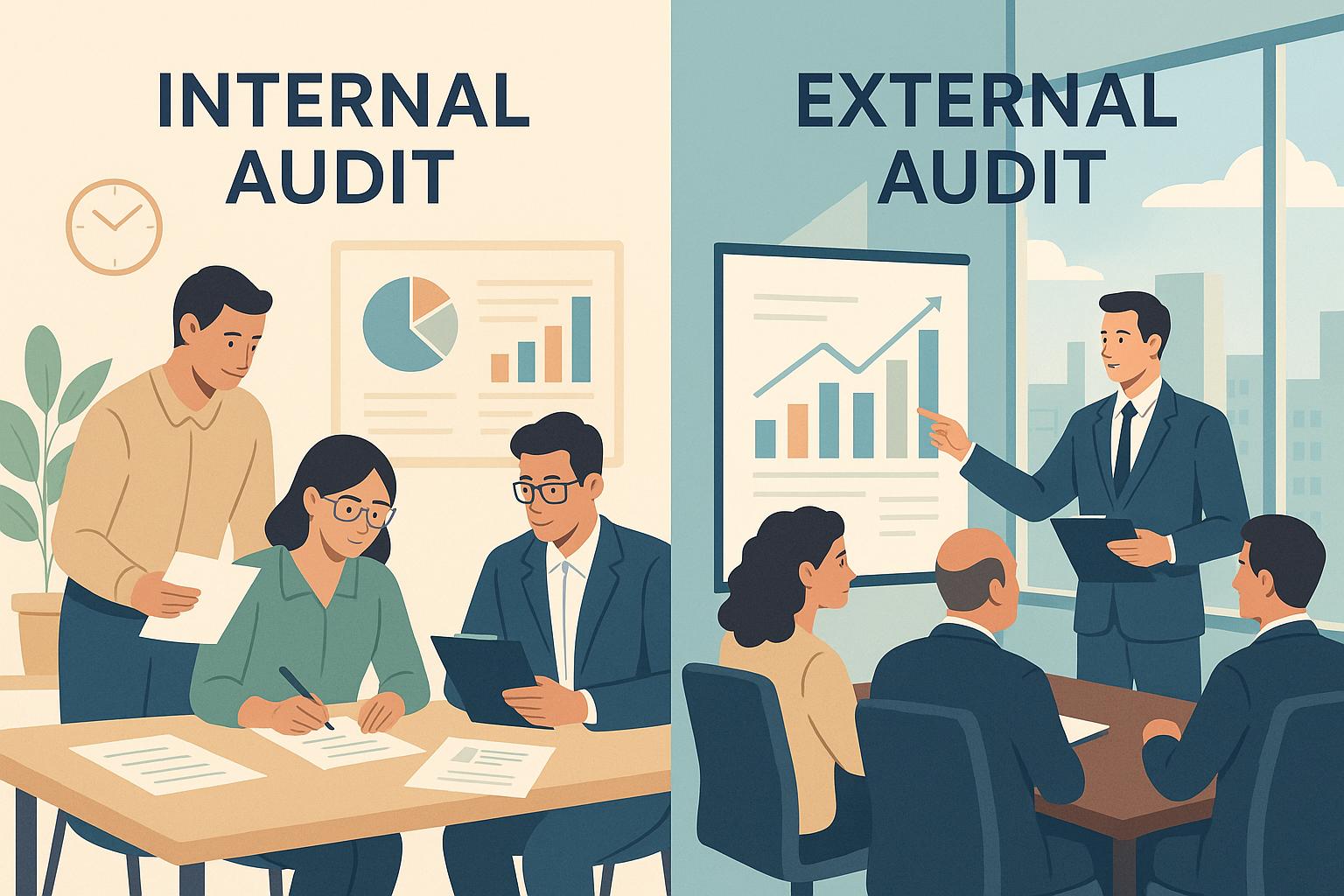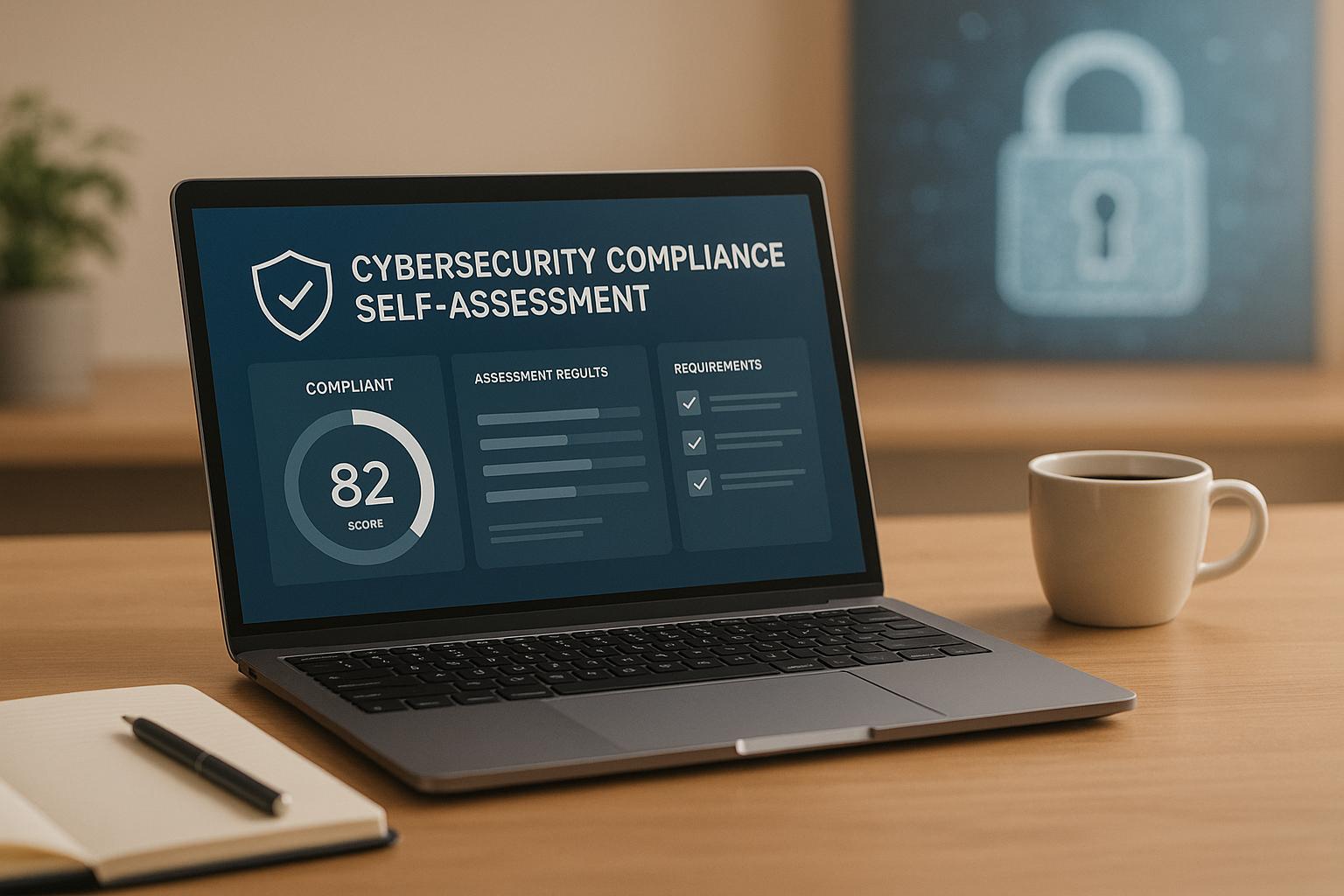
Cybersecurity compliance self-assessments are essential for protecting your business from data breaches and meeting regulatory requirements. Here's why they matter and how to get started:
- Why It’s Important: 60% of small businesses shut down within six months of a data breach. Regular assessments help identify vulnerabilities, reduce risks, and build trust with clients.
- Key Frameworks: SOC 2, HIPAA, ISO 27001, and GDPR are the most common compliance standards. Each has unique requirements based on your industry and type of data handled.
- Steps to Start:
- Identify which framework applies to your business.
- Review your IT systems, policies, and data handling.
- Compare your practices against compliance standards.
- Create an action plan to fix gaps.
- Prepare for external audits with proper documentation and training.
Quick Tip: Use automated tools like Vanta or Drata to simplify compliance and save time. For expert help, services like Cycore offer Virtual CISO support and compliance management.
Taking proactive steps now can save your business from costly breaches and penalties. Ready to start your self-assessment? Let’s dive in!
Key Compliance Frameworks Explained
SOC2, HIPAA, ISO27001, and GDPR Requirements
Each compliance framework has its own set of rules and steps to follow, tailored to specific industries and goals.
SOC 2 is designed to safeguard customer data in cloud environments and revolves around the Trust Services Criteria: Security (mandatory), Availability, Processing Integrity, Confidentiality, and Privacy. Instead of a formal certification, SOC 2 provides an attestation report, making it more adaptable. It’s widely used in the U.S., particularly by tech companies managing customer data .
HIPAA is aimed at healthcare organizations and their partners, ensuring the protection of sensitive health information. It applies to providers, health plans, clearinghouses, and business associates handling protected health information (PHI). Violations can lead to fines ranging from $100 to $50,000 per incident, with annual penalties capped at $1.5 million. To comply, entities must implement administrative, physical, and technical safeguards to secure PHI.
ISO 27001 offers a global standard for managing information security. It requires businesses to identify risks, apply suitable controls, and maintain ongoing improvements to their security practices. Unlike SOC 2, ISO 27001 has a fixed set of requirements and leads to formal certification. Organizations can also look to ISO 27002 and ISO 27003 for additional guidance on implementation .
GDPR focuses on protecting the personal data of EU residents, even for U.S. companies handling such information. It enforces strict rules on how data is collected, processed, stored, and deleted. Non-compliance can lead to severe penalties, with fines up to €20 million or 4% of global annual revenue, whichever is higher. For example, Instagram faced a $403 million fine in 2022 for mishandling children’s privacy under GDPR.
These frameworks collectively set the groundwork for regulatory compliance, though many U.S. businesses find them challenging to navigate.
Common Compliance Challenges for U.S. Companies
Meeting these compliance standards often reveals hurdles for U.S. businesses, particularly in areas like resource allocation, documentation, and enforcement.
Resource limitations are a significant issue, especially for smaller organizations. Many struggle to dedicate enough budget, staff, or time to compliance efforts. In fact, 43% of Chief Ethics and Compliance Officers cite new regulations as their top challenge, while 45% also juggle industry-specific compliance requirements.
Documentation and evidence management is another common pain point. Compliance audits demand extensive records, and the saying "If it isn't documented, it didn't happen" rings true. Managing evidence becomes even more complex when companies must adhere to multiple frameworks, each with unique requirements.
Policy enforcement gaps also create vulnerabilities. While many organizations excel at drafting policies, enforcing them consistently is a different story. Experts warn that overconfidence in having policies in place often leads to neglect in applying them effectively.
Third-party risk management is increasingly tricky as businesses rely on more vendors and service providers. Ensuring that these partners meet compliance standards requires constant monitoring, contract oversight, and risk assessments. This becomes even harder when vendors serve multiple clients with varying compliance needs.
Keeping up with regulatory changes is a continuous challenge. Businesses must stay informed about evolving rules that affect their operations, which demands dedicated resources and attention.
Staff training and awareness remains a widespread issue. Employees need ongoing education to understand their roles in compliance. This becomes even more complicated for organizations operating across different industries or jurisdictions, each with its own compliance standards.
The financial risks tied to non-compliance are steep. In 2023, the average cost of a data breach hit $4.45 million, and 65% of customers report losing trust in a company after such incidents. High-profile cases like Equifax’s $700 million settlement for its 2017 breach affecting 147 million individuals, and T-Mobile’s $500 million settlement following its 2021 breach impacting 77 million people, highlight the potential fallout.
Despite these challenges, there’s a silver lining for organizations that prioritize compliance. While only 40% of surveyed business and risk leaders reported improving their compliance efforts last year, that number jumps to 81% among the top-performing 5% of organizations. This suggests that treating compliance as a proactive strategy can turn it into a competitive edge rather than just a regulatory hurdle.
How to Conduct Your Compliance Self-Assessment
Tackling compliance gaps can feel overwhelming, but breaking the process into clear, manageable steps can make a big difference. A structured self-assessment helps you figure out where your organization currently stands and what needs fixing before any formal audit.
Determine Which Frameworks Apply to Your Business
Start by identifying which compliance standards are relevant to your operations. The frameworks you choose should align with the type of data you handle and your industry’s specific requirements.
For instance, healthcare organizations managing patient records must comply with HIPAA, while financial institutions need to follow regulations like the Gramm-Leach-Bliley Act. Broader frameworks like NIST and ISO 27001 often apply across multiple industries.
You’ll also need to factor in customer expectations. Enterprise clients increasingly request SOC 2 reports before signing on with service providers. While SOC 2 is widely used in the U.S., ISO 27001 tends to be preferred internationally, especially in Europe.
Finally, define your compliance goals. Whether it’s meeting legal requirements, reducing cybersecurity risks, or satisfying client demands, having a clear objective will help you choose the right framework.
Review Your IT Systems, Policies, and Data Handling
Once you know which frameworks apply, review your IT systems, policies, and how you handle data. This step helps you understand the gap between your current practices and what’s required.
Conduct technical audits and gather feedback from users to uncover vulnerabilities or inefficiencies. For example, outdated hardware or software might expose your systems to risks, while limited network capacity or old security measures could hinder compliance.
Pay special attention to how you collect, store, and delete data. Frameworks like GDPR require detailed documentation of data processing activities, so it’s crucial to have a clear understanding of your data lifecycle.
During this review, document everything. Create an inventory of your systems, applications, and data repositories. Note what security controls are in place, how they’re monitored, and whether they align with the framework’s requirements.
Compare Current Practices Against Requirements
Next, compare your existing controls to the standards set by your chosen framework. This step helps you identify what’s working, what needs improvement, and where gaps exist.
Security Controls Assessments (SCAs) are a useful method for evaluating whether your controls meet specific objectives. Define the scope of your assessment, gather information through documentation reviews and staff interviews, and validate your controls with vulnerability assessments and penetration tests.
To organize your findings, use a matrix that maps your current practices to the framework’s requirements. Highlight areas of full, partial, or non-compliance. This detailed record is invaluable for internal planning and external audits.
Be specific about any gaps you find. Missing policies, weak technical controls, or insufficient training are common issues. For example, many organizations encrypt data but may overlook proper key management or fail to encrypt data in all required locations - both of which are critical for laws like HIPAA and GLBA.
Create an Action Plan to Fix Gaps
With your compliance gaps identified, it’s time to develop a plan to address them. Turn your assessment findings into actionable steps.
Organize your findings by severity, likelihood, and potential impact. Focus on high-risk gaps that could lead to major penalties, data breaches, or operational disruptions.
Prioritize fixes that address significant risks immediately, while planning for long-term improvements. Assign clear ownership and deadlines for each task. For example, specify who is responsible, set completion dates, and outline what success looks like. Include estimated costs in U.S. dollars to help with budgeting.
"Every audit finding needs a name and a date. Without clear ownership and deadlines, even critical issues will sit unresolved." – Keystonecorp.com
Use tools like GRC dashboards to track progress and flag blockers early. Regular updates keep everyone accountable and ensure resources are allocated where they’re needed most.
Finally, implement continuous monitoring to ensure your controls stay effective over time.
Prepare for External Audits
Getting ready for an external audit means organizing your compliance documentation and proving you’ve maintained adherence to the chosen frameworks.
Schedule a follow-up audit to confirm that all identified gaps have been addressed. This proactive step demonstrates your commitment to continuous improvement.
Organize your documentation with clear file structures, version control, and up-to-date policies. Establish processes for continuous monitoring, such as regular log reviews, access audits, and security assessments, to generate evidence for auditors.
"Your next breach might come from last quarter's delay. Prioritize timely remediation and schedule follow-ups to prove closure and continuous improvement." – Keystonecorp.com
Train your staff so they’re ready to answer auditor questions and escalate any issues. Keep thorough records of your compliance efforts, including meeting minutes, training logs, incident response plans, and security assessments. These records make audits smoother and increase the likelihood of a positive outcome.
Tools and Services That Make Compliance Easier
Keeping up with compliance requirements can be a major drain on resources, especially if you're managing everything manually. Thankfully, automated tools and expert services can simplify the process and keep your organization ready for audits.
Automated Compliance Platforms
Automated compliance platforms make it easier to monitor your security posture and maintain the necessary documentation. These tools integrate with your existing systems to handle tasks like evidence collection and continuous monitoring automatically.
Platforms such as Vanta, Drata, and Secureframe streamline processes like evidence gathering, risk assessments, policy management, and vendor reviews. They also support multiple frameworks, including SOC 2, ISO 27001, HIPAA, and GDPR. While these platforms handle routine monitoring, more complex compliance needs often require expert intervention.
Cycore's Professional Compliance Services
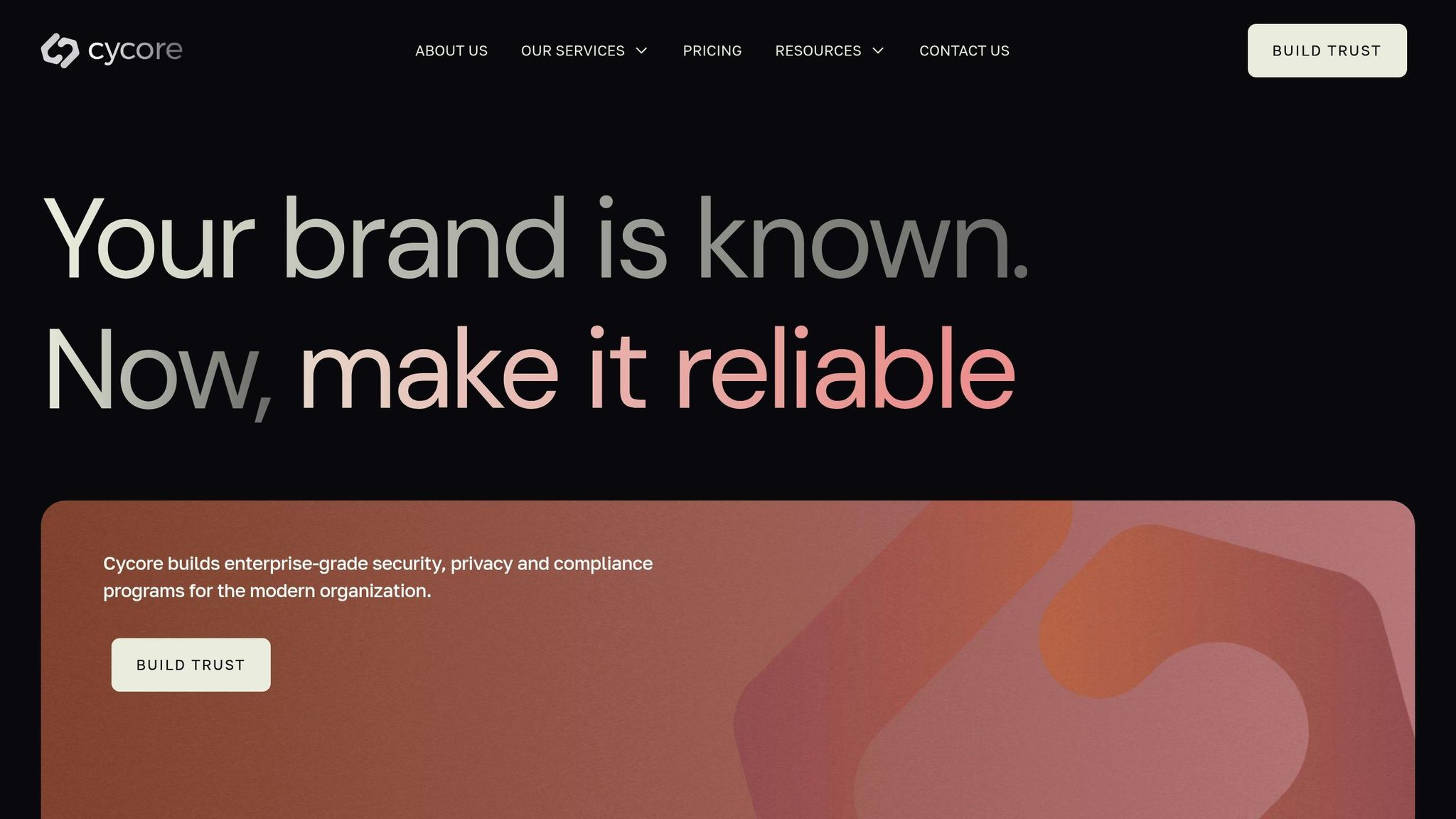
Cycore goes beyond automation by offering expert services designed to tackle the more intricate aspects of compliance. Their comprehensive solutions are tailored to assist businesses at every step of their compliance journey.
Virtual CISO (vCISO) Services provide organizations with experienced security leadership without the cost of hiring a full-time Chief Information Security Officer. This service is ideal for start-ups focusing on SOC 2 compliance or mid-sized companies managing multiple frameworks like HIPAA and ISO 27001.
"Our Virtual CISO (Chief Information Security Officer) service offers expert security leadership without the full-time cost." - Cycore
Virtual Data Protection Officer (vDPO) Services help businesses adhere to data privacy regulations such as GDPR. This is particularly valuable for organizations handling European customer data or expanding into international markets. Cycore ensures your data handling practices and breach response protocols meet regulatory standards.
GRC Tool Administration Services address challenges in managing compliance platforms. Cycore handles the setup, configuration, maintenance, and updates for tools like Drata, Vanta, Secureframe, and Thoropass, making it easier for businesses to stay on track.
"Our GRC (Governance, Risk, and Compliance) Tool Admin Services simplify managing compliance tools." - Cycore
Cycore's expertise delivers measurable results. For instance, ReadMe improved its compliance efficiency by leveraging Cycore's GRC services, cutting security questionnaire response times by 66% and saving 1,656 hours annually. Cycore supports over 15 compliance frameworks and offers flexible pricing options. Whether you're a start-up focusing on a single framework or a larger enterprise needing custom integrations, they have solutions to fit your needs.
"Cycore provided exemplary service in managing our compliance needs. Their team's experience is evident with how quickly they were able to solve our challenges." - David Kim, Co-Founder, Monterra
sbb-itb-ec1727d
Ready-to-Use Checklists and Templates
Having the right documentation is key to ensuring a smooth compliance assessment. These tools are designed to help you organize your self-assessment process and prepare the necessary documentation for regulatory compliance. Think of this as the foundation for building detailed checklists and templates.
Compliance Self-Assessment Checklist
A well-structured self-assessment checklist acts as your guide for evaluating compliance across various frameworks. It helps you assess audit readiness and spot gaps before external auditors step in.
Start by defining your compliance goals and scope. Identify which systems, processes, and data are involved in the controls you're evaluating. Make sure to address the five trust services criteria - security, availability, processing integrity, confidentiality, and privacy - and examine how each applies to your data handling practices.
Pay close attention to vulnerability management and risk mitigation. This means reviewing your patch management processes, security monitoring, and incident response procedures. Document any discrepancies between your current practices and the requirements of your chosen compliance framework.
Since the American Institute of Certified Public Accountants (AICPA) doesn’t provide an official SOC 2 checklist, organizations must create their own tools. Your checklist should demonstrate that a strong security policy is in place, reassuring customers and investors that your systems are secure against cyber threats.
Address any gaps you identify immediately. Keep detailed records of your self-assessment, including reports, screenshots, and signed documents. Once this is done, conduct a final readiness assessment to confirm that your security controls are functioning correctly before the third-party audit.
Document Templates for Compliance
After completing your checklist, use tailored document templates to formalize your policies and procedures. These templates simplify the creation of essential compliance documents, offering a customizable starting point for your organization.
Secureframe provides a variety of templates, including a SOC 2 Information Security Policy template, Business Continuity Plan template, Change Management Policy template, Data Classification Policy template, Incident Response Plan template, Risk Mitigation Plan template, and Vendor Management Policy template.
"The SOC 2 Information Security Policy is a cornerstone document for SOC 2 compliance. It provides a high-level overview of how an organization approaches information security." - Secureframe
ComplianceForge offers editable cybersecurity documentation templates for multiple compliance needs, such as CMMC, NIST SP 800-171, ISO 27001, NY DFS 23 NYCRR 500, EU GDPR, RMF, FedRAMP, PCI DSS, and HIPAA. These templates cover policies, standards, procedures, supply chain risk management, and more.
"ComplianceForge specializes in editable cybersecurity documentation templates that save our clients considerable time and money." - ComplianceForge
For organizations requiring System Security Plan (SSP) and Plan of Action and Milestones (POA&M) documents formatted for U.S. standards, ComplianceForge also offers these critical templates. With experience dating back to 2005, their team has developed documentation that meets a wide range of cybersecurity and data privacy requirements.
"At ComplianceForge, we have been writing cybersecurity documentation since 2005. Our documentation can help organizations meet common cybersecurity and data privacy compliance obligations, including CMMC, NIST SP 800-171, ISO 27001, NY DFS 23 NYCRR 500, EU GDPR, RMF, FedRAMP, PCI DSS, HIPAA, FACTA, GLBA and others." - ComplianceForge
Other resources include Vanta, which offers free downloadable ISO 27001 templates, and StrongDM, which provides an open-source collection called Comply, featuring 24 pre-authored SOC 2 policy templates editable in markdown format. Sprinto also offers SOC 2 templates, including Risk Assessment & Management Policy, Vendor Management Policy, Cloud Security Policy, and Incident Management Policy.
While templates are a great starting point, they must be customized to fit your organization's specific needs. Choose editable templates from trusted sources like compliance experts or cybersecurity firms, and have them reviewed by someone familiar with your security practices.
Conclusion
Following the step-by-step process outlined earlier, regular self-assessments are key to strengthening your compliance strategy. This involves identifying the right frameworks, analyzing your IT systems and data practices, comparing them to industry standards, and implementing actionable fixes.
Here’s why this matters: 60% of small businesses shut down within six months of a data breach. And in 2024, the global average cost of a data breach hit $4.88 million. Regular self-assessments allow you to pinpoint weaknesses before they turn into costly security problems. They also show your customers and partners that you're serious about data protection.
Beyond reducing risks, proactive compliance can boost operational success. It can cut costs and open doors to new markets with strict regulatory requirements. Considering that 95% of cybersecurity breaches result from human error, having structured assessment processes and ongoing employee training is more important than ever.
The secret to effective self-assessment lies in consistent execution and thorough documentation. Keep your security policies up to date, train your team on compliance expectations, and create detailed checklists to ensure nothing is overlooked during audits. Compliance isn’t a one-and-done effort - it’s a continuous process requiring regular updates and attention.
For organizations aiming to simplify their compliance efforts, expert support can be a game-changer. Cycore's professional services offer tailored assistance across frameworks like SOC2, HIPAA, ISO27001, and GDPR. Whether you need Virtual CISO services, GRC tool management, or audit support, working with experienced compliance professionals can help you move from struggling with requirements to confidently meeting them.
Investing in regular self-assessments pays off by lowering risk, improving efficiency, and building customer trust. Start evaluating your security posture and aligning with the right frameworks today.
FAQs
How can I choose the right cybersecurity compliance framework for my business?
Choosing the right cybersecurity compliance framework hinges on your industry, company size, and specific risks. Start by pinpointing the regulations that directly affect your operations. For example, healthcare organizations need to comply with HIPAA, while businesses handling data from EU customers must adhere to GDPR. Beyond these, frameworks like SOC 2, ISO 27001, and NIST offer robust standards tailored to various organizational needs.
To narrow down your options, conduct a self-assessment to evaluate your security requirements and risk tolerance. Industry-specific guidelines can also serve as a helpful resource. Opting for a framework that aligns with your business objectives can simplify risk management, make compliance more efficient, and ensure you're prepared for audits or external reviews.
What challenges do businesses commonly face with cybersecurity compliance, and how can they address them?
Many businesses face hurdles when it comes to cybersecurity compliance. Limited resources, the complexity of regulations, and a shortage of skilled cybersecurity professionals often stand in the way. These challenges can make meeting standards like SOC 2, HIPAA, ISO 27001, and GDPR feel like an uphill battle.
To tackle these obstacles, companies can take a few practical steps:
- Simplify compliance tasks by using tools and frameworks that make assessments and documentation less overwhelming.
- Offer employee training to boost security awareness and minimize mistakes caused by human error.
- Prioritize resources wisely, focusing on areas with the highest risk to make compliance efforts more effective and manageable.
By taking these steps, businesses can build a stronger compliance framework and lower the chances of facing penalties or data breaches.
How do automated tools and professional services make cybersecurity compliance easier?
Automated tools and expert services make staying compliant with cybersecurity standards much easier. They take care of repetitive tasks, keep a constant watch on your compliance status, and reduce the need for manual work. This not only saves time but also lowers the risk of human error, helping businesses stay on track with standards like SOC2, HIPAA, ISO27001, and GDPR.
With features like real-time compliance tracking and automated workflows, these tools can spot potential issues, simplify audit preparation, and ensure regulatory requirements are met more efficiently and accurately.


